
Sickening Profits:
The Global Food System’s
Poisoned Food and Toxic Wealth
by
Colin Todhunter
About the Author
Colin Todhunter is a Research Associate of the Centre for Research on Globalization (CRG). In 2018, he was named a Living Peace and Justice Leader/Model by Engaging Peace Inc. in recognition of his writings.
With reference to the section on India in the author’s 2022 e-book Food, Dispossession and Dependency. Resisting the New World Order, Aruna Rodrigues, lead petitioner in the GMO mustard Public Interest Litigation in the Supreme Court of India, stated:
“Colin Todhunter at his best: this is graphic, a detailed horror tale in the making for India, an exposé on what is planned, via the farm laws, to hand over Indian sovereignty and food security to big business. There will come a time pretty soon — (not something out there but imminent, unfolding even now), when we will pay the Cargills, Ambanis, Bill Gates, Walmarts — in the absence of national buffer food stocks (an agri policy change to cash crops, the end to small-scale farmers, pushed aside by contract farming and GM crops) — we will pay them to send us food and finance borrowing from international markets to do it.”
Table of Contents
Introduction
Chapter I:
BlackRock’s Economic Warfare on Humanity
Chapter II:
Millions Suffer as Junk Food Corporations Rake in Global Profits
Chapter III:
Fast-Food Graveyard: Sickened for Profit
Chapter IV:
Toxic Contagion: Funds, Food and Pharma
Chapter V:
Rachel Carson and Monsanto: The Silence of Spring
Chapter VI:
From Union Carbide to Syngenta: Pouring Poison
Chapter VII:
GMOs Essential to Feed the World? Case Study India
Chapter VIII:
Food Transition: A Greenwashed Corporate Power Grab
Chapter IX:
Challenging the Ecomodernist Dystopia
Chapter X:
The Netherlands: Template for a Brave New World?
Chapter XI:
Resisting Genetically Mutilated Food and Eco-Modernism
Chapter XII:
Post-COVID Food Crisis by Design?
Introduction
This is a follow up to the author’s e-book Food, Dispossession and Dependency — Resisting the New World Order, which was originally published in February 2022 by Global Research and is hosted on the Centre for Research on Globalization’s [CRG] website.
That book set out some key trends affecting food and agriculture, including the prevailing model of industrial, chemical-intensive farming and its deleterious impacts. Alternatives to that model were discussed, specifically agroecology. The book also looked at the farmers’ struggle in India and how the COVID-19 ‘pandemic’ was being used to manage a crisis of capitalism and the restructuring of much of the global economy, including food and agriculture.
This new e-book begins by examining how the modern food system is being shaped by the capitalist imperative for profit, with specific focus on the situation in Ukraine, and discusses the role of the world’s most powerful investment management firm, BlackRock. It then goes on to describe how people (not least children) are being sickened by corporations and a system that thrives on the promotion of ‘junk’ (ultra-processed) food laced with harmful chemicals and the use of toxic agrochemicals.
It’s a highly profitable situation for investment firms like BlackRock, Vanguard, State Street, Fidelity and Capital Group and the food conglomerates they invest in. But BlackRock and others are not just heavily invested in the food industry. They also profit from illnesses and diseases resulting from the food system by having stakes in the pharmaceuticals sector as well. A win-win situation.
The book goes on to describe how lobbying by agri-food corporations and their well-placed, well-funded front groups ensures this situation prevails. They continue to capture policy-making and regulatory space at international and national levels and promote the notion that without their products the world would starve.
Moreover, they are now pushing a fake-green, ecomodernist narrative in an attempt to roll out their new proprietary technologies in order to further entrench their grip on a global food system that produces poor food, illness, environmental degradation, the eradication of smallholder farming, the undermining of rural communities, dependency and dispossession.
The final chapter looks at the broader geopolitical aspects of food and agriculture in a post-COVID world characterised by food inflation, hardship and multi-trillion-dollar global debt.
Modern Food System
The prevailing globalised agrifood model is built on unjust trade policies, the leveraging of sovereign debt to benefit powerful interests, population displacement and land dispossession. It fuels export-oriented commodity monocropping and food insecurity as well as soil and environmental degradation.
This model is responsible for increasing rates of illness, nutrient-deficient diets, a narrowing of the range of food crops, water shortages, chemical runoffs, increasing levels of farmer indebtedness and the eradication of biodiversity.
It relies on a policy paradigm that privileges urbanisation, global markets, long supply chains, external proprietary inputs, highly processed food and market (corporate) dependency at the expense of rural communities, small independent enterprises and smallholder farms, local markets, short supply chains, on-farm resources, diverse agroecological cropping, nutrient dense diets and food sovereignty.
There are huge environmental, social and health issues that stem from how much of our food is currently produced and consumed. A paradigm shift is required.
The second edition of the United Nations Food Systems Summit (UNFSS) took place in July 2023. The UNFSS has claimed that it aims to deliver the latest evidence-based, scientific approaches from around the world, launch a set of fresh commitments through coalitions of action and mobilise new financing and partnerships. These ‘coalitions of action’ revolve around implementing a ‘food transition’ that is more sustainable, efficient and environmentally friendly.
Founded on a partnership between the United Nations (UN) and the World Economic Forum (WEF), the UNFSS is, however, disproportionately influenced by corporate actors, lacks transparency and accountability and diverts energy and financial resources away from the real solutions needed to tackle the multiple hunger, environmental and health crises.
According to an article on The Canary website, key multi-stakeholder initiatives (MSIs) appearing at the 2023 summit included the WEF, the Consultative Group on International Agricultural Research, EAT (EAT Forum, EAT Foundation and EAT-Lancet Commission on Sustainable Healthy Food Systems), the World Business Council on Sustainable Development and the Alliance for a Green Revolution in Africa.
The global corporate agrifood sector, including Coca-Cola, Danone, Kelloggs, Nestlé, PepsiCo, Tyson Foods, Unilever, Bayer and Syngenta, were also out in force along with Dutch Rabobank, the Mastercard Foundation, the Bill and Melinda Gates Foundation and the Rockefeller Foundation.
Through its ‘strategic partnership’ with the UN, the WEF regards MSIs as key to achieving its vision of a ‘great reset’ — in this case, a food transition. The summit comprises a powerful alliance of global corporations, influential foundations and rich countries that are attempting to capture the narrative of ‘food systems transformation’. These interests aim to secure greater corporate concentration and agribusiness leverage over public institutions.
The UN is knowingly giving the very corporations sponsoring the current deleterious food system prime seats at the table. It is precisely these corporations who already shape the state of the global food regime. The solutions cannot be found in the corporate capitalist system that manufactured the problems described.
Challenging Corporate Power
During a press conference in July 2023, representatives from the People’s Autonomous Response to the UNFSS highlighted the urgent, coordinated actions required to address global food-related issues. The response came in the form of a statement from those representing food justice movements, small-scale food producer organisations and indigenous peoples.
The statement denounced the United Nations’ approach. Saúl Vicente from the International Indian Treaty Council said that the summit’s organisers aimed to sell their corporate and industrial project as ‘transformation’.
The movements and organisations opposing the summit called for a rapid shift away from corporate-driven industrial models towards biodiverse, agroecological, community-led food systems that prioritise the public interest over profit making. This entails guaranteeing the rights of peoples to access and control land and productive resources while promoting agroecological production and peasant seeds.
The response to the summit added that, despite the increasing recognition that industrial food systems are failing on so many fronts, agribusiness and food corporations continue to try to maintain their control. They are deploying digitalisation, artificial intelligence and other information and communication technologies to promote a new wave of farmer dependency or displacement, resource grabbing, wealth extraction and labour exploitation and to re-structure food systems towards a greater concentration of power and ever more globalised value chains.
Shalmali Guttal, from Focus on the Global South, said that people from all over the world have presented concrete, effective strategies based on food sovereignty, agroecology, the revitalisation of biodiversity and territorial markets and a solidarity-based economy. The evidence is overwhelming — the solutions devised by small-scale food producers not only feed the world but also advance gender, social, economic justice, youth empowerment, workers’ rights and real resilience to crises.
However, the UN has climbed into bed with the elitist, unaccountable WEF, corporate agrifood and big data giants, which have no time for democratic governance.
A report by FIAN International was released in parallel to the statement from the People’s Autonomous Response. The report — Food Systems Transformation – In which direction? — calls for an urgent overhaul of the global food governance architecture to guarantee decision making that prioritises the public good and the right to food for all.
Sofia Monsalve, secretary general of FIAN International, says:
“The main stumbling block for taking effective action towards more resilient, diversified, localized and agroecological food systems are the economic interests of those who advance and benefit from corporate-driven industrial food systems.”
These interests are promoting multi-stakeholderism: a process that involves corporations and their front groups and armies of lobbyists co-opting public bodies to act on their behalf in the name of ‘feeding the world’ and ‘sustainability’.
A process that places powerful private interests in the driving seat, steering policy makers to facilitate corporate needs while sidelining the strong concerns and solutions being forwarded by many civil society, small-scale food producers’ and workers’ organisations and indigenous peoples as well as prominent academics.
The very corporations that are responsible for the problems of the prevailing food system. They offer more of the same, this time packaged in a biosynthetic, genetically engineered, bug-eating, ecomodernist, fake-green wrapping.
While more than 800 million people go to bed hungry under the current food regime, these corporations and their wealthy investors continue to hunger for ever more profit and control. The economic system ensures they are not driven by food justice or any kind of justice. They are compelled to maximise profit, not least, for instance, by assigning an economic market value to all aspects of nature and social practices, whether knowledge, land, data, water, seeds or systems of resource exchange.
By cleverly (and cynically) ensuring that the needs of global markets (that is, the needs of corporate supply chains and their profit-seeking strategies) have become synonymous with the needs of modern agriculture, these corporations have secured a self-serving hegemonic policy paradigm among decision makers that is deeply embedded.
It is for good reason that the People’s Autonomous Response to the UNFSS calls for a mass mobilisation to challenge the power that major corporate interests wield:
“[This power] must be dismantled so that the common good is privileged before corporate interests. It is time to connect our struggles and fight together for a better world based on mutual respect, social justice, equity, solidarity and harmony with our Mother Earth.”
This may seem like a tall order, especially given the financialization of the food and agriculture sector, which has developed in tandem with the neoliberal agenda and the overall financialization of the global economy. It means that extremely powerful firms like BlackRock — which hold shares in a number of the world’s largest food and agribusiness companies — have a lot riding on further entrenching the existing system.
But there is hope. In 2021, the ETC Group and the International Panel of Experts on Sustainable Food Systems released the report A Long Food Movement: Transforming Food Systems by 2045. It calls for grassroots organisations, international NGOs, farmers’ and fishers’ groups, cooperatives and unions to collaborate more closely to transform financial flows and food systems from the ground up.
The report’s lead author, Pat Mooney, says that civil society can fight back and develop healthy and equitable agroecological production systems, build short (community-based) supply chains and restructure and democratise governance structures.
Chapter I:
BlackRock’s Economic Warfare on Humanity
Why is much modern food of inferior quality? Why is health suffering and smallholder farmers who feed most of the world being forced out of agriculture?
Mainly because of the mindset of the likes of Larry Fink of BlackRock — the world’s biggest asset management firm — and the economic system they profit from and promote.
Image: Larry Fink

In 2011, Fink said agricultural and water investments would be the best performers over the next 10 years.
Fink Stated:
“Go long agriculture and water and go to the beach.”
Unsurprisingly then, just three years later, in 2014, the Oakland Institute found that institutional investors, including hedge funds, private equity and pension funds, were capitalising on global farmland as a new and highly desirable asset class.
Funds tend to invest for a 10-15-year period, resulting in good returns for investors but often cause long-term environmental and social devastation. They undermine local and regional food security through buying up land and entrenching an industrial, export-oriented model of agriculture.
In September 2020, Grain.org showed that private equity funds — pools of money that use pension funds, sovereign wealth funds, endowment funds and investments from governments, banks, insurance companies and high net worth individuals — were being injected into the agriculture sector throughout the world.
This money was being used to lease or buy up farms on the cheap and aggregate them into large-scale, US-style grain and soybean concerns. Offshore tax havens and the European Bank for Reconstruction and Development had targeted Ukraine in particular.
Plundering Ukraine
Western agribusiness had been coveting Ukraine’s agriculture sector for quite some time. That country contains one third of all arable land in Europe. A 2015 article by Oriental Review noted that, since the mid-90s, Ukrainian-Americans at the helm of the US-Ukraine Business Council have been instrumental in encouraging the foreign control of Ukrainian agriculture.
In November 2013, the Ukrainian Agrarian Confederation drafted a legal amendment that would benefit global agribusiness producers by allowing the widespread use of genetically modified (GM) seeds.
Even before the conflict in the country, the World Bank incorporated measures relating to the sale of public agricultural land as conditions in a $350 million Development Policy Loan (COVID ‘relief package’) to Ukraine. This included a required ‘prior action’ to “enable the sale of agricultural land and the use of land as collateral.”
Professor Olena Borodina of the National Academy of Sciences of Ukraine says:
“Today, thousands of rural boys and girls, farmers, are fighting and dying in the war. They have lost everything. The processes of free land sale and purchase are increasingly liberalised and advertised. This really threatens the rights of Ukrainians to their land, for which they give their lives.”
Borodina is quoted in the February 2023 report by the Oakland Institute War and Theft: The Takeover of Ukraine’s Agricultural Land, which reveals how oligarchs and financial interests are expanding control over Ukraine’s agricultural land with help and financing from Western financial institutions.
Aid provided to Ukraine in recent years has been tied to a drastic structural adjustment programme requiring the creation of a land market through a law that leads to greater concentration of land in the hands of powerful interests. The programme also includes austerity measures, cuts in social safety nets and the privatisation of key sectors of the economy.
Frédéric Mousseau, co-author of the report, says:
“Despite being at the centre of news cycle and international policy, little attention has gone to the core of the conflict — who controls the agricultural land in the country known as the breadbasket of Europe. [The] Answer to this question is paramount to understanding the major stakes in the war.”
The report shows the total amount of land controlled by oligarchs, corrupt individuals and large agribusinesses is over nine million hectares — exceeding 28 per cent of Ukraine’s arable land (the rest is used by over eight million Ukrainian farmers).
The largest landholders are a mix of Ukrainian oligarchs and foreign interests — mostly European and North American as well as the sovereign fund of Saudi Arabia. A number of large US pension funds, foundations and university endowments are also invested in Ukrainian land through NCH Capital — a US-based private equity fund, which is the fifth largest landholder in the country.
President Zelenskyy put land reform into law in 2020 against the will of the vast majority of the population who feared it would exacerbate corruption and reinforce control by powerful interests in the agricultural sector.
The Oakland Institute notes that, while large landholders are securing massive financing from Western financial institutions, Ukrainian farmers — essential for ensuring domestic food supply — receive virtually no support. With a land market in place, amid high economic stress and war, this difference of treatment will lead to more land consolidation by large agribusinesses.
All but one of the 10 largest landholding firms are registered overseas, mainly in tax havens such as Cyprus or Luxembourg. The report identifies many prominent investors, including Vanguard Group, Kopernik Global Investors, BNP Asset Management Holding, Goldman Sachs-owned NN Investment Partners Holdings and Norges Bank Investment Management, which manages Norway’s sovereign wealth fund.
Most of the agribusiness firms are substantially indebted to Western financial institutions, in particular the European Bank for Reconstruction and Development, the European Investment Bank, and the International Finance Corporation — the private sector arm of the World Bank.
Together, these institutions have been major lenders to Ukrainian agribusinesses, with close to US$1.7 billion lent to just six of Ukraine’s largest landholding firms in recent years. Other key lenders are a mix of mainly European and North American financial institutions, both public and private.
The report notes that this gives creditors financial stakes in the operation of the agribusinesses and confers significant leverage over them. Meanwhile, Ukrainian farmers have had to operate with limited amounts of land and financing, and many are now on the verge of poverty.
According to the Oakland Institute, small-scale farmers in Ukraine demonstrate resilience and enormous potential for leading the expansion of a different production model based on agroecology and producing healthy food. Whereas large agribusinesses are geared towards export markets, it is Ukraine’s small and medium-sized farmers who guarantee the country’s food security.
This is underlined by the State Statistics Service of Ukraine in its report ‘Main agricultural characteristics of households in rural areas in 2011’, which showed that smallholder farmers in Ukraine operate 16 per cent of agricultural land, but provide 55 per cent of agricultural output, including 97 per cent of potatoes, 97 per cent of honey, 88 per cent of vegetables, 83 per cent of fruits and berries and 80 per cent of milk.
The Oakland Institute states:
“Ukraine is now the world’s third-largest debtor to the International Monetary Fund and its crippling debt burden will likely result in additional pressure from its creditors, bondholders and international financial institutions on how post-war reconstruction — estimated to cost US$750 billion — should happen.”
Financial institutions are leveraging Ukraine’s crippling debt to drive further privatisation and liberalisation — backing the country into a corner to make it an offer it can’t refuse.

An airman loads weapons cargo bound for Ukraine onto a C-17 Globemaster III during a security assistance mission at Dover Air Force Base, Delaware, Sept. 14, 2022. (U.S. Air Force photo by Staff Sgt. Marco A. Gomez)
Since the war began, the Ukrainian flag has been raised outside parliament buildings in the West and iconic landmarks have been lit up in its colours. An image bite used to conjure up feelings of solidarity and support for that nation while serving to distract from the harsh machinations of geopolitics and modern-day economic plunder that is unhindered by national borders and has scant regard for the plight of ordinary citizens.
It is interesting to note that Larry Fink and BlackRock are to ‘coordinate’ investment in ‘rebuilding’ Ukraine.
An official statement released in late December 2022 said the agreement with BlackRock would:
“… focus in the near term on coordinating the efforts of all potential investors and participants in the reconstruction of our country, channelling investment into the most relevant and impactful sectors of the Ukrainian economy.”
According to the Code Pink organisation, BlackRock has $5.7 billion invested in Boeing, $2 billion in General Dynamics; $4.6 billion in Lockheed Martin; $2.6 billion in Northrop Grumman; and $6 billion in Raytheon. It profits from both destruction and reconstruction.
Since the start of the conflict in Ukraine in February 2022, billions of dollars’ worth of military hardware have been sent to Ukraine by the EU. By late February 2023, it had forwarded €3.6 billion worth of military assistance to the Zelensky regime via the European Peace Fund. However, even at that time, the total cost for EU countries could have been closer to €6.9 billion.
In late June 2023, the European Union (EU) pledged a further €3.5 billion in military aid.
Great news for European and UK armaments companies like BAE Systems, Saab and Rheinmetall, which are raking in huge profits from the destruction of Ukraine (see the CNN Business report Europe’s arms spending on Ukraine boosts defense companies).
US arms manufacturers like Raytheon and Lockheed Martin are also acquiring multi-billion-dollar contracts (as outlined in the online articles Raytheon wins $1.2 billion surface-to-air missile order for Ukraine and Pentagon readies new $2 billion Ukraine air defense package including missiles).
Meanwhile, away from the boardrooms, business conferences and high-level strategizing, hundreds of thousands of ordinary young Ukrainians have died.
Irish Members of the European Parliament Mick Wallace and Clare Daly have been staunch critics of the EU stance on Ukraine (see Clare Daly talking in the EU parliament about Ukraine burning through a generation of men on YouTube).
Wallace addressed the EU Parliament in June 2023, describing the heist currently taking place in that country by Western corporations.
Wallace said:
“The damage to Ukraine is devastating. Towns and cities that endured for hundreds of years don’t exist anymore. We must recognise that these towns, cities and surrounding lands were long being stolen by local oligarchs colluding with global financial capital. This theft quickened with the onset of the war in 2014.
“The pro-Western government opened the doors wide for massive structural adjustment and privatisation programmes spearheaded by the European Bank for Reconstruction and Development, the International Monetary Fund (IMF) and the World Bank. Zelensky used the current war to concentrate power and accelerate the corporate fire sale. He banned opposition parties that were resisting deeply unpopular reforms to the laws restricting the sale of land to foreign investors.
“Over three million hectares of agricultural land are now owned by companies based in Western tax havens. Ukraine’s mineral deposits alone are worth over $12 trillion. Western companies are licking their lips.
“What are the working-class people of Ukraine dying for?”
Hard-edged Rock
BlackRock is a publicly owned investment manager that primarily provides its services to institutional, intermediary and individual investors. The firm exists to put its assets to work to make money for its clients. And it must ensure the financial system functions to secure this goal. And this is exactly what it does.
Back in 2010, the farmlandgrab.org website reported that BlackRock’s global agriculture fund would target (invest in) companies involved with agriculture-related chemical products, equipment and infrastructure, as well as soft commodities and food, biofuels, forestry, agricultural sciences and arable land.
According to research by Global Witness, it has since indirectly profited from human rights and environmental abuses through investing in banks notorious for financing harmful palm oil firms (see the article The true price of palm oil, 2021).
Blackrock’s Global Consumer Staples exchange rated fund (ETF), which was launched in 2006 and, according to the article The rise of financial investment and common ownership in global agrifood firms (Review of International Political Economy, 2019), has:
“US$560 million in assets under management, holds shares in a number of the world’s largest food companies, with agrifood stocks making up around 75 per cent of the fund. Nestlé is the funds’ largest holding, and other agrifood firms that make up the fund include Coca-Cola, PepsiCo, Walmart, Anheuser Busch InBev, Mondelez, Danone, and Kraft Heinz.”
The article also states that BlackRock’s iShares Core S&P 500 Index ETF has $150 billion in assets under management. Most of the top publicly traded food and agriculture firms are part of the S&P 500 index and BlackRock holds significant shares in those firms.
The author of the article, Professor Jennifer Clapp, also notes BlackRock’s COW Global Agriculture ETF has $231 million in assets and focuses on firms that provide inputs (seeds, chemicals and fertilizers) and farm equipment and agricultural trading companies. Among its top holdings are Deere & Co, Bunge, ADM and Tyson. This is based on BlackRock’s own data from 2018.
Jennifer Clapp states:
“Collectively, the asset management giants — BlackRock, Vanguard, State Street, Fidelity, and Capital Group — own significant proportions of the firms that dominate at various points along agrifood supply chains. When considered together, these five asset management firms own around 10–30 per cent of the shares of the top firms within the agrifood sector.”
BlackRock et al are heavily invested in the success of the prevailing globalised system of food and agriculture.
They profit from an inherently predatory system that — focusing on the agrifood sector alone — has been responsible for, among other things, the displacement of indigenous systems of production, the impoverishment of many farmers worldwide, the destruction of rural communities and cultures, poor-quality food and illness, less diverse diets, ecological destruction and the proletarianization of independent producers.
Due to their size, according to journalist Ernst Wolff, BlackRock and its counterpart Vanguard exert control over governments and important institutions like the European Central Bank (ECB) and the US Federal Reserve. BlackRock and Vanguard have more financial assets than the ECB and the Fed combined.
BlackRock currently has $10 trillion in assets under its management and, to underline the influence of the firm, Fink himself is a billionaire who sits on the board of the WEF and the powerful and highly influential Council for Foreign Relations, often referred to as the shadow government of the US — the real power behind the throne.
Researcher William Engdahl says that since 1988 the company has put itself in a position to de facto control the Federal Reserve, most Wall Street mega-banks, including Goldman Sachs, the Davos WEF great reset and now the Biden administration.
Engdahl describes how former top people at BlackRock are now in key government positions, running economic policy for the Biden administration, and that the firm is steering the ‘great reset’ and the global ‘green’ agenda.
Fink recently eulogised about the future of food and ‘coded’ seeds that would produce their own fertiliser. He says this is “amazing technology”. This technology is years away and whether it can deliver on what he says is another thing.
More likely, it will be a great investment opportunity that is par for the course as far as genetically modified organisms (GMOs) in agriculture are concerned: a failure to deliver on its inflated false promises. And even if it does eventually deliver, a whole host of ‘hidden costs’ (health, social, ecological etc.) will probably emerge.
And that’s not idle speculation. We need look no further than previous ‘interventions’ in food/farming under the guise of Green Revolution technologies, which did little if anything to boost overall food production (in India at least, according to Professor Glenn Stone in his paper New Histories of the Green Revolution) but brought with it tremendous ecological, environmental and social costs and adverse impacts on human health, highlighted by many researchers and writers, not least in Bhaskar Save’s open letter to Indian officials and the work of Vandana Shiva.
However, the Green Revolution entrenched seed and agrichemical giants in global agriculture and ensured farmers became dependent on their proprietary inputs and global supply chains. After all, value capture was a key aim of the project.
But why should Fink care about these ‘hidden costs’, not least the health impacts?
Well, actually, he probably does — with his eye on investments in ‘healthcare’ and Big Pharma. BlackRock’s investments support and profit from industrial agriculture as well as the hidden costs.
Poor health is good for business (for example, see on the BlackRock website BlackRock on healthcare investment opportunities amid Covid-19). Scroll through BlackRock’s website and it soon becomes clear that it sees the healthcare sector as a strong long-term bet.
And for good reason. For instance, increased consumption of ultra-processed foods (UPFs) was associated with more than 10 per cent of all-cause premature, preventable deaths in Brazil in 2019 according to a peer-reviewed study in the American Journal of Preventive Medicine.
The findings are significant not only for Brazil but more so for high income countries such as the US, Canada, the UK and Australia, where UPFs account for more than half of total calorific intake. Brazilians consume far less of these products than countries with high incomes. This means the estimated impact would be even higher in richer nations.
Due to corporate influence over trade deals, governments and the World Trade Organization (WTO), transnational food retail and food processing companies continue to colonise markets around the world and push UPFs.
In Mexico, global agrifood companies have taken over food distribution channels, replacing local foods with cheap processed items. In Europe, more than half the population of the European Union is overweight or obese, with the poor especially reliant on high-calorie, poor nutrient quality food items.
Larry Fink is good at what he does — securing returns for the assets his company holds. He needs to keep expanding into or creating new markets to ensure the accumulation of capital to offset the tendency for the general rate of profit to fall. He needs to accumulate capital (wealth) to be able to reinvest it and make further profits.
When capital struggles to make sufficient profit, productive wealth (capital) over accumulates, devalues and the system goes into crisis. To avoid crisis, capitalism requires constant growth, expanding markets and sufficient demand.
And that means laying the political and legislative groundwork to facilitate this. In India, for example, the now-repealed three farm laws of 2020 would have provided huge investment opportunities for the likes of BlackRock. These three laws — imperialism in all but name — represented a capitulation to the needs of foreign agribusiness and asset managers who require access to India’s farmland.
The laws would have sounded a neoliberal death knell for India’s food sovereignty, jeopardised its food security and destroyed tens of millions of livelihoods. But what matters to global agricapital and investment firms is facilitating profit and maximising returns on investment.
This has been a key driving force behind the modern food system that sees around a billion people experiencing malnutrition in a world of food abundance. That is not by accident but by design — inherent to a system that privileges corporate profit ahead of human need.
The modern agritech/agribusiness sector uses notions of it and its products being essential to ‘feed the world’ by employing ‘amazing technology’ in an attempt to seek legitimacy. But the reality is an inherently unjust globalised food system, farmers forced out of farming or trapped on proprietary product treadmills working for corporate supply chains and the public fed GMOs, more ultra-processed products and lab-engineered food.
A system that facilitates ‘going long and going to the beach’ serves elite interests well. For vast swathes of humanity, however, economic warfare is waged on them every day courtesy of a hard-edged (black) rock.
Chapter II:
Millions Suffer as Junk Food Corporations Rake in Global Profits
As mentioned in the previous chapter, increased consumption of ultra-processed foods (UPFs) was associated with more than 10 per cent of all-cause premature, preventable deaths in Brazil in 2019. That is the finding of a peer-reviewed study in the American Journal of Preventive Medicine.

UPFs are ready-to-eat-or-heat industrial formulations made with ingredients extracted from foods or synthesised in laboratories. These have gradually been replacing traditional foods and meals made from fresh and minimally processed ingredients in many countries.
The study found that approximately 57,000 deaths in one year could be attributed to the consumption of UPFs — 10.5 per cent of all premature deaths and 21.8 [per cent of all deaths from preventable noncommunicable diseases in adults aged 30 to 69.
The study’s lead investigator Eduardo AF Nilson states:
“To our knowledge, no study to date has estimated the potential impact of UPFs on premature deaths.”
Across all age groups and sex strata, consumption of UPFs ranged from 13 per cent to 21 per cent of total food intake in Brazil during the period studied.
UPFs have steadily replaced the consumption of traditional whole foods, such as rice and beans, in Brazil.
Reducing consumption of UPFs by 10 to 50 per cent could potentially prevent approximately 5,900 to 29,300 premature deaths in Brazil each year. Based on this, hundreds of thousands of premature deaths could be prevented globally annually. And many millions more could be prevented from acquiring long-term, debilitating conditions.
Nilson adds:
“Consumption of UPFs is associated with many disease outcomes, such as obesity, cardiovascular disease, diabetes, some cancers and other diseases, and it represents a significant cause of preventable and premature deaths among Brazilian adults.”
Examples of UPFs are prepackaged soups, sauces, frozen pizza, ready-to-eat meals, hot dogs, sausages, sodas, ice cream, and store-bought cookies, cakes, candies and doughnuts.
And yet, due to trade deals, government support and WTO influence, transnational food retail and food processing companies continue to colonise markets around the world and push UPFs.
In Mexico, for instance, these companies have taken over food distribution channels, replacing local foods with cheap processed items, often with the direct support of the government. Free trade and investment agreements have been critical to this process and the consequences for public health have been catastrophic.
Mexico’s National Institute for Public Health released the results of a national survey of food security and nutrition in 2012. Between 1988 and 2012, the proportion of overweight women between the ages of 20 and 49 increased from 25 to 35 per cent and the number of obese women in this age group increased from 9 to 37 per cent. Some 29 per cent of Mexican children between the ages of 5 and 11 were found to be overweight, as were 35 per cent of the youngsters between 11 and 19, while one in 10 school age children experienced anaemia.
The North America Free Trade Agreement (NAFTA) led to the direct investment in food processing and a change in Mexico’s retail structure (towards supermarkets and convenience stores) as well as the emergence of global agribusiness and transnational food companies in the country.
NAFTA eliminated rules preventing foreign investors from owning more than 49 per cent of a company. It also prohibited minimum amounts of domestic content in production and increased rights for foreign investors to retain profits and returns from initial investments.
By 1999, US companies had invested 5.3 billion dollars in Mexico’s food processing industry, a 25-fold increase in just 12 years.
US food corporations also began to colonise the dominant food distribution networks of small-scale vendors, known as tiendas (corner shops). This helped spread nutritionally poor food as they allowed these corporations to sell and promote their foods to poorer populations in small towns and communities. By 2012, retail chains had displaced tiendas as Mexico’s main source of food sales.
A Spoonful of Deceit
Turning to Europe, more than half the population of the European Union (EU) is overweight or obese. Without effective action, this number will grow substantially by 2026.
That warning was issued in 2016 and was based on the report A Spoonful of Sugar: How the Food Lobby Fights Sugar Regulation in the EU by the research and campaign group Corporate Europe Observatory (CEO).
CEO noted that obesity rates were rising fastest among lowest socio-economic groups. That is because energy-dense foods of poor nutritional value are cheaper than more nutritious foods, such as vegetables and fruit, and relatively poor families with children purchase food primarily to satisfy their hunger.
The report argued that more people than ever before are eating processed foods as a large part of their diet. And the easiest way to make industrial, processed food cheap, long-lasting and enhance the taste is to add extra sugar as well as salt and fat to products.
In the United Kingdom, the cost of obesity was estimated at £27 billion per year in 2016, and approximately 7 per cent of national health spending in EU member states as a whole is due to obesity in adults.
The food industry has vigorously mobilised to stop vital public health legislation in this area by pushing free trade agreements and deregulation drives, exercising undue influence over regulatory bodies, capturing scientific expertise, championing weak voluntary schemes and outmanoeuvring consumer groups by spending billions on aggressive lobbying.
The leverage which food industry giants have over EU decision-making has helped the sugar lobby to see off many of the threats to its profit margins.
CEO argued that key trade associations, companies and lobby groups related to sugary food and drinks together spend an estimated €21.3 million (2016) annually to lobby the EU.
While industry-funded studies influence European Food Standards Authority decisions, Coca Cola, Nestlé and other food giants engage in corporate propaganda by sponsoring sporting events and major exercise programmes to divert attention from the impacts of their products and give the false impression that exercise and lifestyle choices are the major factors in preventing poor health.
Katharine Ainger, freelance journalist and co-author of CEO’s report, said:
“Sound scientific advice is being sidelined by the billions of euros backing the sugar lobby. In its dishonesty and its disregard for people’s health, the food and drink industry rivals the tactics we’ve seen from the tobacco lobby for decades.”
ILSI Industry Front Group
One of the best-known industry front groups with global influence is what a September 2019 report in the New York Times (NYT) called a “shadowy industry group” — the International Life Sciences Institute (ILSI).
The institute was founded in 1978 by Alex Malaspina, a Coca-Cola scientific and regulatory affairs leader. It started with an endowment of $22 million with the support of Coca Cola.

Since then, ILSI has been quietly infiltrating government health and nutrition bodies around the globe and has more than 17 branches that influence food safety and nutrition science in various regions.
Little more than a front group for its 400 corporate members that provide its $17 million budget, ILSI’s members include Coca-Cola, DuPont, PepsiCo, General Mills and Danone.
The NYT says ILSI has received more than $2 million from chemical companies, among them Monsanto. In 2016, a UN committee issued a ruling that glyphosate, the key ingredient in Monsanto’s weedkiller Roundup, was “probably not carcinogenic,” contradicting an earlier report by the WHO’s cancer agency. The committee was led by two ILSI officials.
From India to China, whether it has involved warning labels on unhealthy packaged food or shaping anti-obesity education campaigns that stress physical activity and divert attention from the food system itself, prominent figures with close ties to the corridors of power have been co-opted to influence policy in order to boost the interests of agri-food corporations.
As far back as 2003, it was reported by The Guardian newspaper that ILSI had spread its influence across the national and global food policy arena. The report talked about undue influence exerted on specific WHO/FAO food policies dealing with dietary guidelines, pesticide use, additives, trans-fatty acids and sugar.
In January 2019, two papers by Harvard Professor Susan Greenhalgh, in the BMJ and the Journal of Public Health Policy, revealed ILSI’s influence on the Chinese government regarding issues related to obesity. And in April 2019, Corporate Accountability released a report on ILSI titled Partnership for an Unhealthy Planet.
A 2017 report in the Times of India noted that ILSI-India was being actively consulted by India’s apex policy-formulating body — Niti Aayog. ILSI-India’s board of trustees was dominated by food and beverage companies — seven of 13 members were from the industry or linked to it (Mondelez, Mars, Abbott, Ajinomoto, Hindustan Unilever and Nestle) and the treasurer was Sunil Adsule of Coca-Cola India.
In India, ILSI’s expanding influence coincides with mounting rates of obesity, cardiovascular disease and diabetes.
In 2020, US Right to Know (USRTK) referred to a study published in Public Health Nutrition that helped to further confirm ILSI as little more than an industry propaganda arm.
The study, based on documents obtained by USRTK, uncovered “a pattern of activity in which ILSI sought to exploit the credibility of scientists and academics to bolster industry positions and promote industry-devised content in its meetings, journal, and other activities.”
Gary Ruskin, executive director of USRTK, a consumer and public health group, said:
“ILSI is insidious… Across the world, ILSI is central to the food industry’s product defence, to keep consumers buying the ultra-processed food, sugary beverages and other junk food that promotes obesity, type 2 diabetes and other ills.”
The study also revealed new details about which companies fund ILSI and its branches.
ILSI North America’s draft 2016 IRS form 990 shows a $317,827 contribution from PepsiCo, contributions greater than $200,000 from Mars, Coca-Cola and Mondelez and contributions greater than $100,000 from General Mills, Nestle, Kellogg, Hershey, Kraft, Dr Pepper Snapple Group, Starbucks Coffee, Cargill, Unilever and Campbell Soup.
ILSI’s draft 2013 Internal Revenue Service form 990 shows that it received $337,000 from Coca-Cola, and more than $100,000 each from Monsanto, Syngenta, Dow AgroSciences, Pioneer Hi-Bred, Bayer Crop Science and BASF.
Global institutions, like the WTO, and governments continue to act as the administrative arm of industry, boosting corporate profits while destroying public health and cutting short human life.
Part of the solution lies in challenging a policy agenda that privileges global markets, highly processed food and the needs of ‘the modern food system’ — meaning the bottom line of dominant industrial food conglomerates.
It also involves protecting and strengthening local markets, short supply chains and independent small-scale enterprises, including traditional food processing concerns and small retailers.
And, of course, we need to protect and strengthen agroecological, smallholder farming that bolsters nutrient-dense diets — more family farms and healthy food instead of more disease and allopathic family doctors.
Chapter III:
Fast-Food Graveyard: Sickened for Profit
The modern food system is responsible for making swathes of humanity ill, causing unnecessary suffering and sending many people to an early grave. It is part of a grotesque food-pharma conveyor belt that results in massive profits for the dominant agrifood and pharmaceuticals corporations.
Much of the modern food system has been shaped by big agribusiness concerns like Monsanto (now Bayer) and Cargill, giant food companies like Nestle, Pepsico and Kellog’s and, more recently, institutional investors like BlackRock, Vanguard and State Street.
For the likes of BlackRock, which invests in both food and pharma, fuelling a system increasingly based on ultra processed food (UPF) with its cheap and unhealthy ingredients is a sure-fire money spinner.
Toxic Junk
Consider that fast food is consumed by 85 million US citizens each day. Several chains are the primary suppliers of many school lunches. Some 30 million school meals are served to children each day. For millions of underprivileged children in the US, these meals are their only access to nutrition.
In 2022, Moms Across America (MAA) and Children’s Health Defense (CHD) commissioned the testing of school lunches and found that 5.3 per cent contained carcinogenic, endocrine-disrupting and liver disease-causing glyphosate; 74 per cent contained at least one of 29 harmful pesticides; four veterinary drugs and hormones were found in nine of the 43 meals tested; and all of the lunches contained heavy metals at levels up to 6,293 times higher than the US Environmental Protection Agency’s maximum levels allowed in drinking water. Moreover, the majority of the meals were abysmally low in nutrients.
As a follow up, MAA, a non-profit organisation, with support from CHD and the Centner Academy, decided to have the top 10 most popular fast-food brand meals extensively tested for 104 of the most commonly used veterinary drugs and hormones.

The Health Research Institute tested 42 fast-food meals from 21 locations nationwide. The top 10 brands tested were McDonald’s, Starbucks, Chick-fil-A, TacoBell, Wendy’s, Dunkin’ Donuts, Burger King, Subway, Domino’s and Chipotle.
Collectively, these companies’ annual gross sales are $134,308,000,000.
Three veterinary drugs and hormones were found in 10 fast-food samples tested. One sample from Chick-fil-A contained a contraceptive and antiparasitic called Nicarbazin, which has been prohibited.
Some 60 per cent of the samples contained the antibiotic Monesin, which is not approved by the US Food and Drug Administration for human use and has been shown to cause severe harm when consumed by humans.
And 40 per cent contained the antibiotic Narasin. MAA says that animal studies show this substance causes anorexia, diarrhoea, dyspnea, depression, ataxia, recumbency and death, among other things.
Monensin and Narasin are antibiotic ionophores, toxic to horses and dogs at extremely low levels, leaving their hind legs dysfunctional. Ionophores cause weight gain in beef and dairy cattle and are therefore widely used but also “cause acute cardiac rhabdomyocyte degeneration and necrosis”, according to a 2017 paper published in Reproductive and Developmental Toxicology (Second Edition).
For many years, ionophores have also been used to control coccidiosis in poultry. However, misuse of ionophores can cause toxicity with significant clinical symptoms. Studies show that ionophore toxicity mainly affects myocardial and skeletal muscle cells.
Only Chipotle and Subway had no detectable levels of veterinary drugs and hormones.
Following these findings, MAA expressed grave concern about the dangers faced by people, especially children, who are unknowingly eating unprescribed antibiotic ionophores. The non-profit asks: are the side effects of these ionophores in dogs and horses, leaving their hind legs dysfunctional, related to millions of US citizens presenting with restless leg syndrome and neuropathy? These conditions were unknown in most humans just a generation or two ago.
A concerning contraceptive (for geese and pigeons), an antiparasitic called Nicarbazin, prohibited after many years of use, was found in Chick fil-A sandwich samples.
The executive director of MAA, Zen Honeycutt, concludes:
“The impact on millions of Americans, especially children and young adults, consuming a known animal contraceptive daily is concerning. With infertility problems on the rise, the reproductive health of this generation is front and center for us, in light of these results.”
MAA says that it is not uncommon for millions of US citizens to consume fast food for breakfast, lunch or dinner, or all three meals, every day. School lunches are often provided by fast-food suppliers and typically are the only meals underprivileged children receive and a major component of the food consumed by most children.
Exposure to hormones from consuming concentrated animal feeding operations (CAFOs) livestock could be linked to the early onset of puberty, miscarriages, increasing incidence of twin births and reproductive problems. These hormones have been linked to cancers, such as breast and uterine, reproductive issues and developmental problems in children.
So, how can it be that food — something that is supposed to nourish and sustain life — has now become so toxic?
Corporate Influence
As already noted with ILSI, the answer lies in the influence of a relative handful of food conglomerates, which shape food policy and dominate the market.
For instance, recent studies have linked UPFs such as ice-cream, fizzy drinks and ready meals to poor health, including an increased risk of cancer, weight gain and heart disease. Global consumption of the products is soaring and UPFs now make up more than half the average diet in the UK and US.
In late September 2023, however, a media briefing in London suggested consumers should not be too concerned about UPFs. After the event, The Guardian newspaper reported that three out of five scientists on the expert panel for the briefing who suggested UPFs are being unfairly demonised had ties to the world’s largest manufacturers of the products.
The briefing generated various positive media headlines on UPFs, including “Ultra-processed foods as good as homemade fare, say experts” and “Ultra-processed foods can sometimes be better for you, experts claim.”
It was reported by The Guardian that three of the five scientific experts on the panel had either received financial support for research from UPF manufacturers or hold key positions with organisations that are funded by them. The manufacturers include Nestlé, Mondelēz, Coca-Cola, PepsiCo, Unilever and General Mills.
Professor Janet Cade (University of Leeds) told the briefing that most research suggesting a link between UPFs and poor health cannot show cause and effect, adding that processing can help to preserve nutrients. Cade is the chair of the advisory committee of the British Nutrition Foundation, whose corporate members include McDonald’s, British Sugar and Mars. It is funded by companies including Nestlé, Mondelēz and Coca-Cola.
Professor Pete Wilde (Quadram Institute) also defended UPFs, comparing then favourably with homemade items. Wilde has received support for his research from Unilever, Mondelēz and Nestlé.
Professor Ciarán Forde (Wageningen University in the Netherlands) told the briefing that advice to avoid UPF “risks demonising foods that are nutritionally beneficial”. Forde was previously employed by Nestlé and has received financial support for research from companies including PepsiCo and General Mills.
Professor Janet Cade told the media briefing in London that people rely on processed foods for a wide number of reasons; if they were removed, this would require a huge change in the food supply. She added that this would be unachievable for most people and potentially result in further stigmatisation and guilt for those who rely on processed foods, promoting further inequalities in disadvantaged groups.
While part of the solution lies in tackling poverty and reliance on junk food, the focus must also be on challenging the power wielded by a small group of food corporations and redirecting the huge subsidies poured into the agrifood system that ensure massive corporate profit while fuelling bad food, poor health and food insecurity.
A healthier food regime centred on human need rather than corporate profit is required. This would entail strengthening local markets, prioritising short supply chains from farm to fork and supporting independent smallholder organic agriculturalists (incentivised to grow a more diverse range of nutrient-dense crops) and small-scale retailers.
Saying that eradicating UPFs would result in denying the poor access to cheap, affordable food is like saying let them eat poison.
Given the scale of the problem, change cannot be achieved overnight. However, a long food movement could transform the food system, a strategy set out in a 2021 report by the International Panel of Experts on Sustainable Food Systems and ETC Group.
More people should be getting on board with this and promoting it at media briefings. But that might result in biting the hand that feeds.
Chapter IV:
Toxic Contagion: Funds, Food and Pharma
In 2014, the organisation GRAIN revealed that small farms produce most of the world’s food in its report Hungry for land: small farmers feed the world with less than a quarter of all farmland. The report Small-scale Farmers and Peasants Still Feed the World (ETC Group, 2022) confirmed this.
Small farmers produce up to 80 per cent of the food in the non-industrialised countries. However, they are currently squeezed onto less than a quarter of the world’s farmland. The period 1974-2014 saw 140 million hectares — more than all the farmland in China — being taken over for soybean, oil palm, rapeseed and sugar cane plantations.
GRAIN noted that the concentration of fertile agricultural land in fewer and fewer hands is directly related to the increasing number of people going hungry every day. While industrial farms have enormous power, influence and resources, GRAIN’s data showed that small farms almost everywhere outperform big farms in terms of productivity.
In the same year, policy think tank the Oakland Institute released a report stating that the first years of the 21st century will be remembered for a global land rush of nearly unprecedented scale. An estimated 500 million acres, an area eight times the size of Britain, was reported bought or leased across the developing world between 2000 and 2011, often at the expense of local food security and land rights.
Institutional investors, including hedge funds, private equity, pension funds and university endowments, were eager to capitalise on global farmland as a new and highly desirable asset class.
This trend was not confined to buying up agricultural land in low-income countries. Oakland Institute’s Anuradha Mittal argued that there was a new rush for US farmland. One industry leader estimated that $10 billion in institutional capital was looking for access to this land in the US.
Although investors believed that there is roughly $1.8 trillion worth of farmland across the US, of this between $300 billion and $500 billion (2014 figures) is considered to be of “institutional quality” — a combination of factors relating to size, water access, soil quality and location that determine the investment appeal of a property.
In 2014, Mittal said that if action is not taken, then a perfect storm of global and national trends could converge to permanently shift farm ownership from family businesses to institutional investors and other consolidated corporate operations.
Why It Matters
Peasant/smallholder agriculture prioritises food production for local and national markets as well as for farmers’ own families, whereas corporations take over fertile land and prioritise commodities or export crops for profit and markets far away that tend to cater for the needs of more affluent sections of the global population.
In 2013, a UN report stated that farming in rich and poor nations alike should shift from monocultures towards greater varieties of crops, reduced use of fertilisers and other inputs, increased support for small-scale farmers and more locally focused production and consumption of food. The report stated that monoculture and industrial farming methods were not providing sufficient affordable food where it is needed.
In September 2020, however, GRAIN showed an acceleration of the trend that it had warned of six years earlier: institutional investments via private equity funds being used to lease or buy up farms on the cheap and aggregate them into industrial-scale concerns. One of the firms spearheading this is the investment asset management firm BlackRock, which exists to put its funds to work to make money for its clients.
BlackRock holds shares in a number of the world’s largest food companies, including Nestlé, Coca-Cola, PepsiCo, Walmart, Danone and Kraft Heinz and also has significant shares in most of the top publicly traded food and agriculture firms: those which focus on providing inputs (seeds, chemicals, fertilisers) and farm equipment as well as agricultural trading companies, such as Deere, Bunge, ADM and Tyson (based on BlackRock’s own data from 2018).
Together, the world’s top five asset managers — BlackRock, Vanguard, State Street, Fidelity and Capital Group — own around 10–30 per cent of the shares of the top firms in the agrifood sector.
The article Who is Driving the Destructive Industrial Agriculture Model? (2022) by Frederic Mousseau of the Oakland Institute showed that BlackRock and Vanguard are by far the biggest shareholders in eight of the largest pesticides and fertiliser companies: Yara, CF Industries Holdings K+S Aktiengesellschaft, Nutrien, The Mosaic Company, Corteva and Bayer.
These companies’ profits were projected to double, from US$19 billion in 2021 to $38 billion in 2022, and will continue to grow as long as the industrial agriculture production model on which they rely keeps expanding. Other major shareholders include investment firms, banks and pension funds from Europe and North America.
Through their capital injections, BlackRock et al fuel and make huge profits from a globalised food system that has been responsible for eradicating indigenous systems of production, expropriating seeds, land and knowledge, impoverishing, displacing or proletarianizing farmers and destroying rural communities and cultures. This has resulted in poor-quality food and illness, human rights abuses and ecological destruction.
Systemic Compulsion
Post-1945, the Rockefeller Chase Manhattan bank with the World Bank helped roll out what has become the prevailing modern-day agrifood system under the guise of a supposedly ‘miraculous’ corporate-controlled, chemical-intensive Green Revolution (its much-heralded but seldom challenged ‘miracles’ of increased food production are now being questioned; for instance, see the What the Green Revolution Did for India and New Histories of the Green Revolution).
Ever since, the IMF, the World Bank and the WTO have helped consolidate an export-oriented industrial agriculture based on Green Revolution thinking and practices. A model that uses loan conditionalities to compel nations to ‘structurally adjust’ their economies and sacrifice food self-sufficiency.
Countries are placed on commodity crop production treadmills to earn foreign currency (US dollars) to buy oil and food on the global market (benefitting global commodity traders like Cargill, which helped write the WTO trade regime — the Agreement on Agriculture), entrenching the need to increase cash crop cultivation for exports.
Today, investment financing is helping to drive and further embed this system of corporate dependency worldwide. BlackRock is ideally positioned to create the political and legislative framework to maintain this system and increase the returns from its investments in the agrifood sector.
The firm has around $10 trillion in assets under its management and has positioned itself to effectively control the US Federal Reserve, many Wall Street mega-banks and the Biden administration: a number of former top people at BlackRock are in key government positions, shaping economic policy.
So, it is no surprise that we are seeing an intensification of the lop-sided battle being waged against local markets, local communities and indigenous systems of production for the benefit of global private equity and big agribusiness.
For example, while ordinary Ukrainians are currently defending their land, financial institutions are supporting the consolidation of farmland by rich individuals and Western financial interests. It is similar in India (see the article The Kisans Are Right: Their Land Is at Stake) where a land market is being prepared and global investors are no doubt poised to swoop.
In both countries, debt and loan conditionalities on the back of economic crises are helping to push such policies through. For instance, there has been a 30+ year plan to restructure India’s economy and agriculture. This stems from the country’s 1991 foreign exchange crisis, which was used to impose IMF-World Bank debt-related ‘structural adjustment’ conditionalities. The Mumbai-based Research Unit for Political Economy locates agricultural ‘reforms’ within a broader process of Western imperialism’s increasing capture of the Indian economy.
Yet ‘imperialism’ is a dirty word never to be used in ‘polite’ circles. Such a notion is to be brushed aside as ideological by the corporations that benefit from it. Instead, what we constantly hear from these conglomerates is that countries are choosing to embrace their entry and proprietary inputs into the domestic market as well as ‘neoliberal reforms’ because these are essential if we are to feed a growing global population. The reality is that these firms and their investors are attempting to deliver a knockout blow to smallholder farmers and local enterprises in places like India.
But the claim that these corporations, their inputs and their model of agriculture is vital for ensuring global food security is a proven falsehood. However, in an age of censorship and doublespeak, truth has become the lie, and the lie is truth. Dispossession is growth, dependency is market integration, population displacement is land mobility, serving the needs of agrifood corporations is modern agriculture and the availability of adulterated, toxic food as part of a monoculture diet is called ‘feeding the world’.
And when a ‘pandemic’ was announced and those who appeared to be dying in greater numbers were the elderly and people with obesity, diabetes and cardio-vascular disease, few were willing to point the finger at the food system and its powerful corporations, practices and products that are responsible for the increasing prevalence of these conditions (see campaigner Rosemary Mason’s numerous papers documenting this on Academia.edu). Because this is the real public health crisis that has been building for decades.
But who cares? BlackRock, Vanguard and other institutional investors? Highly debatable because if we turn to the pharmaceuticals industry, we see similar patterns of ownership involving the same players.
A December 2020 paper on ownership of the major pharmaceuticals companies, by researchers Albert Banal-Estanol, Melissa Newham and Jo Seldeslachts, found the following (reported on the website of TRT World, a Turkish news media outlet):
“Public companies are increasingly owned by a handful of large institutional investors, so we expected to see many ownership links between companies — what was more surprising was the magnitude of common ownership… We frequently find that more than 50 per cent of a company is owned by ‘common’ shareholders who also own stakes in rival pharma companies.”
The three largest shareholders of Pfizer, J&J and Merck are Vanguard, SSGA and BlackRock.
In 2019, the Centre for Research on Multinational Corporations reported that pay outs to shareholders had increased by almost 400 per cent — from $30 billion in 2000 to $146 billion in 2018. Shareholders made $1.54 trillion in profits over that 18-year period.
So, for institutional investors, the link between poor food and bad health is good for profit. While investing in the food system rakes in enormous returns, you can perhaps double your gains if you invest in pharma too.
These findings predate the 2021 documentary Monopoly: An Overview of the Great Reset, which also shows that the stock of the world’s largest corporations are owned by the same institutional investors. ‘Competing’ brands, like Coke and Pepsi, are not really competitors, since their stock is owned by the same investment companies, investment funds, insurance companies and banks.
Smaller investors are owned by larger investors. Those are owned by even bigger investors. The visible top of this pyramid shows only Vanguard and Black Rock.
A 2017 Bloomberg report states that both these companies in the year 2028 together will have investments amounting to $20 trillion.
While individual corporations — like Pfizer and Monsanto/Bayer, for instance — should be (and at times have been) held to account for some of their many wrongdoings, their actions are symptomatic of a system that increasingly leads back to the boardrooms of the likes of BlackRock and Vanguard.
Professor Fabio Vighi of Cardiff University says:
“Today, capitalist power can be summed up with the names of the three biggest investment funds in the world: BlackRock, Vanguard and State Street Global Advisor. These giants, sitting at the centre of a huge galaxy of financial entities, manage a mass of value close to half the global GDP, and are major shareholders in around 90 per cent of listed companies.”
These firms help shape and fuel the dynamics of the economic system and the globalised food regime, ably assisted by the World Bank, the IMF, the WTO and other supranational institutions. A system that leverages debt, uses coercion and employs militarism to secure continued expansion.
Chapter V:
Rachel Carson and Monsanto: The Silence of Spring
Former Monsanto Chairman and CEO Hugh Grant was in the news a couple of years back. He was trying to avoid appearing in court to be questioned by lawyers on behalf of a cancer patient in the case of Allan Shelton v Monsanto.
Shelton has non-Hodgkin lymphoma and is one of the 100,000+ people in the US claiming in lawsuits that exposure to Monsanto’s Roundup weed killer and its other brands containing the chemical glyphosate caused their cancer.
According to investigative journalist Carey Gillam, Shelton’s lawyers argued that Grant was an active participant and decision maker in the company’s Roundup business and should be made to testify at the trial.
But Grant said in the court filings that the effort to put him on the stand in front of a jury is “wholly unnecessary and serves only to harass and burden” him.
His lawyers stated that Grant does not have “any expertise in the studies and tests that have been done related to Roundup generally, including those related to Roundup safety.”
Gillam notes that the court filings state that Grant’s testimony “would be of little value” because he is not a toxicologist, an epidemiologist, or a regulatory expert and “did not work in the areas of toxicology or epidemiology while employed by Monsanto.”
Bayer acquired Monsanto in 2018 and Grant received an estimated $77 million post-sale payoff. Bloomberg reported in 2017 that Monsanto had increased Grant’s salary to $19.5 million.
By 2009, Roundup-related products, which include GM seeds developed to withstand glyphosate-based applications, represented about half of Monsanto’s gross margin.
Roundup was integral to Monsanto’s business model and Grant’s enormous income and final payoff.
Consider the following quote from a piece that appeared on the Bloomberg website in 2014:
“Chairman and Chief Executive Officer Hugh Grant is focused on selling more GM seeds in Latin America to drive earnings growth outside the core US market. Sales of soybean seeds and genetic licenses climbed 16 per cent, and revenue in the unit that makes glyphosate weed killer, sold as Roundup, rose 24 per cent.”
In the same piece, Chris Shaw, a New York-based analyst at Monness Crespi Hardt & Co, is reported as saying “Glyphosate really crushed it” — meaning the sales of glyphosate were a major boost.
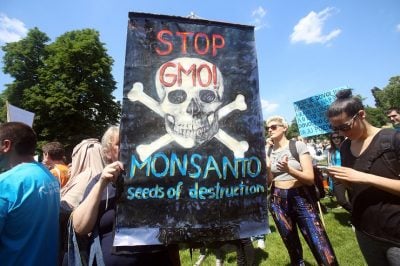
All fine for Grant and Monsanto. But this has had devastating effects on human health. ‘The Human Cost of Agrotoxins. How Glyphosate is killing Argentina’, which appeared on the Lifegate website in November 2015, serves as a damning indictment of the drive for earnings growth by Monsanto. Moreover, in the same year, some 30,000 doctors in that country demanded a ban on glyphosate.
The bottom line for Grant was sales and profit maximisation and the unflinching defence of glyphosate, no matter how carcinogenic to humans it is and, more to the point, how much Monsanto knew it was.
Noam Chomsky underlines the commercial imperative:
” … the CEO of a corporation has actually a legal obligation to maximize profit and market share. Beyond that legal obligation, if the CEO doesn’t do it, and, let’s say, decides to do something that will, say, benefit the population and not increase profit, he or she is not going to be CEO much longer — they’ll be replaced by somebody who does do it.”
But the cancer lawsuits in the US are just the tip of the iceberg in terms of the damage done by glyphosate-based products and many other biocides.
Silent Killer
June 2022 marked 60 years since the publication of Rachel Carson’s iconic book Silent Spring. It was published just two years before her death at age 56.
Carson documented the adverse impacts on the environment of the indiscriminate use of pesticides, which she said were ‘biocides’, killing much more than the pests that were targeted. Silent Spring also described some of the deleterious effects of these chemicals on human health.
She accused the agrochemical industry of spreading disinformation and public officials of accepting the industry’s marketing claims without question. An accusation that is still very much relevant today.
Silent Spring was a landmark book, inspiring many scientists and campaigners over the years to carry on the work of Carson, flagging up the effects of agrochemicals and the role of the industry in distorting the narrative surrounding its proprietary chemicals and its influence on policy making.
In 2012, the American Chemical Society designated Silent Spring a National Historic Chemical Landmark because of its importance for the modern environmental movement.
For her efforts, Carson had to endure vicious, baseless smears and attacks on her personal life, integrity, scientific credentials and political affiliations. Tactics that the agrochemicals sector and its supporters have used ever since to try to shut down prominent scientists and campaigners who challenge industry claims, practices and products.
Although Carson was not calling for a ban on all pesticides, at the time Monsanto hit back by publishing 5,000 copies of ‘The Desolate Year’, which projected a world of famine and disease if pesticides were to be banned.
A message the sector continues to churn out even as evidence stacks up against the deleterious impacts of its practices and products and the increasing body of research which indicates the world could feed itself by shifting to agroecological/organic practices.
The title of Carson’s book was a metaphor, warning of a bleak future for the natural environment. So, all these years later, what has become of humanity’s ‘silent spring’?
In 2017, research conducted in Germany showed the abundance of flying insects had plunged by three-quarters over the past 25 years. The research data was gathered in nature reserves across Germany and has implications for all landscapes dominated by agriculture as it seems likely that the widespread use of pesticides is an important factor.
Professor Dave Goulson of Sussex University in the UK was part of the team behind the study and said that vast tracts of land are becoming inhospitable to most forms of life: if we lose the insects then everything is going to collapse.
Flying insects are vital because they pollinate flowers and many, not least bees, are important for pollinating key food crops. Most fruit crops are insect-pollinated, and insects also provide food for lots of animals, including birds, bats, some mammals, fish, reptiles and amphibians.
Flies, beetles and wasps are also predators and important decomposers, breaking down dead plants and animals. And insects form the base of thousands of food chains; their disappearance is a principal reason Britain’s farmland birds have more than halved in number since 1970.
Is this one aspect of the silence Carson warned of — that joyous season of renewal and awakening void of birdsong (and much else)? Truly a silent spring.
The 2016 State of Nature Report found that one in 10 UK wildlife species is threatened with extinction, with numbers of certain creatures having plummeted by two thirds since 1970. The study showed the abundance of flying insects had plunged by three-quarters over a 25-year period.
Campaigner Dr Rosemary Mason has written to public officials on numerous occasions noting that agrochemicals, especially Monsanto’s glyphosate-based Roundup, have devastated the natural environment and have also led to spiralling rates of illness and disease.
She indicates how the widespread use on agricultural crops of neonicotinoid insecticides and the herbicide glyphosate, both of which cause immune suppression, make species vulnerable to emerging infectious pathogens, driving large-scale wildlife extinctions, including essential pollinators.
Providing evidence to show how human disease patterns correlate remarkably well with the rate of glyphosate usage on corn, soy and wheat crops, which has increased due to ‘Roundup Ready’ seeds, Mason argues that over-reliance on chemicals in agriculture is causing irreparable harm to all beings on the planet.
In 2015, writer Carol Van Strum said the US Environmental Protection Agency has been routinely lying about the safety of pesticides since it took over pesticide registrations in 1970.
She has described how faked data and fraudulent tests led to many highly toxic agrochemicals reaching the market and they still remain in use, regardless of the devastating impacts on wildlife and human health.
The research from Germany mentioned above followed a warning by a chief scientific adviser to the UK government, Professor Ian Boyd, who claimed that regulators around the world have falsely assumed that it is safe to use pesticides at industrial scales across landscapes and the “effects of dosing whole landscapes with chemicals have been largely ignored.”
Prior to that particular warning, there was a report delivered to the UN Human Rights Council saying that pesticides have catastrophic impacts on the environment, human health and society as a whole.
Authored by Hilal Elver, the then special rapporteur on the right to food, and Baskut Tuncak, who was at the time special rapporteur on toxics, the report states:
“Chronic exposure to pesticides has been linked to cancer, Alzheimer’s and Parkinson’s diseases, hormone disruption, developmental disorders and sterility.”
Elver says that the power of the corporations over governments and the scientific community is extremely important: if you want to deal with pesticides, you have to deal with the companies which deny the damage inflicted by their chemicals as they continue to aggressively market their products
While these corporations falsely claim their products are essential for feeding a burgeoning global population, they also mouth platitudes about choice and democracy, while curtailing both as they infiltrate and subvert regulatory agencies and government machinery.
Whether it is the well-documented harm to the environment or tales of illness and disease in Latin America and elsewhere, the devastating impacts of chemical-intensive agriculture which the agribusiness-agritech corporations rollout is clear to see.
Corporate Criminals
Post-1945, the nutritional value of what we eat has been depleted due to reliance on a narrower range of crops, the side-lining of traditional seeds which produced nutrient-dense plants and modern ‘cost-effective’ food-processing methods that strip out vital micronutrients and insert a cocktail of chemical additives.
Fuelling these trends has been a network of interests, including the Rockefeller Foundation and its acolytes in the US government, giant agribusiness conglomerates like Cargill, the financial-industrial complex and its globalisation agenda (which effectively further undermined localised, indigenous food systems) and the giant food corporations and the influential groups they fund, such as the International Life Sciences Institute.
Included here in this network is the agrochemical-agritech sector which promotes its proprietary chemicals and (genetically engineered) seeds through a well-developed complex of scientists, politicians, journalists, lobbyists, PR companies and front groups.
Consider what Carey Gillam says:
“US Roundup litigation began in 2015 after the International Agency for Research on Cancer classified glyphosate as a probable human carcinogen. Internal Monsanto documents dating back decades show that the company was aware of scientific research linking its weed killer to cancer but instead of warning consumers, the company worked to suppress the information and manipulate scientific literature.”
Over the years, Monsanto mounted a deceitful defence of its health- and environment-damaging Roundup and its genetically engineered crops and orchestrated toxic smear campaigns against anyone — scientist or campaigner — who threatened its interests.
In 2016, Rosemary Mason wrote an open letter to European Chemicals Agency Executive Director Geert Dancet: Open Letter to the ECHA about Scientific Fraud and Ecocide. More of an in-depth report than a letter, it can be accessed on the academia.edu site.
In it, she explained how current EU legislation was originally set up to protect the pesticides industry and Monsanto and other agrochemical corporations helped the EU design the regulatory systems for their own products.
She also drew Dancet’s attention to the journal Critical Reviews in Toxicology and how, in 2016 Volume 46, Monsanto commissioned five reviews published in a supplement to the journal. Monsanto also funded them. Mason argues the aim was to cast serious doubts about the adverse effects of glyphosate by using junk science. Straight out of the Big Tobacco playbook.
Mason told Dancet:
“CEO Hugh Grant and the US EPA knew that glyphosate caused all of these problems. The corporation concealed the carcinogenic effects of PCBs on humans and animals for seven years. They have no plans to protect you and your families from the tsunami of sickness that is affecting us all in the UK and the US.”
Meanwhile, on the US Right to Know site, the article Roundup Cancer Cases – Key Documents and Analysis sets out just why more than 100,000 cancer sufferers are attempting to hold Monsanto to account in US courts.
In a just (and sane) world, CEOs would be held personally responsible for the products they peddle and earn millions from. But no doubt they would do their utmost to dodge culpability.
After all, they were ‘just doing their job’ — and they would not want to feel harassed or burdened, would they?
Chapter VI:
From Union Carbide to Syngenta: Pouring Poison
Do you remember the iconic Union Carbide image from the 1950s/early 1960s? The one with the giant hand coming from the sky, pouring pesticides onto Indian soil.
The blurb below the image includes the following:
“Science helps build a new India — India has developed bold new plans to build its economy and bring the promise of a bright future to its more than 400 million people. But India needs the technical knowledge of the western world. For example working with Indian engineers and technicians, Union Carbide recently made available its fast scientific resource to help build a chemicals and plastics plant near Bombay. Throughout the free world, Union Carbide has been actively engaged in building plants for the manufacture of chemicals, plastics, carbons, gases and metals.”

In the bottom corner is the Union Carbide logo and the statement ‘A HAND IN THINGS TO COME’.
This ‘hand of god’ image has become infamous. Union Carbide’s ‘hand in things to come’ includes the gas leak at its pesticides plant in Bhopal in 1984. It resulted in around 560,000 injured (respiratory problems, eye irritation etc.), 4,000 severely disabled and 20,000 dead.
As for the chemical-intensive agriculture it promoted, we can now see the impacts: degraded soils, polluted water, illness, farmer debt and suicides (by drinking pesticides!), nutrient-dense crops/varieties being side-lined, a narrower range of crops, no increase in food production per capita (in India at least), the corporate commodification of knowledge and seeds, the erosion of farmers’ environmental learning, the undermining of traditional knowledge systems and farmers’ dependency on corporations.
Whether it involves the type of ecological devastation activist-farmer Bhaskar Save outlined for policy makers in his 2006 open letter or the social upheaval documented by Vandana Shiva in the book The Violence of the Green Revolution, the consequences have been far-reaching.
And yet — whether it involves new genetic engineering techniques or more pesticides — there is a relentless drive by the agritech conglomerates to further entrench their model of agriculture by destroying traditional farming practices with the aim of placing more farmers on corporate seed and chemical treadmills.
These corporations have been pushing for the European Commission to remove any labelling and safety checks for new genomic techniques. The European Court of Justice ruled in 2018 that organisms obtained with new genetic modification techniques must be regulated under the EU’s existing GMO laws. However, there has been intense lobbying from the agriculture biotech industry to weaken the legislation, aided financially by the Gates Foundation.
Since 2018, top agribusiness and biotech corporations have spent almost €37 million lobbying the European Union. They have had more than one meeting a week with European Commissioners, their cabinets and director generals.
Exposing Syngenta’s Agenda
Over the last couple of years or so, we have seen rising food prices due to a combination of an engineered food crisis for geopolitical reasons, the conflict in Ukraine, financial speculation by hedge funds, pension funds and investment banks and profiteering by global grain trade conglomerates like Cargill, Louis Dreyfus, ADM and Bunge.
Firms like Bayer, Syngenta and Corteva cynically regard current circumstances as an opportunity to promote their agenda and seek commercialisation of unregulated and improperly tested genetic engineering technologies.
These companies have long promoted the false narrative that their hybrid seeds and their genetically engineered seeds, along with their agrichemicals, are essential for feeding a growing global population. This agenda is orchestrated by vested interests and career scientists — many of whom long ago sold their objectivity for biotech money — lobby groups and disgraced politicians and journalists.
Meanwhile, in an attempt to deflect and sway opinion, these industry shills also try to depict their critics as being Luddites and ideologically driven and for depriving the poor of food and farmers of technology.
This type of bombast disintegrates when confronted with the evidence of a failing GMO project.
The GMO biotech emperor has been shown to have no clothes time and again — it is a failing, often detrimental technology in search of a problem. And if the problem does not exist, the reality of food insecurity will be twisted to serve the industry agenda (see the following chapter), and regulatory bodies and institutions supposedly set up to serve the public interest will be placed under intense pressure or subverted.
The performance of GMO crops has been a hotly contested issue and, as highlighted in a 2018 piece by PC Kesavan and MS Swaminathan in the journal Current Science, there is sufficiently strong evidence to question their efficacy and the devastating impacts on the environment, human health and food security, not least in places like Latin America.
A 2022 report by Friends of the Earth (FoE) Europe shows that big global biotech corporations like Bayer and Corteva, which together already control 40 per cent of the global commercial seed market, are now trying to cement complete dominance. Industry watchdog GMWatch notes these companies are seeking to increase their control over the future of food and farming by extensively patenting plants and developing a new generation of GMOs.
These companies are moving to patent plant genetic information that can occur naturally or as a result of genetic modification. They claim all plants with those genetic traits as their ‘invention’. Such patents on plants would restrict farmers’ access to seeds and impede breeders from developing new plants as both would have to ask for consent and pay fees to the biotech companies.
Corteva has applied for some 1,430 patents on new GMOs, while Bayer has applications for 119 patents.
Mute Schimpf, food campaigner at Friends of the Earth Europe, says:
“Big biotech’s strategy is to apply for wide patents that would also cover plants which naturally present the same genetic characteristics as the GMOs they engineered. They will be lining their pockets from farmers and plant breeders, who in turn will have a restricted access to what they can grow and work with.”
For instance, GMWatch notes that Corteva holds a patent for a process modifying the genome of a cell using the CRISPR technique and claims the intellectual property rights to any cells, seeds and plants that include the same genetic information, whether in broccoli, maize, soy, rice, wheat, cotton, barley or sunflower.
The agri biotech sector is engaged in a corporate hijack of agriculture while attempting to portray itself as being involved in some kind of service to humanity.
In recent times, Syngenta (a subsidiary of ChemChina) CEO Erik Fyrwald has come to the fore to cynically lobby for these techniques.
While Monsanto’s crimes are well documented, Syngenta’s transgressions are less well publicised.
In 2006, writer and campaigner Dr Brian John claimed:
“GM Free Cymru has discovered that Syngenta, in its promotion of GM crops and foods, has been involved in a web of lies, deceptions and obstructive corporate behaviour that would have done credit to its competitor Monsanto.”
Fyrwald has called for organic farming to be abandoned. In view of the recent food crisis, he claimed rich countries had to increase their crop production — but organic farming led to lower yields. Fyrwald also called for gene editing to be at the heart of the food agenda in order to increase food production.
He stated:
“The indirect consequence is that people are starving in Africa because we are eating more and more organic products.”
In response, Kilian Baumann, a Bernese organic farmer and president of the Swiss Small Farmers’ Association, called Fyrwald’s arguments “grotesque”. He claimed Fyrwald was “fighting for sales.”
Writing on the GMWatch website, Jonathan Matthews says the Russian invasion of Ukraine seems to have emboldened Fyrwald’s scaremongering.
Matthews states:
“Fyrwald’s comments reflect the industry’s determination to undermine the European Union’s Farm to Fork strategy, which aims by 2030 not just to slash pesticide use by 50 per cent and fertilizer use by 20 per cent but to more than triple the percentage of EU farmland under organic management (from 8.1 per cent to 25 per cent), as part of the transition towards a ‘more sustainable food system’ within the EU’s Green Deal.”
He adds:
“Syngenta view[s] these goals as an almost existential threat. This has led to a carefully orchestrated attack on the EU strategy.”
The details of this PR offensive have been laid out in a report by the Brussels-based lobby watchdog Corporate Europe Observatory (CEO): A loud lobby for a silent spring: The pesticide industry’s toxic lobbying tactics against Farm to Fork.
Mathews quotes research that shows GM crops have no yield benefit. He also refers to a recent report that draws together research clearly showing GM crops have driven substantial increases — not decreases — in pesticide use. The newer and much-hyped gene-edited crops look set to do the same.
Syngenta is among the corporations criticised by a report from the UN for “systematic denial of harms” and “unethical marketing tactics”. Matthews notes that selling highly hazardous pesticides is actually at the core of Syngenta’s business model.
According to Matthews, even with the logistical disruptions to maize and wheat crops caused by the war in Ukraine, there is still enough grain available to the world market to meet existing needs. He says the current price crisis (not food crisis) is a product of fear and speculation.
Matthews concludes:
“If Erik Fyrwald is really so concerned about hunger, why isn’t he attacking the boondoggle that is biofuels, rather than going after organic farming? The obvious answer is that the farmers being subsidised to grow biofuels are big consumers of agrichemicals and, in the US case, GMO seeds — unlike organic farmers, who buy neither.”
Fyrwald has a financial imperative to lobby for particular strategies and technologies. He is far from an objective observer. And he is far from honest in his appraisal — using fear of a food crisis to push his agenda. GMOs were never intended to ‘feed the world’. They have always been about value capture, patents and market penetration.
Meanwhile, the sustained attacks on organic agriculture have become an industry mainstay, despite numerous high-level reports and projects indicating it could feed the world, mitigate climate change, improve farmers’ situations, lead to better soil, create employment and provide healthier and more diverse diets.
There is a food crisis, but not the one alluded to by Fyrwald — denutrified food and unhealthy diets that are at the centre of a major public health crisis, a loss of biodiversity which threatens food security, degraded soils, polluted and depleted water sources and smallholder farmers, so vital to global food production (especially in the Global South), squeezed off their land and out of farming.
Transnational agribusiness has lobbied for, directed and profited from policies that have caused much of the above. And what we now see is these corporations and their lobbyists espousing (fake) concern (a cynical lobbying tactic) for the plight of the poor and hungry while attempting to purchase EU democracy to the tune of €37 million. Cheap at the price considering the financial bonanza that its new patented genetic engineering technologies and seeds could reap.
Various scientific publications show these new techniques allow developers to make significant genetic changes, which can be very different from those that happen in nature. These new GMOs pose similar or greater risks than older-style GMOs.
By attempting to dodge regulation as well as avoid economic, social, environmental and health impact assessments, it is clear were the industry’s priorities lie.
Unfortunately, Fyrwald, Bill Gates, Hugh Grant and their ilk are unwilling and too often incapable of viewing the world beyond their reductionist mindsets that merely regard seed/chemical sales, output-yield and corporate profit as the measuring stick of success.
What is required is an approach that sustains indigenous knowledge, local food security, better nutrition per acre, clean and stable water tables and good soil structure. An approach that places food sovereignty, local ownership, rural communities and rural economies at the centre of policy and which nurtures biodiversity, boosts human health and works with nature rather than destroying these.
Fyrwald’s scaremongering is par for the course — the world will starve without corporate chemicals and (GM) seeds, especially if organics takes hold. This type of stuff has been standard fare from the industry and its lobbyists and bought career scientists for many years.
It flies in the face of reality; not least how certain agribusiness concerns have been part of a US geopolitical strategy that undermines food security in regions across the world. These concerns have thrived on the creation of dependency and profited from conflict. Moreover, there is the success of agroecological approaches to farming that have no need for what Fyrwald is hawking.
Instead, the industry continues to promote itself as the saviour of humanity — a hand of God, powered by a brave new techno-utopian world of corporate science, pouring poison and planting seeds of corporate dependency with the missionary zeal of Western saviourism.
Chapter VII:
GMOs Essential to Feed the World? Case Study India
A common claim by the likes of Erick Fyrwald is that GMOs are essential to agriculture if we are to feed an ever-growing global population. Supporters of genetically engineered crops argue that by increasing productivity and yields, this technology will also help boost farmers’ incomes and lift many out of poverty.
Although it will be argued that the performance of GM crops to date has been questionable to say the least, the main contention is that the pro-GMO lobby, both outside of India and within, has wasted no time in wrenching the issues of hunger and poverty from their political contexts to use notions of ‘helping farmers’ and ‘feeding the world’ as lynchpins of its promotional strategy.
There exists a ‘haughty imperialism’ within the pro-GMO scientific lobby that aggressively pushes for a GMO ‘solution’ which is a distraction from the root causes of poverty, hunger and malnutrition and genuine solutions based on food justice and food sovereignty.
In 2019, in the journal Current Science, Dr Deepak Pental, developer of GM mustard at Delhi University, responded to a previous paper in the same journal by eminent scientists PC Kesavan and MS Swaminathan, which questioned the efficacy of and the need for GMOs in agriculture. Pental argued that the two authors had aligned themselves with environmentalists and ideologues who have mindlessly attacked the use of genetic engineering technology to improve crops required for meeting the food and nutritional needs of a global population that is predicted to peak at 11.2 billion.
Pental added that aspects of the two authors’ analysis reflect their ideological proclivities.
The use of the word ‘mindlessly’ is telling and betrays Pental’s own ideological disposition. His words reflect tired industry-inspired rhetoric that says criticisms of this technology are driven by ideology not fact.
If hunger and malnutrition are to be tackled effectively, the pro-GMO lobby must put aside this type of rhetoric, which is designed to close down debate. It should accept valid concerns about the GMO paradigm and be willing to consider why the world already produces enough to feed 10 billion people but over two billion are experiencing micronutrient deficiencies (of which 821 million were classed as chronically undernourished in 2018).
Critics: Valid Concerns or Ideologues?
The performance of GM crops has been a hotly contested issue and, as highlighted in Kevasan and Swaminathan’s piece and by others, there is already sufficient evidence to question their efficacy, especially that of herbicide-tolerant crops (which by 2007 already accounted for approximately 80 per cent of biotech-derived crops grown globally) and the devastating impacts on the environment, human health and food security.
We should not accept the premise that only GMOs can solve problems in agriculture. In their paper, Kesavan and Swaminathan argue that GMO technology is supplementary and must be need based. In more than 99 per cent of cases, they say that time-honoured conventional breeding is sufficient. In this respect, conventional options and innovations that outperform GMOs must not be overlooked or sidelined in a rush by powerful interests like the Bill and Melinda Gates Foundation to facilitate the introduction of GM crops into global agriculture; crops which are highly financially lucrative for the corporations behind them.
In Europe, robust regulatory mechanisms have to date been in place for GMOs because it is recognised that GMO food/crops are not substantially equivalent to their non-GMO counterparts. Numerous studies have highlighted the flawed premise of ‘substantial equivalence’. Furthermore, from the outset of the GMO project, the sidelining of serious concerns about the technology has occurred and despite industry claims to the contrary, there is no scientific consensus on the health impacts of GM crops as noted by Hilbeck et al (Environmental Sciences Europe, 2015). Adopting a precautionary principle where GM is concerned is therefore a valid approach.
As Hilbeck et al note, both the Cartagena Protocol and Codex share a precautionary approach to GE crops and foods, in that they agree that GE differs from conventional breeding and that safety assessments should be required before GMOs are used in food or released into the environment. There is sufficient reason to hold back on commercialising GM crops and to subject each GMO to independent, transparent environmental, social, economic and health impact evaluations.
Critics’ concerns cannot therefore be brushed aside by claims that ‘the science’ is decided and the ‘facts’ about GMOs are indisputable. Such claims are merely political posturing and part of a strategy to tip the policy agenda in favour of GMOs.
In India, various high-level reports have advised against the adoption of GM crops. Appointed by the Supreme Court, the ‘Technical Expert Committee (TEC) Final Report’ (2013) was scathing about India’s prevailing regulatory system and highlighted its inadequacies and serious inherent conflicts of interest. The TEC recommended a 10-year moratorium on the commercial release of all GE crops.
As we have seen with the push to get GM mustard commercialised, the problems described by the TEC persist. Through her numerous submissions to the Supreme Court, Aruna Rodrigues, as lead petitioner in a public interest litigation, has argued that GM mustard is being pushed through based on outright regulatory delinquency. It must also be noted that this crop is herbicide tolerant, which, as stated by the TEC, is wholly inappropriate for India with its small biodiverse, multi-cropping farms.
While the above discussion has only scratched the surface, it is fair to say that criticisms of GMO technology and various restrictions and moratoriums have not been driven by ‘mindless’ proclivities.
Can GM Crops ‘Feed the World’?
The ‘gene revolution’ is sometimes regarded as Green Revolution 2.0. The Green Revolution too was sold under the guise of ‘feeding the world’. However, emerging research indicates that in India it merely led to more wheat in the diet, while food productivity per capita showed no increase or actually decreased.
Globally, the Green Revolution dovetailed with the consolidation of an emerging global food regime based on agro-export mono-cropping (often with non-food commodities taking up prime agricultural land) and (unfair) liberalised trade, linked to sovereign debt repayment and World Bank/IMF structural adjustment-privatisation directives. The outcomes have included a displacement of a food-producing peasantry, the consolidation of Western agri-food oligopolies and the transformation of many countries from food self-sufficiency into food deficit areas.
And yet, the corporations behind this system of dependency and their lobbyists waste no time in spreading the message that this is the route to achieving food security. Their interests lie in ‘business as usual’.
Today, we hear terms like ‘foreign direct investment’ and making India ‘business friendly’, but behind the rhetoric lies the hard-nosed approach of globalised capitalism. The intention is for India’s displaced cultivators to be retrained to work as cheap labour in the West’s offshored plants. India is to be a fully incorporated subsidiary of global capitalism, with its agri-food sector restructured for the needs of global supply chains and a reserve army of labour that effectively serves to beat workers and unions in the West into submission.
Global food insecurity and malnutrition are not the result of a lack of productivity. As long as the dynamics outlined above persist and food injustice remains an inbuilt feature of the global food regime, the rhetoric of GMOs being necessary for feeding the world will be seen for what it is: bombast.
Although India fares poorly in world hunger assessments, the country has achieved self-sufficiency in food grains and has ensured there is enough food (in terms of calories) available to feed its entire population. It is the world’s largest producer of milk, pulses and millets and the second-largest producer of rice, wheat, sugarcane, groundnuts, vegetables, fruit and cotton.
According to the United Nations Food and Agriculture Organization (FAO), food security is achieved when all people, at all times, have physical, social and economic access to sufficient, safe and nutritious food that meets their dietary needs and food preferences for an active and healthy life.
Food security for many Indians remains a distant dream. Large sections of India’s population do not have enough food available to remain healthy nor do they have sufficiently diverse diets that provide adequate levels of micronutrients. The Comprehensive National Nutrition Survey 2016-18 is the first-ever nationally representative nutrition survey of children and adolescents in India. It found that 35 per cent of children under five were stunted, 22 per cent of school-age children were stunted while 24 per cent of adolescents were thin for their age.
People are not hungry in India because its farmers do not produce enough food. Hunger and malnutrition result from various factors, including inadequate food distribution, (gender) inequality and poverty; in fact, the country continues to export food while millions remain hungry. It’s a case of ‘scarcity’ amid abundance.
Where farmers’ livelihoods are concerned, the pro-GMO lobby says GM will boost productivity and help secure cultivators a better income. Again, this is misleading: it ignores crucial political and economic contexts. Even with bumper harvests, Indian farmers still find themselves in financial distress.
India’s farmers are not experiencing financial hardship due to low productivity. They are reeling from the effects of neoliberal policies and years of neglect and a withdrawal of state support, part of a deliberate strategy to displace smallholder agriculture at the behest of the World Bank and predatory global agri-food corporations Little wonder then that the calorie and essential nutrient intake of the rural poor has drastically fallen.
However, aside from putting a positive spin on the questionable performance of GMO agriculture, the pro-GMO lobby, both outside of India and within, has wasted no time in wrenching these issues from their political contexts to use the notions of ‘helping farmers’ and ‘feeding the world’ as lynchpins of its promotional strategy.
GM Was Never Intended to Feed the World
Many of the traditional practices of India’s small farmers are now recognised as sophisticated and appropriate for high-productive, sustainable agriculture. It is no surprise therefore that a July 2019 FAO high-level report called for agroecology and smallholder farmers to be prioritised and invested in to achieve global sustainable food security. It argues that scaling up agroecology offers potential solutions to many of the world’s most pressing problems, whether, for instance, climate change and carbon storage, soil degradation, water shortages, unemployment or food security.
Agroecological principles represent a shift away from the reductionist yield-output industrial paradigm, which results in among other things enormous pressures on soil and water resources, to a more integrated low-input systems approach to food and agriculture that prioritises local food security, local calorific production, cropping patterns and diverse nutrition production per acre, water table stability, climate resilience, good soil structure and the ability to cope with evolving pests and disease pressures. Such a system would be underpinned by a concept of food sovereignty, based on optimal self-sufficiency, the right to culturally appropriate food and local ownership and stewardship of common resources, such as land, water, soil and seeds.
Traditional production systems rely on the knowledge and expertise of farmers in contrast to imported ‘solutions’. Yet, if we take cotton cultivation in India as an example, farmers continue to be nudged away from traditional methods of farming and are being pushed towards (illegal) GM herbicide-tolerant cotton seeds.
Researchers Glenn Stone and Andrew Flachs note the results of this shift from traditional practices to date does not appear to have benefited farmers. This isn’t about giving farmers ‘choice’ where GMO seeds and associated chemicals are concerned. It is more about GM seed companies and weedicide manufactures seeking to leverage a highly lucrative market.
The potential for herbicide market growth in India is enormous. The objective involves opening India to GM seeds with herbicide tolerance traits, the biotechnology industry’s biggest money maker by far (86 per cent of the world’s GM crop acres in 2015 contain plants resistant to glyphosate or glufosinate, and there is a new generation of crops resistant to 2,4-D coming through).
The aim is to break farmers’ traditional pathways and move them onto corporate biotech/chemical treadmills for the benefit of industry.
Calls for agroecology and highlighting the benefits of traditional, small-scale agriculture are not based on a romantic yearning for the past or ‘the peasantry’. Available evidence suggests that (non-GMO) smallholder farming using low-input methods is more productive in total output than large-scale industrial farms and can be more profitable and resilient to climate change.
It is for good reason that the FAO high-level report referred to earlier as well as the United Nations Special Rapporteur on the Right to Food, Prof Hilal Elver, call for investment in this type of agriculture, which is centred on small farms. Despite the pressures, including the fact that globally industrial agriculture grabs 80 per cent of subsidies and 90 per cent of research funds, smallholder agriculture plays a major role in feeding the world.
That’s a huge amount of subsidies and funds to support a system that is only made profitable as a result of these financial injections and because agri-food oligopolies externalize the massive health, social and environmental costs of their operations.
But policy makers tend to accept that profit-driven transnational corporations have a legitimate claim to be owners and custodians of natural assets (the ‘commons’). These corporations, their lobbyists and their political representatives have succeeded in cementing a ‘thick legitimacy’ among policy makers for their vision of agriculture.
From World Bank ‘enabling the business of agriculture’ directives to the World Trade Organization ‘agreement on agriculture’ and trade related intellectual property agreements, international bodies have enshrined the interests of corporations that seek to monopolise seeds, land, water, biodiversity and other natural assets that belong to us all. These corporations, the promoters of GMO agriculture, are not offering a ‘solution’ for farmers’ impoverishment or hunger; GM seeds are little more than a value capture mechanism.
To evaluate the pro-GMO lobby’s rhetoric that GM is needed to ‘feed the world’, we first need to understand the dynamics of a globalised food system that fuels hunger and malnutrition against a backdrop of (subsidised) food overproduction. We must acknowledge the destructive, predatory dynamics of capitalism and the need for agri-food giants to maintain profits by seeking out new (foreign) markets and displacing existing systems of production with ones that serve their bottom line. And we need to reject a deceptive ‘haughty imperialism’ within the pro-GMO scientific lobby which aggressively pushes for a GMO ‘solution’.
Chapter VIII:
Food Transition: A Greenwashed Corporate Power Grab
Today, in the mainstream narrative, there is much talk of a ‘food transition’. Big agribusiness and ‘philanthropic’ foundations position themselves as the saviours of humanity due to their much-promoted plans to ‘feed the world’ with ‘precision’ farming’, GMOs, ‘data-driven’ agriculture and ‘sustainable’ production.
These are the very institutions responsible for the social, ecological and environmental degradation associated with the current food system. The same bodies responsible for spiralling rates of illness due to the toxic food they produce or promote.
In this narrative, there is no space for any mention of the type of power relations that have shaped the prevailing food system and many of the current problems.
Tony Weis from the University of Western Ontario provides useful insight:
“World agriculture is marked by extreme imbalances that are among the most durable economic legacies of European imperialism. Many of the world’s poorest countries in the tropics are net food importers despite having large shares of their labor force engaged in agriculture and large amounts of their best arable land devoted to agro-export commodities.”
He adds that this commodity dependence has deep roots in waves of dispossession, the establishment of plantations and the subjugation of peasantries to increasing competitive pressures at the same time as they were progressively marginalised.
In the 2018 book The Divide: A Brief Guide to Global Inequality and its Solutions, Jason Hickel describes the processes involved in Europe’s wealth accumulation over a 150-year period of colonialism that resulted in tens of millions of deaths.
By using other countries’ land, Britain effectively doubled the size of arable land in its control. This made it more practical to then reassign the rural population at home (by stripping people of their productive means) to industrial labour. This too was underpinned by massive violence (burning villages, destroying houses, razing crops).
In more recent times, neoliberal globalisation has further reinforced the power relations that underpin the system, cementing the control of agricultural production by global corporations, facilitated by the policies of the World Trade Organization, the World Bank and the International Monetary Fund.
Corporate Food Transition
The food transition is couched in the language of climate emergency and sustainability. It envisages a particular future for farming. It is not organic and relatively few farmers have a place in it.
Post-1945, corporate agribusiness, largely backed by the US state, the Rockefeller Foundation and financial institutions, has been promoting and instituting a chemical-dependent system of industrial agriculture. Rural communities, ecological systems, the environment, human health and indigenous systems of food cultivation have been devastated in the process.

Now, the likes of Bayer, Corteva and Syngenta are working with Microsoft, Google and the big-tech giants to facilitate farmerless farms driven by cloud and AI technology. A cartel of data owners and proprietary input suppliers are reinforcing their grip on the global food system while expanding their industrial model of crop cultivation.
One way they are doing this is by driving the ‘climate emergency’ narrative, a contested commentary that has been carefully promoted (see the work of investigative journalist Cory Morningstar), and net-zero ideology and tying this to carbon offsetting and carbon credits.
Many companies from various sectors are securing large areas of land in the Global South to establish tree plantations and claim carbon credits that they can sell on international carbon markets. In the meantime, by supposedly ‘offsetting’ their emissions, they can carry on polluting.
In countries where industrial agriculture dominates, ‘carbon farming’ involves modifying existing practices to claim that carbon is being sequestered in the soil and to then sell carbon credits.
This is explained in a recent presentation by Devlin Kuyek of the non-profit GRAIN who sets out the corporate agenda behind carbon farming.
One of the first major digital agriculture platforms is called Climate FieldView, an app owned by Bayer. It collects data from satellites and sensors in fields and on tractors and then uses algorithms to advise farmers on their farming practices: when and what to plant, how much pesticide to spray, how much fertiliser to apply etc. FieldView is already being used on farms in the US, Canada, Brazil, Argentina and Europe.
To be part of Bayer’s Carbon Program, farmers have to be enrolled in Bayer’s FieldView digital agriculture platform. Bayer then uses the FieldView app to instruct farmers on the implementation of just two practices that are said to sequester carbon in the soils: reduced tillage or no-till farming and the planting of cover crops.
Through the app, the company monitors these two practices and estimates the amount of carbon that the participating farmers have sequestered. Farmers are then supposed to be paid according to Bayer’s calculations, and Bayer uses that information to claim carbon credits and sell these in carbon markets.
In August 2022, Bayer launched a new programme in the US called ForGround. Upstream companies can use the platform to advertise and offer discounts for tilling equipment, forage seeds and other inputs. But Bayer’s big target is the downstream food companies which can use the platform to claim emissions reductions in their supply chains.
Places like India are also laying the groundwork for these types of platforms. In April 2021, the Indian government signed a Memorandum of Understanding (MoU) with Microsoft, allowing its local partner CropData to leverage a master database of farmers.
Microsoft will ‘help’ farmers with post-harvest management solutions by building a collaborative platform and capturing agriculture datasets such as crop yields, weather data, market demand and prices. In turn, this would create a farmer interface for ‘smart’ agriculture, including post-harvest management and distribution.
CropData will be granted access to a government database of 50 million farmers and their land records. As the database is developed, it will include farmers’ personal details —
1) Profile of land held — cadastral maps, farm size, land titles, local climatic and geographical conditions.
2) Production details — crops grown, production history, input history, quality of output, machinery in possession.
3) Financial details — input costs, average return, credit history.
The stated aim is to use digital technology to improve financing, inputs, cultivation and supply and distribution.
However, this initiative also involves providing data on land holding deeds with the intention of implementing a land market so that investors can buy up land and amalgamate it — global equity funds regard agricultural land as a valuable asset, and global agritech/agribusiness companies prefer industrial-scale farms for rolling out highly mechanised ‘precision’ agriculture.
‘Data-driven agriculture’ mines data to be exploited by the agribusiness/big tech giants who will know more about farmers than farmers know about themselves. The likes of Bayer and Microsoft will gain increasing control over farmers, dictating exactly how they farm and what inputs they use.

And as GRAIN notes, getting more farmers to use reduced tillage or no-till is of huge benefit to Bayer. The kind of reduced tillage or no-till promoted by Bayer requires dousing fields with its RoundUp (toxic glyphosate) herbicide and planting seeds of its genetically engineered Roundup resistant soybeans or hybrid maize.
Bayer also intends to profit from the promotion of cover crops. It has taken majority ownership of a seed company developing a gene-edited cover crop, called CoverCress. Seeds of CoverCress will be sold to farmers who are enrolled in ForGround and the crop will be sold as a biofuel.
GMO technology has always been a solution in need of a problem. Along with its associated money-spinning toxic chemicals, it has failed to deliver on its promises (see GMO Myths and Truths, published by Open Earth Source) and has sometimes been disastrous when rolled out, not least for poor farmers in India.
Whereas traditional breeding and on-farm practices have little or no need for such GMO technology, under the guise of ‘climate emergency’, the data and agritech giants are commodifying knowledge and making farmers dependent on their platforms and inputs. The commodification of knowledge and compelling farmers to rely on proprietary inputs overseen by algorithms will define what farming is and how it is to be carried out.
The introduction of technology into the sector can benefit farmers. But understanding who owns the technology and how it is being used is crucial for understanding underlying motivations, power dynamics and the quality of food we end up eating.
Net-zero Ponzi Scheme
In its article From land grab to soil grab: the new business of carbon farming, GRAIN says control rather than sequestering carbon is at the heart of the matter. More than half of the soil organic matter in the world’s agricultural soils has already been lost. Yet, the main culprits behind this soil catastrophe are now recasting themselves as soil saviours.
Under the guise of Green Revolution practices (application of chemicals, synthetic fertilisers, high water usage, hybrid seeds, intensive mono-cropping, increased mechanisation etc.), what we have seen is an exploitative form of agriculture which has depleted soil of its nutrients. It has also resulted in placing farmers on corporate seed and chemical treadmills.
Similarly, carbon farming draws farmers into the digital platforms that agribusiness corporations and big tech companies are jointly developing to influence farmers on their choice of inputs and farming practices (big tech companies, like Microsoft and IBM, are major buyers of carbon credits). The companies intend to make their digital platforms one-stop shops for carbon credits, seeds, pesticides and fertilisers and agronomic advice, all supplied by the company, which gets the added benefit of control over the data harvested from the participating farms.
Those best placed to benefit from these programmes are the equity funds and the wealthy who have been buying up large farmland areas. Financial managers can now use digital platforms to buy farms in Brazil, sign them up for carbon credits, and run their operations all from their offices on Wall Street.
As for the carbon credit and carbon trading market, this appears to be another profitable Ponzi scheme from which traders will make a financial killing.
Journalist Patrick Greenfield states that research into Verra, the world’s leading carbon standard for the rapidly growing $2bn (£1.6bn) voluntary offsets market, has found that more than 90 per cent of their rainforest offset credits — among the most commonly used by companies — are likely to be ‘phantom credits’ and do not represent genuine carbon reductions.
The analysis raises questions over the credits bought by a number of internationally renowned companies — some of them have labelled their products ‘carbon neutral’ or have told their consumers they can fly, buy new clothes or eat certain foods without making the ‘climate crisis’ worse.
Washington-based Verra operates a number of leading environmental standards for climate action and sustainable development, including its verified carbon standard (VCS) that has issued more than a billion carbon credits. It approves three-quarters of all voluntary offsets. Its rainforest protection programme makes up 40 per cent of the credits it approves.
Although Verra disputes the findings, only a handful of Verra’s rainforest projects showed evidence of deforestation reductions — 94 per cent of the credits had no benefit to the climate.
The threat to forests had been overstated by about 400 per cent on average for Verra projects, according to an analysis of a 2022 University of Cambridge study.
Barbara Haya, the director of the Berkeley Carbon Trading Project, has been researching carbon credits for 20 years, hoping to find a way to make the system function.
She says that companies are using credits to make claims of reducing emissions when most of these credits don’t represent emissions reductions at all:
“Rainforest protection credits are the most common type on the market at the moment. But these problems are not just limited to this credit type. These problems exist with nearly every kind of credit.”
Current green agenda ‘solutions’ are based on a notion of ‘stakeholder’ capitalism or private-public partnerships whereby vested interests are accorded greater weight, with governments and public money merely facilitating the priorities of private capital.
A key component of this strategy involves the ‘financialization of nature’ and the production of new ‘green’ markets. The banking sector is especially set to make a killing via ‘green profiling’ and ‘green bonds’.
Looking at the wider picture, creating new markets helps deal with the over accumulation of capital (productive wealth) due to weak consumer demand caused by decades of neoliberal policies and the declining purchasing power of working people. These markets represent fresh opportunities for the wealthy to park their wealth, create viable returns on their investments and offset the overaccumulation referred to and the devaluation of their assets.
At the same time, according to Friends of the Earth (FoE), corporations and states will use the financialization of nature discourse to weaken laws and regulations designed to protect the environment with the aim of facilitating the goals of extractive industries, while allowing mega-infrastructure projects in protected areas and other contested places.
Global corporations will be able to ‘offset’ (greenwash) their activities by, for example, protecting or planting a forest elsewhere (on indigenous people’s land) or perhaps even investing in (imposing) industrial agriculture which grows herbicide-resistant GMO commodity crop monocultures that are misleadingly portrayed as ‘climate friendly’.
FoE states:
“Offsetting schemes allow companies to exceed legally defined limits of destruction at a particular location, or destroy protected habitat, on the promise of compensation elsewhere; and allow banks to finance such destruction on the same premise.”
This agenda could result in the weakening of current environmental protection legislation or its eradication in some regions under the pretext of compensating for the effects elsewhere. How ecoservice ‘assets’ (for example, a forest that performs a service to the ecosystem by acting as a carbon sink) are to be evaluated in a monetary sense is very likely to be done on terms that are highly favourable to the corporations involved, meaning that environmental protection will play second fiddle to corporate and finance sector return-on-investment interests.
As FoE argues, business wants this system to be implemented on its terms, which means the bottom line will be more important than stringent rules that prohibit environmental destruction.
The envisaged commodification of nature and carbon trading will ensure massive profit-seeking opportunities through the opening up of new markets and the creation of fresh investment instruments.
As alluded to above, capitalism needs to keep expanding into or creating new markets to offset the tendency for the general rate of profit to fall (according to writer Ted Reese, it has trended downwards from an estimated 43 per cent in the 1870s to 17 per cent in the 2000s). The system suffers from a rising overaccumulation (surplus) of capital.
Reese notes that, although wages and corporate taxes have been slashed, the exploitability of labour continued to become increasingly insufficient to meet the demands of capital accumulation. By late 2019, the world economy was suffocating under a mountain of debt. Many companies could not generate enough profit and falling turnover, squeezed margins, limited cashflows and highly leveraged balance sheets were prevalent.
In effect, economic growth was already grinding to a halt prior to the massive stock market crash in February 2020.
In the form of COVID ‘relief’, there has been a multi-trillion bailout for capitalism as well as the driving of smaller enterprises to bankruptcy. Or they have being swallowed up by global interests. Either way, the likes of Amazon and other predatory global corporations have been the winners.
New ‘green’ Ponzi trading schemes to offset carbon emissions and the commodification of ‘ecoservices’ (nature) represent a further restructuring of the capitalist economy and fresh money-making opportunities.
And it essentially leaves those responsible for the current food system and environmental degradation at the wheel, imposing their will and their narrative on the rest of us. Major agribusiness firms like Syngenta and Monsanto (now Bayer) and financial institutions who have funded them in the past are now positioning themselves as ‘green’ and take every opportunity to express their concerns about sustainability, sustainable food and protecting the environment.
Agribusiness: Saving the Planet?
Between 2000 and 2009, Indonesia supplied more than half of the global palm oil market at an annual expense of some 340,000 hectares of Indonesian countryside. Consider too that Brazil and Indonesia have spent over 100 times more in subsidies to industries that cause deforestation than they received in international conservation aid from the UN to prevent it.
These two countries gave over $40bn in subsidies to the palm oil, timber, soy, beef and biofuels sectors between 2009 and 2012, some 126 times more than the $346m they received to preserve their rain forests.
India is the world’s leading importer of palm oil, accounting for around 15 per cent of the global supply. It imports over two-thirds of its palm oil from Indonesia.
Until the mid-1990s, India was virtually self-sufficient in edible oils. Under pressure from the WTO, import tariffs were reduced, leading to an influx of cheap (subsidised) edible oil imports that domestic farmers could not compete with. This was a deliberate policy that effectively devastated the home-grown edible oils sector and served the interests of palm oil growers and US grain and agriculture commodity company Cargill, which helped write international trade rules to secure access to the Indian market on its terms.
Indonesia leads the world in global palm oil production, but palm oil plantations have too often replaced tropical forests, leading to the killing of endangered species and the uprooting of local communities as well as contributing to the release of potential environment-damaging gases. Indonesia emits more of these gases than any country besides China and the US, largely due to the production of palm oil.
The issue of palm oil is one example from the many that could be provided to highlight how the drive to facilitate corporate need and profit trumps any notion of environmental protection or addressing any ‘climate emergency’. Whether it is in Indonesia, Latin America or elsewhere, transnational agribusiness — and the system of globalised industrial commodity crop agriculture it promotes — fuels much of the destruction we see today.
Back in 2017, agribusiness giant Monsanto was judged to have engaged in practices that impinged on the basic human right to a healthy environment, the right to food and the right to health. Judges at the ‘Monsanto Tribunal’, held in The Hague, concluded that if ecocide were to be formally recognised as a crime in international criminal law, Monsanto could be found guilty.
The tribunal called for the need to assert the primacy of international human and environmental rights law. However, it was also careful to note that an existing set of legal rules serves to protect investors’ rights in the framework of the WTO and in bilateral investment treaties and in clauses in free trade agreements. These investor trade rights provisions undermine the capacity of nations to maintain policies, laws and practices protecting human rights and the environment and represent a disturbing shift in power.
The tribunal denounced the severe disparity between the rights of multinational corporations and their obligations.
While the Monsanto Tribunal judged that company to be guilty of human rights violations, including crimes against the environment, in a sense we also witnessed global capitalism on trial.
Global conglomerates can only operate as they do because of a framework designed to allow them to capture or co-opt governments and regulatory bodies and to use the WTO and bilateral trade deals to lever influence. As Jason Hickel notes in his book (previously referred to), old-style colonialism may have gone but governments in the Global North and its corporations have found new ways to assert dominance via leveraging aid, market access and ‘philanthropic’ interventions to force lower income countries to do what they want.
The World Bank’s ‘Enabling the Business of Agriculture’ and its ongoing commitment to an unjust model of globalisation is an example of this and a recipe for further plunder and the concentration of power and wealth in the hands of the few.
Brazil and Indonesia have subsidised private corporations to effectively destroy the environment through their practices. Canada and the UK are working with the GMO biotech sector to facilitate its needs. And India is facilitating the destruction of its agrarian base according to World Bank directives for the benefit of the likes of Bayer and Cargill.
The TRIPS Agreement, written by Monsanto, and the WTO Agreement on Agriculture, written by Cargill, was key to a new era of corporate imperialism. It came as little surprise that in 2013 India’s then Agriculture Minister Sharad Pawar accused US companies of derailing the nation’s oil seeds production programme.
Powerful corporations continue to regard themselves as the owners of people, the planet and the environment and as having the right — enshrined in laws and agreements they wrote — to exploit and devastate for commercial gain.
Partnership or Co-option?
It was noticeable during a debate on food and agriculture at the United Nations Climate Change Conference in Glasgow a couple of years ago that there was much talk about transforming the food system through public-private partnerships and agreements. Fine-sounding stuff, especially when the role of agroecology and regenerative farming was mentioned.
However, if, for instance, elected governments hope to form partnerships with corporations that are responsible for the type of environmental degradation outlined above, are coercing countries to eradicate their essential buffer food stocks then bid for such food on the global market with US dollars (as in India) or are lobbying for the enclosure of seeds through patents (as in Africa and elsewhere), then surely this deepening of dependency should be challenged; otherwise ‘partnership’ really means co-option.
Similarly, the UN Food Systems Summit (UNFSS) seems to be little more than an enabler of corporate needs. The UNFSS was founded on a partnership between the UN and the WEF and is disproportionately influenced by corporate actors.
Those granted a pivotal role at the UNFSS support industrial food systems that promote ultra-processed foods, deforestation, industrial livestock production, intensive pesticide use and commodity crop monocultures, all of which cause soil deterioration, water contamination and irreversible impacts on biodiversity and human health. And this will continue as long as the environmental effects can be ‘offset’ or these practices can be twisted on the basis of them somehow being ‘climate-friendly’.
Critics of the UNFSS offer genuine alternatives to the prevailing food system. In doing so, they also provide genuine solutions to climate-related issues and food injustice based on notions of food sovereignty, localisation and a system of food cultivation deriving from agroecological principles and practices.
Current greenwashed policies are being sold by tugging at the emotional heartstrings of the public. This green agenda, with its lexicon of ‘sustainability’, ‘carbon neutrality’, ‘net-zero’ and doom-laden forecasts, is part of a programme that seeks to restructure capitalism, to create new investment markets and instruments and to return the system to viable levels of profitability.
Genuine Food Transition
The ‘food transition involves’ locking farmers further into an exploitative corporate-controlled agriculture that extracts wealth and serves the market needs of global corporations, carbon trading Ponzi schemes and private equity funds. Farmers will be reduced to corporate labourers or profit-extracting agents who bear all of the risks.
The predatory commercialisation of the countryside is symptomatic of a modern-day colonialist mindset that cynically undermines indigenous farming practices and uses flawed premises and fear mongering to legitimise the roll-out of technologies and chemicals to supposedly deliver us all from climate breakdown and Malthusian catastrophe.
A genuine food transition would involve transitioning away from the reductionist yield-output industrial paradigm to a more integrated low-input systems approach to food and agriculture that prioritises local food security, diverse cropping patterns and nutrition production per acre, water table stability, climate resilience, good soil structure and the ability to cope with evolving pests and disease pressures.
It would involve localised, democratic food systems and a concept of food sovereignty based on self-sufficiency, agroecological principles and regenerative agriculture (there are numerous concrete examples of regenerative agriculture, many of which are described on the website of Food Tank).
This would also involve facilitating the right to culturally appropriate food that is nutritionally dense and free from toxic chemicals and ensuring local (communal) ownership and stewardship of common resources, including land, water, soil and seeds.
This is the basis of genuine food security and genuine environmentalism — based on short-line supply chains that keeps wealth within local communities rather than it being siphoned off by profit-seeking entities half a world away.
Chapter IX:
Challenging the Ecomodernist Dystopia
“Ecomodernists offer no solutions to contemporary problems other than technical innovation and further integration into private markets which are structured systematically by centralized state power in favour of the wealthy… ” — Chris Smaje
In 2017, the then Monsanto Chief Technology Officer Robb Fraley argued that his company made a mistake in not reaching out to the public about GMOs when they first appeared on the market in the 1990s. He felt consumers had been unduly swayed by an anti-GMO movement and the industry got its PR campaign wrong first time around.
Fraley said the industry and universities currently involved in rolling out genome editing technology have done a much more extensive communication to both the public and key regulatory and policy makers. The industry’s message is that gene editing can precisely delete and insert genes in an organism’s DNA and presents no risks.
However, there is sufficient research indicating that the technology is error prone, the effects of editing are not controllable and there is no simple pathway between gene and trait. Gene editing has unexpected outcomes and risks, and unintended mutations and off-target effects occur.
These issues have been noted in various articles, reports and papers which are listed on the GMWatch website. Even intended modifications can result in traits which could raise food safety, environmental or animal welfare concerns.
Various scientific publications show that new GM techniques allow developers to make significant genetic changes, which can be very different from those that happen in nature. These new GMOs pose similar or greater risks than older-style GMOs. Despite gene editing being touted by the industry as ‘precision breeding’, it is anything but.
In addition to these concerns, researchers say that what we can expect is just more of the same — GM herbicide-tolerant crops and increased herbicide use.
However, the industry is seeking the unregulated commercial release of its new technologies.
The European Court of Justice (ECJ) has ruled that organisms obtained with new genetic modification techniques must be regulated under the EU’s existing GMO laws. But there has been intense lobbying from the agriculture biotech industry to weaken the legislation.
As mentioned earlier, since the ECJ decision in 2018, top agribusiness and biotech corporations have spent almost €37 million lobbying the EU. They have had more than one meeting a week with European Commissioners, their cabinets and director generals.
Little surprise then that the EU Commission’s secret policy scenarios show full GMO deregulation is on the cards with the commission considering ending safety checks, traceability and GMO labelling for GM foods, seeds and crops.
Of course, GM is little more than a value-capture mechanism. An important article, previously referred to, by P C Kesavan and M S Swaminathan in the journal Current Science says there is sufficient evidence to question the efficacy of GM crops in terms of yields, pesticide use, the effects on farmers and on the environment etc.
Important not only because of the evidence it drew upon but also because of the status of both authors, especially that of Swaminathan, considered the father of the Green Revolution in India.
The two scientists argue that GM technology is supplementary and must be need based. In more than 99 per cent of cases, therefore, they say there is no need — time-honoured conventional breeding is sufficient.
Dystopian Vision
We need to bear this in mind because there is a disturbing view emerging of a future based on an ecomodernist perspective and a techno-utopia founded on GM crops, lab-engineered ‘food’ and 90 per cent of humanity being crammed into mega-cities.
Academics write reports and books on this vision, but among the high-profile foot soldiers promoting it are the likes of The Guardian’s George Monbiot and industry-funded GMO lobbyist Mark Lynas.
The following forms part of the ecomodernist vision of the future (translated from Dutch) and appears on the RePlanet.nl website:
“In 2100, the planet is home to around 10 billion people. More than 90 per cent of these live and work in the city, compared to 50 per cent in 2000. Around the city are large farms full of GM crops that achieve four times as high a yield as at the beginning of the 21st century.”
It goes on to state:
“Beyond the farmland begins nature, which now occupies most of the surface of our planet. Whereas in 2000 half of the earth’s surface was still in use by humans, today that is only a quarter. The rest has been returned to nature. Both biodiversity and CO2 emissions are back to pre-1850 levels. Hardly anyone is in extreme poverty anymore.”
Those pushing for this transition want large-scale government interventions to help ‘the market’ achieve the goals set out, including massive government investment in “game-changing innovations in precision fermentation and biotech” (precision fermentation = lab engineered ‘food’).
Very much like the type of ‘stakeholder capitalism’ we hear so much about from the WEF and like-minded bodies when they discuss the ‘climate emergency’ and ‘resetting’ economies and societies in line with market-driven ‘economic, social and corporate governance’ targets.
What this really means is governments becoming junior stakeholders and facilitators, paving the way for private capital to carve up the planet as it sees fit — imperialism repackaged and rebranded with a veneer of ‘green’.
The ecomodernists regard their solutions as ‘progress’ — as progressive — as if their vision is the only vision worth considering because it somehow represents the pinnacle of human evolution. Such a view of human development is arrogant, ahistorical and unilinear.
If history teaches us one thing, it is that humanity ended up at its current point due to a multitude of struggles and conflicts, the outcomes of which were often in the balance. In other words, as much by chance as design.
We need look no further than Robert Brenner (Agrarian Class Structure and Economic Development in Pre-industrial Europe, 1976) and Barrington Moore (Social origins of dictatorship and democracy: lord and peasant in the making of the modern world, 1966) to appreciate this. Their research was based on broad comparative sociological analyses of the cultural, historical, agrarian and economic factors and (class) conflicts that led to the rise of different forms of modernity and social structures.
Their work has important implications: the ecomodernist vision for the future should not be accepted as a given — as some predetermined fixed endpoint. There are alternative visions, potential outcomes and resistance that can challenge the world these elitists have in mind.
In 2021, for instance, the International Panel of Experts on Sustainable Food Systems released a report with ETC Group, which set out a very different future for food systems, people and the planet.
The report asks: what if the initiative is reclaimed by civil society and social movements — from grassroots organisations to international NGOs, from farmers’ and fishers’ groups to cooperatives and unions?
It imagines what a ‘long food movement’ could achieve by 2045 if these movements succeed in collaborating more closely to transform financial flows, governance structures and food systems from the ground up.
The ecomodernist vision is ahistorical in another way too. Back in 2015, farmer and writer Chris Smaje wrote that a word you will not find in the ecomodernist vocabulary is inequality. While there are glancing references to poverty, poor people and poor nations, in the ecomodernist vision of modernity, poverty is equated with a lack of modernisation.
Smaje says there is no sense that processes of modernisation cause any poverty: nothing on uneven development, historical cores and peripheries, proletarianization, colonial land appropriation and the implications of all this for social equality.
The ecomodernist solution to poverty is simply more modernisation.
Smaje also explains why the ecomodernist notion that nobody wants to farm and everybody wants to move to the city meshes neatly with neoliberal ideology.
He also argues that alternative visions are not about ‘oppressing’ people by keeping them in villages and engaging in subsistence farming:
“It’s about choosing policies that best support people’s realistic aspirations — all people’s, both rural and urban. The EM, and other keystone ecomodernist works like Brand’s Whole Earth Discipline, are conspicuously silent on global economic governance policies. They say nothing about the IMF, the WTO, the free flow of global capital and the constrictions on the flow of global labour.”
In other words, if you deliberately run down the farming sector, say via trade policies, and withdraw key extension service that support farmers and do away with guaranteed minimum support prices for crops, then there’s a good chance rural dwellers will flow to cities to live in a slum in the hope of a better life.
People do not necessarily ‘choose’ to move out of farming. They are very often forced out and their land appropriated.
We see this in India. The intention by global agricapital and the World Bank is to displace hundreds of millions from the countryside, amalgamate their land and move them into cities. The nation’s agri-food sector is to be restructured for the needs of global supply chains and global agricapital.
Between 1991 and 2016, the population of Delhi and its suburbs increased from 9.4 million to 25 million. In 2023, the World Population Review website estimates Delhi’s population to be 32.9 million.
In the December 2016 paper Future urban land expansion and implications for global croplands, it was projected that by 2030, globally, urban areas will have tripled in size, expanding into cropland and undermining the productivity of agricultural systems.
Around 60 per cent of the world’s cropland lies on the outskirts of cities. The paper states that this land is, on average, twice as productive as land elsewhere on the globe.
Africa and Asia will together bear 80 per cent of the projected cropland loss due to rising urbanisation. The disappearance of this productive land will impact staple crops such as maize, rice, soya beans and wheat, which are cornerstones of global food security.
In South Asia, farmland can’t simply spread elsewhere because fertile land is already running out.
One of the paper’s authors, Felix Creutzig (currently Professor of Sustainability Economics at the Technical University of Berlin), said at the time that, as cities expand, millions of small-scale farmers will be displaced. These farmers produce the majority of food in developing countries and are key to global food security.
However, what Creutzig says is not inevitable. Far from it. Urbanisation is being encouraged and facilitated by design.
According to the World Bank’s lending report, based on data compiled up to 2015, India was easily the largest recipient of its loans in the history of the institution. On the back of India’s foreign exchange crisis in the early 1990s, the IMF and World Bank wanted India to shift hundreds of millions out of agriculture: India was to embark on a massive rural depopulation/urbanisation project.
In addition, in return for up to more than $120 billion (accounting for inflation, this would be $269 billion in 2023) in loans, India was directed to dismantle its state-owned seed supply system, reduce subsidies, run down public agriculture institutions, facilitate the entry of global players and offer incentives for the growing of cash crops to earn foreign exchange.
The details of this plan appear in a January 2021 article by the Mumbai-based Research Unit for Political Economy (RUPE). In effect, it constitutes a massive urbanisation project and the opening of India’s agriculture sector to foreign agribusiness corporations.
Unsurprisingly, therefore, Felix Creutzig predicted the following:
“As peri-urban land is converted, smallholders will lose their land. The emerging mega-cities will rely increasingly on industrial-scale agricultural and supermarket chains, crowding out local food chains.”
The opening of India’s agriculture and food economy to foreign investors and global agribusinesses has been a longstanding project of the imperialist countries.
Industrial-scale agriculture is key to the plan. And integral to this model of farming is GM food crops — whether first generation GM crops based on genetically modified organisms (GMOs) or newer techniques involving the likes of gene editing.
If unchallenged, the outcome will be a country reliant on industrial agriculture and all it entails — lab engineered items, denutrified food, monolithic diets, the massive use of agrochemicals and food contaminated by hormones, steroids, antibiotics and a range of chemical additives.
A cartel of seed, chemical and food manufacturing and processing companies with total control over the food production and supply chain in India and throughout the globe.
And it will be total. As previously mentioned, big global biotech corporations like Bayer and Corteva are extensively patenting plants. Such patents on plants would restrict farmers’ access to seeds and impede breeders from developing new plants as both would have to ask for consent and pay fees to the biotech companies.
This is ‘ecomodernism’ in action. It goes hand-in-hand with elite interests who will rake in enormous profit as they seek to control every aspect of food, farming and, indeed, life.
In India, we see various tactics at work to bring this about — the deliberate strategy to make smallholder farming financially nonviable, attempts to dismantle public distribution systems and minimum support prices, the relentless drive to get GM food crops cultivated, the data-gathering Agristack initiative overseen by Microsoft and the increasing capture of the retail sector by Walmart, Amazon, Facebook and Google (all described in the 2022 e-book Food, Dependency and Dispossession: Resisting the New World Order).
The Indian government is trying to establish a system of ‘conclusive titling’ of all land in the country, so that ownership can be identified and land can then be bought or taken away. As farmers lose access to land or can be identified as legal owners, predatory institutional investors and large agribusinesses will buy up and amalgamate holdings, facilitating the further roll out of industrial agriculture.
In this brave new world, notions of food sovereignty and seed sovereignty have no place. A case of you will own nothing, be happy and eat a diet of genetically and biochemically engineered ‘food’ — junk food to complement existing junk food that claims hundreds of thousands of lives across the globe annually.
‘Food’ courtesy of giant ‘fermentation’ vats and farms manned by driverless machines, monitored by drones and doused with chemicals to produce crops from patented GM seeds for industrial ‘biomatter’ to be engineered, processed and constituted into something edible. An AI-driven, corporate-controlled, ‘solyent green’ dystopia where the marketplace has been eradicated and a handful of companies and e-commerce platforms control the global economy.
However, none of this is a given. The farmers’ protest in India led to the repeal of corporate-backed legislation that would have accelerated the trends described above, and, as Vandana Shiva notes, more than 150 community seed banks have been established in the country — local seeds, adapted to local cultures which provide better nutrition and are more resilient to climate change.
Shiva says:
“At the Navdanya Farm and Earth University, we have trained more than one million farmers who now practice organic agriculture based on biodiversity and without the use of synthetic chemicals. The shift from globalisation driven by multinational corporations to a progressive localisation of our economies has become an ecological and social imperative, essential for food sovereignty.”
She concludes:
“Food sovereignty means feeding ourselves real, genuine, biodiverse food and freeing ourselves from the false promises of artificial food.”
Of course, the agri biotech sector are dismissive of the ability of organic agriculture to feed the world and of a world described by Shiva, which rejects corporate dominance and new forms of imperialism.
Their anti-organic, pro-synthetic food stance should be seen for what it is — fearmongering (the world will starve without GM agriculture), pro-corporate ideology and an adherence to centralised power, which flies in the face of firm evidence that indicates organic supported by an appropriate policy framework is more than capable of addressing the challenges ahead.
Chapter X:
The Netherlands: Template for a Brave New World?
Disaster capitalism and crisis narratives are currently being used to manipulate popular sentiment and push through a set of unpalatable policies that would otherwise lack sufficient political support.
These policies are being promoted by wealthy interests that stand to make billions of dollars from what is being proposed. They seek to gain full control of food and how it is produced. Their vision is tied to a wider agenda aimed at shaping how humanity lives, thinks and acts.
Throughout much of 2022, protests by Dutch farmers grabbed the headlines. Plans to reduce the Netherlands’ nitrogen output by half come 2030 led to mass protests. The government talks of the need to move away from animal-based agriculture and its climate-impacting emissions.

This ‘food transition’ often goes hand-in-hand with the promotion of ‘precision’ agriculture, genetic engineering, fewer farmers and farms and lab-made synthetic food. This transition is sold under the banner of ‘climate-friendly’ and piggy backs on the ‘climate emergency’ narrative.
Campaigner Willem Engel claims the Dutch government is not seeking to eliminate farmers from the landscape for environmental reasons. Instead, it is about the construction of Tristate City, a megalopolis with a population of around 45 million extending to areas of Germany and Belgium.
Engel suggests the ‘nitrogen crisis’ is being manipulated to drive through policies that will result in reshaping the country’s landscape. He argues that the main nitrogen emitter in the Netherlands is not agriculture but industry. However, land currently occupied by farms is strategically important to industry and housing.
The tristate concept is based on a giant unified ‘green’ urban region linked by ‘smart’ technologies that can economically compete with the massive metropolises we see in Asia, especially in China.
The Dutch government announced plans to buy out up to 3,000 farms in a bid to comply with controversial targets to reduce run-off from synthetic nitrogen fertilisers. Dutch nitrogen minister Christianne van der Wal says farmers are to be offered more than 100 per cent of the value of their farms. But there are plans to enforce buyouts if voluntary measures fail.
Is what we see happening in the Netherlands the initial step in trying to get the public to accept GM crops, lab-engineered ‘food’ and 90 per cent of humanity being crammed into mega-cities?
Recall the ecomodernist vision of the future referred to above, which appears in Dutch on the Netherlands-based RePlanet.nl?
It’s a case of driving farmers out of farming, grab their land for urbanisation and rewilding, and we will all live happily ever after on genetically engineered crops and synthetic food created in giant vats. In this techno make belief land, no one is poor, and everyone is fed.
A technocratic vision where the stranglehold of the current food conglomerates remains intact and is further entrenched, and politics is reduced to decisions about how best to tweak the system for optimal gains (profit).
In this future, digital platforms will control everything, the brain of the economy. E-commerce platforms will become permanently embedded once artificial intelligence (AI) and algorithms plan and determine what will be produced and how it will be produced and distributed.
We will be reduced to little more than serfdom as a handful of digitally enabled megacorporations control everything. Bayer, Corteva, Syngenta, Cargill and the like will work with Microsoft, Google and the big-tech giants to facilitate AI-driven farmerless farms and e-commerce retail dominated by the likes of Amazon and Walmart. A cartel of data owners, proprietary input suppliers and retail concerns at the commanding heights of the economy, peddling toxic industrial (fake) food.
And what of elected representatives (if they still exist in this dystopian vision)? Their role will be highly limited to technocratic overseers of these platforms.
This is where the interlocking hegemonic class steered by the likes of the Gates Foundation, Big (Agri)Tech, Big (digital) Finance, Big Pharma and ‘environmentalists’ like journalist George Monbiot who peddle this vision want to take us.
And they will tell you this is for your own good — to avoid hunger and starvation and to ensure wildlife is protected, the planet is ‘saved’, zoonotic pandemics are avoided or that some other doomsday scenario is dodged.
The current food system is in crisis. But many of its problems were brought on by the same corporate interests who are behind what is outlined above. They are responsible for an inherently unjust food regime driven by World Bank, WTO and IMF policies which act on their behalf.
These corporations are responsible for soil degradation, synthetic fertiliser run offs into waterways, the displacement of rural populations and land appropriation, the flight to over-populated cities and proletarianization (former independent producers reduced to wage labour/unemployment), the massive decline in bird and insect numbers, less diverse diets, a spiralling public health crisis due to chemical-intensive farming and so on.
And yet, despite the massive problems caused by this model of agriculture, it is an inconvenient truth that the (low input and impact/low-energy) peasant food web — not industrial agriculture — still feeds most of the world even though the industrial model sucks up huge amounts of subsidies and resources.
Peasant Agriculture Feeds the World
In October 2020, CropLife International said that its new strategic partnership with the United Nations Food and Agriculture Organization (FAO) would contribute to sustainable food systems. It added that it was a first for the industry and the FAO and demonstrates the determination of the plant science sector to work constructively in a partnership where common goals are shared.
A powerful trade and lobby association, CropLife International counts among its members the world’s largest agricultural biotechnology and pesticide businesses: Bayer, BASF, Syngenta, FMC, Corteva and Sumitoma Chemical. Under the guise of promoting plant science technology, the association first and foremost looks after the interests (bottom line) of its member corporations.
Not long after the CropLife-FAO partnership was announced, PAN (Pesticide Action Network) Asia Pacific along with 350 organisations wrote a letter to FAO Director-General Qu Dongyu urging him to stop the collaboration and for good reason.
A 2020 joint investigation by Unearthed (Greenpeace) and Public Eye (a human rights NGO) revealed that BASF, Corteva, Bayer, FMC and Syngenta bring in billions of dollars by selling toxic chemicals found by regulatory authorities to pose serious health hazards.
It also found more than a billion dollars of their sales came from chemicals — some now banned in European markets — that are highly toxic to bees. Over two thirds of these sales were made in low- and middle-income countries like Brazil and India.
The Political Declaration of the People’s Autonomous Response to the UN Food Systems Summit in 2021 stated that global corporations are increasingly infiltrating multilateral spaces to co-opt the narrative of sustainability to secure further industrialisation, the extraction of wealth and labour from rural communities and the concentration of corporate power.
With this in mind, a major concern is that CropLife International will now seek to derail the FAO’s commitment to agroecology and push for the further corporate colonisation of food systems.
The July 2019 UN FAO High Level Panel of Experts Report concluded that agroecology provides greatly improved food security and nutritional, gender, environmental and yield benefits compared to industrial agriculture. This report formed part of the FAO’s ongoing commitment to agroecology.
But agroecology represents a direct challenge to the interests of CropLife members. With the emphasis on localisation and on-farm inputs, agroecology does not require dependency on proprietary chemicals, seeds and knowledge nor the long-line global supply chains dominated by transnational agrifood corporations.
There does now appear to be an ideological assault from within the FAO on alternative development and agrifood models that threaten CropLife International’s member interests.
In the report ‘Who Will Feed Us? The Industrial Food Chain vs the Peasant Food Web (ETC Group, 2017), it was shown that a diverse network of small-scale producers (the peasant food web) actually feeds 70 per cent of the world, including the most hungry and marginalised.
The flagship report indicated that only 24 per cent of the food produced by the industrial food chain actually reaches people. Furthermore, it was shown that industrial food costs us more: for every dollar spent on industrial food, it costs another two dollars to clean up the mess.
However, two prominent papers have since claimed that small farms feed only 35 per cent of the global population.
One of the papers is ‘How much of our world’s food do smallholders produce?’ (Ricciardi et al, 2018).
The other is an FAO report, ‘Which farms feed the world and has farmland become more concentrated? (Lowder et al, 2021).
Eight key organisations wrote to the FAO sharply criticising the Lowder paper which reverses a number of well-established positions held by that organisation. The letter is signed by the Oakland Institute, Landworkers Alliance, ETC Group, A Growing Culture, Alliance for Food Sovereignty in Africa, GRAIN, Groundswell International and the Institute for Agriculture and Trade Policy.
The open letter calls on the FAO to reaffirm that peasants (including small farmers, artisanal fishers, pastoralists, hunters and gatherers and urban producers) provide more food with fewer resources and are the primary source of nourishment for at least 70 per cent of the world population.
ETC Group also published the 16-page report ‘Small-scale Farmers and Peasants Still Feed the World‘ in response to the two papers, indicating how the authors indulged in methodological and conceptual gymnastics and certain important omissions to arrive at the 35 per cent figure — not least by changing the definition of ‘family farmer’ and by defining a ‘small farm’ as less than two hectares. This contradicts the FAO’s own decision in 2018 to reject a universal land area threshold for describing small farms in favour of more sensitive country-specific definitions.
The Lowder et al paper also contradicts recent FAO and other reports that state peasant farms produce more food and more nutritious food per hectare than large farms. It maintains that policy makers are wrongly focused on peasant production and should give greater attention to larger production units.
The signatories of the open letter to the FAO strongly disagree with the Lowder study’s assumption that food production is a proxy for food consumption and that the commercial value of food in the marketplace can be equated with the nutritional value of the food consumed.
The Lowder paper feeds into an agribusiness narrative that attempts to undermine established facts about the effectiveness of peasant production in order to promote its proprietary technologies and agrifood model.
Smallholder peasant farming is regarded by these conglomerates as an impediment. Their vision is fixated on a narrow yield-output paradigm based on the bulk production of commodities that is unwilling to grasp an integrated social-cultural-economic-agronomic systems approach.
This systems approach also boosts rural and regional development based on thriving, self-sustaining local communities rather than eradicating them and subordinating whoever remains to the needs of global supply chains and global markets. Industry lobbyists like to promote the latter as ‘responding to the needs of modern agriculture’ rather than calling it for what it is: corporate imperialism.
The FAO paper concludes that the world small farms only produce 35 per cent of the world’s food using 12 per cent of agricultural land. But ETC Group says that by working with the FAO’s normal or comparable databases, it is apparent that peasants nourish at least 70 per cent of the world’s people with less than one third of the agricultural land and resources.
But even if 35 per cent of food is produced on 12 per cent of land, does that not suggest we should be investing in small, family and peasant farming rather than large-scale chemical-intensive agriculture?
While not all small farms might be practising agroecology or chemical-free agriculture, they are more likely to be integral to local markets and networks, short supply chains, food sovereignty, more diverse cropping systems and healthier diets. And they tend to serve the food requirements of communities rather than those of external business interests, institutional investors and shareholders half a world away.
When the corporate capture a body like the FAO occurs, too often the first casualty is truth.
Fake Green
Those who promote the ecomodernist vision are using genuine concerns about the environment to push through an agenda. But where does genuine environmentalism begin?
It does not begin with bought democracy (see the article How big business gets control over our food) or state coercion (see WikiLeaks: US targets EU over GM crops) to get GM crops and food onto the market.
It does not start with ‘precision’ agriculture in which gene-editing and the like is akin to using a blunt ax and constituting genome vandalism (according to Harvard professor George Church).
And it does not begin and end with genetically engineered crops that have failed to deliver on their promises and chemically doused plants to be used as ‘feed’ for energy-consuming vats that engineer matter into food.
Nor does it begin and end with the World Bank/IMF using debt o enforce dependency, displace populations, crowd people into densely packed high-rises and strip humanity of its inherent connection to the land.
Many of the problems inherent to the current globalised food system could be overcome in the long term by prioritising food and seed sovereignty, localised production and local economies and agroecological farming. But this is of no interest to Bayer, Microsoft, Cargill and the like because none of that fits their business model — indeed, it poses an existential threat.
Rather than forcing farmers out of farming, the Dutch government could encourage them to farm differently. But that requires a different mindset from that which depicts farmers and farming as a problem in order to ram through an agenda.
The globalised system of food production based on an industrialised, high-input, chemical-dependent and corporate dependent model underpinned by geopolitical interests is the real problem.
Hans Herren, World Food Prize Laureate, says:
‘We need to push aside the vested interests blocking the transformation with the baseless arguments of “the world needs more food” and design and implement policies that are forward-looking… We have all the needed scientific and practical evidence that the agroecological approaches to food and nutrition security work successfully.’
These policies would facilitate localised, democratic food systems and a concept of food sovereignty, based on optimal self-sufficiency, agroecological principles, the right to culturally appropriate food and local (communal) ownership and stewardship of common resources, not least land, water, soil and seeds.
Because when discussing food and agriculture, that’s where genuine environmentalism starts.
Chapter XI:
Resisting Genetically Mutilated Food and Eco-Modernism
The Union Carbide ‘hand of god’ flyer that appears at the beginning of Chapter VI is symbolic of everything that is wrong with modern society.
It is worth saying again. A gas leak from Union Carbide’s pesticide plant in Bhopal in 1984 resulted in around 560,000 injured (respiratory problems, eye irritation etc.), 4,000 severely disabled and 20,000 dead. Not only that, but the pesticides produced at the factory and the model of farming promoted has caused well-documented misery for farmers, harm to soil, water sources and the health of the population and a radical transformation of social relations in rural communities. And these issues apply not only to India but also to other countries.
That old advertising brochure encapsulates the arrogance of billionaires and their companies that think they are the hand of God, that they are the truth and the science, and that we should all be in awe of the technology they produce.
Facilitated by the likes of the Rockefeller Foundation and the Bill and Melinda Gates Foundation, they uproot highly productive traditional agriculture, saying it is deficient. They poison the soil, the food, the waterways and people. But that’s not enough. They pirate, own and genetically engineer the seeds. The chemicals and engineering do not result in more or better food. Quite the opposite. Diets have become narrower, and the nutritional content of many food items has progressively diminished (see McCance and Widdowson’s the Mineral Depletion of Foods). Moreover, food secure regions have become food insecure.
But it goes beyond this. Consider the amount of killer-chemicals that the likes of Union Carbide’s promised techno-utopian consumer society (Union Carbide produced numerous other similar brochures to the one presented above, promoting the role of science and technology across all sectors) has gifted to humanity in everyday products from shampoos to toys, pans, packaging, sofas and tins.
It is notable that glyphosate, the world’s most used agricultural herbicide, began life as an industrial chelator of minerals in metal pipes to prevent blockages and deterioration. It now ensures mineral depletion/nutrient deficiencies in the human body. Glyphosate affects human soil — the gut microbiome — which directly feeds the major organs. Little wonder we witness a proliferation of illness and disease.
But forget about what has become modernism’s spiralling public health crisis — don’t forget to take that money-spinning experimental booster jab because, remember, they said that they really care about you and your health.
Meanwhile, bioscience parks across the world expand and promise an even more marvellous techno-dystopia than the one already created. They are working on injecting you with nanotechnology to ‘cure’ you of all the diseases that the modernist type of thinking, products and technology created in the first place — or on manipulating your DNA-physiology to hook you up to the internet (of things).
And as these bioscience parks expand, their success is measured in annual turnover, profits and ‘growth’. They want more and more ‘talent’ to study life sciences and health subjects and to take up positions at the biotech companies. And they call for more public subsidies to facilitate this. More kids to study science so that they can be swept up into the ideology and practices of the self-sustaining paradigm of modern society.
Of course, ‘sustainability’ is the mantra. Sustainability in terms of fake-green, net-zero ideology but, more importantly, sustainable growth and profit.
Meanwhile, across the world, most notably in the Netherlands, these parks demand more land. More land for expansion and more land to house ‘global talent’ to be attracted to work. That means displacing farmers under the notion that they are the major emitters of ‘greenhouse gases’, which, in the Netherlands at least, they are clearly not. Look towards other sectors or even the US military if you require a prime example of a major polluter. But that’s not up for discussion, not least because military-related firms are often intertwined with the much-valued bioscience-business ‘ecosystems’ promoted.
And once the farmers have gone and the farmland is concreted over under the concept (in the Netherlands) of a Tristate City, do not worry — your ‘food’ will be created in a lab courtesy of biosynthetic, nanotechnological, biopharmaceutical, genetically engineered microbes and formulas created at the local bioscience park. Any carbon-related pollution created by these labs will supposedly be ‘offset’ by a fraudulent carbon credit trading Ponzi scheme — part of which will mean buying up acres in some poor country to plant trees on the land of the newly dispossessed.
This brave new ecomodernism is to be overseen by supranational bodies like the UN and the WHO. National uniparty politicians will not be engaged in policy formation. They will be upholders of the elite-determined status quo — junior ‘stakeholders’ and technocratic overseers of an algorithm/AI-run system, ensuring any necessary tweaks are made.
Of course, not everything that happens under the banner of bioscience should be dismissed out of hand, but science is increasingly the preserve of an increasingly integrated global elite who have created the problems that they now rollout the ‘solutions’ for. It is a highly profitable growth industry — under the banner of ‘innovation’.
But the disturbing trend is that the ‘science’ and the technology shall not be questioned. A wealthy financial-digital-corporate elite funds this science, determines what should be studied, how it should be studied and how the findings are disseminated and how the technology produced is to be used.
As we saw with the COVID event, this elite has the power to shut down genuine debate, prevent scrutiny of ‘the science’ and to smear and censor world-renowned scientists and others who even questioned the narrative. And it also pulls the strings of nation states so much so that former New Zealand PM Jacinda Arden said that her government is ‘the truth’. The marriage of science and politics in an Orwellian dystopia.
The prevailing thinking is that the problems of illness, hunger, malnutrition, unemployment, pollution, resource usage and so on are all to be solved down at the bioscience park by what farmer/author Chris Smaje says through technical innovation and further integration into private markets which are structured systematically by centralised power in favour of the wealthy.
The ecomodernist ideology we see embedded within the mindsets of those lobbying for more resources, land and funding have nothing much to say about how humanity got ill, infertile, poor, dispossessed, colonised, depressed, unemployed or marginalised in the first place. Driven by public funding, career progression and profit, they remain blinkered and push ahead with an ideology whose ‘solutions’ only produce more problems that call for more ‘innovation’ and more money.
At the same time, any genuine solutions are too often dismissed as being driven by ideology and ignorance that will lead us all to ruin. A classic case of projection.
Current hegemonic policies prioritise urbanisation, global markets, long supply chains, commodified corporate knowledge, highly processed food and market dependency at the expense of rural communities, independent enterprises and smallholder farms, local markets, short supply chains, indigenous knowledge, diverse agroecological cropping, nutrient-dense diets and food sovereignty.
And this has led us to where we are now.
Trade and agriculture policy specialist Devinder Sharma once said that we need family farms not family doctors. Imagine the reduction in illnesses and all manner of conditions. Imagine thriving local communities centred on smallholder production, nutrient-dense food and healthy people. Instead, we get sprawling bioscience parks centred on economic globalisation, sickness and the manipulation of food and human bodies.
Although a few thousand immensely powerful people are hellbent on marching humanity towards a dystopian ecomodernist future, we can, in finishing, take some inspiration from the words of John Seymour (1912-2004), a pioneer of the self-sufficiency movement.
Seymour was described as a one-man rebellion against modernism by writer and ecologist Herbert Girardet. But as a farmer himself, Seymour regarded himself a ‘crank peasant’ and offered solutions in terms of localism, small-scale economics, a return to the land and organic agriculture.
In a call to action, he stated:
“The tiny amount you and I can do is hardly likely to bring the huge worldwide moloch of plundering industry down? Well, if you and I don’t do it, it will not be done, and the Age of Plunder will terminate in the Age of Chaos. We have to do it — just the two of us— just you and me. There is no ‘them’ – there is nobody else. Just you and me. On our infirm shoulders we must take up this heavy burden now… Tomorrow will be too late.”
Chapter XII:
Post-COVID Food Crisis by Design?
In 2009, Andrew Gavin Marshall described how in 1973 — not long after coming off the gold standard — Henry Kissinger was integral to manipulating events in the Middle East (the Arab-Israeli war and the ‘energy crisis’). This served to continue global hegemony for the US, which had virtually bankrupted itself due to its war in Vietnam and had been threatened by the economic rise of Germany and Japan.
Kissinger helped secure huge OPEC oil price rises and thus sufficient profits for Anglo-American oil companies that had over-leveraged themselves in North Sea oil. He also cemented the petrodollar system with the Saudis and subsequently placed African nations, which had embarked on a path of industrialisation, on a treadmill of dependency and debt due to the spike in oil prices.
It is widely believed that the high-priced oil policy was aimed at hurting Europe, Japan and the developing world.
Today, the US is again waging a war on vast swathes of humanity, whose impoverishment is intended to ensure nation states remain dependent on US corporations and the financial institutions the US government uses to create dependency and indebtedness — the World Bank and IMF.
Contrary to what many believe, the US has not miscalculated the outcome of the sanctions placed on Russia. Renowned economist Michael Hudson notes energy prices are increasing. This benefits US energy companies and US balance of payments as an energy exporter. Moreover, by sanctioning Russia, the aim is to curtail Russian exports of wheat and gas used for fertiliser production and, the effects of commodity speculation aside, for agricultural commodity prices to therefore increase. This too will also benefit the US as an agricultural exporter.
Current policies are creating a debt crisis. The US can use this crisis to force countries to continue privatising and selling off their public assets in order to service the debts to pay for higher priced energy and food imports.
However, we must also turn to COVID policies to fully understand this crisis. According to Professor Michel Chossudovsky of the Centre for Research on Globalization, the closure of the world economy in March 2020 via lockdowns triggered an unprecedented process of global indebtedness. Governments are now more or less under the control of global creditors in the post-COVID era.
In April 2020, the Wall Street Journal stated the IMF and World Bank faced a deluge of aid requests from scores of poorer countries seeking bailouts and loans from financial institutions with $1.2 trillion to lend. World Bank Group President David Malpass stated that poorer countries will be ‘helped’ to get back on their feet after the various lockdowns that had been implemented. This ‘help’ will be on condition that neoliberal reforms and the undermining of public services are implemented and become further embedded.
In late 2019, former governor of the Bank of England Mervyn King warned that the world was sleepwalking towards a fresh economic and financial crisis that would have devastating consequences. He argued that the global economy was stuck in a low growth trap and recovery from the crisis of 2008 was weaker than after the Great Depression.
King concluded that it was time for the Federal Reserve and other central banks to begin talks behind closed doors with politicians. That is precisely what happened as key players, including BlackRock, got together to work out a strategy going forward. This took place in the lead up to COVID.
Aside from deepening the dependency of poorer countries on Western capital via COVID-related loans, Professor Fabio Vighi of Cardiff University says lockdowns and the global suspension of economic transactions allowed the US Fed to flood the ailing financial markets with freshly printed money while shutting down the real economy to avoid hyperinflation. Lockdowns suspended business transactions, which drained the demand for credit and stopped the contagion.
Investigative journalist Michael Byrant says that €1.5 trillion was needed to deal with the crisis in Europe alone. The financial collapse staring European central bankers in the face came to a head in 2019:
“All talk about big finance bankrupting the nation by looting public funds, politicians destroying public services at the behest of large investors and the depredations of the casino economy were washed away with COVID. Predators who saw their financial empires coming apart resolved to shut down society. To solve the problems they created, they needed a cover story. It magically appeared in the form of a ‘novel virus’.”
The European Central Bank agreed to a €1.31 trillion bailout of banks followed by the EU agreeing to a €750 billion recovery fund for European states and corporations. This package of long-term, ultra-cheap credit to hundreds of banks was sold to the public as a necessary programme to cushion the impact of the pandemic on businesses and workers.
What happened in Europe was part of a strategy to avert the wider systemic collapse of the hegemonic financial system.
COVID provided cover for a multi-trillion-dollar bailout for the capitalist economy that was in meltdown. Despite a decade or more of ‘quantitative easing’, this new bailout came in the form of trillions of dollars pumped into financial markets by the US Fed (in the months prior to March 2020) and subsequent ‘COVID relief’.
What we are now seeing is a de facto privatisation of the state as governments capitulate to the needs of Western financial institutions. Moreover, the debts are largely dollar-denominated, helping to strengthen the US dollar and US leverage over countries.
In 2021, an Oxfam review of IMF COVID-19 loans showed that 33 African countries were encouraged to pursue austerity policies. The world’s poorest countries were due to pay $43 billion in debt repayments in 2022, which could otherwise cover the costs of their food imports.
Oxfam and Development Finance International have also revealed that 43 out of 55 African Union member states face public expenditure cuts totalling $183 billion over the next five years.
The US is creating a new world order and needs to ensure much of the Global South remains in its orbit of influence.
Geopolitics of Food
Back in 2014, Michael Hudson stated that the US has been able to dominate most of the Global South through agriculture and control of the food supply. The World Bank’s geopolitical lending strategy has transformed countries into food deficit areas by convincing them to grow cash crops — plantation export crops — not to feed themselves with their own food crops.
The dominant notion of ‘food security’ promoted by global agribusiness players like Cargill, Archer Daniel Midland, Bunge and Louis Dreyfus and supported by the World Bank is based on the ability of people and nations to purchase food. It has nothing to do with self-sufficiency and everything to do with global markets and supply chains controlled by giant agribusiness players.
Along with oil, the control of global agriculture has been a linchpin of US geopolitical strategy for many decades. The Green Revolution was exported courtesy of oil-rich interests and poorer nations adopted agri-capital’s chemical- and oil-dependent model of agriculture that required loans for inputs and related infrastructure development.
It entailed trapping nations into a globalised food system that relies on export commodity mono-cropping to earn foreign exchange linked to sovereign dollar-denominated debt repayment and World Bank/IMF ‘structural adjustment’ directives. What we have seen has been the transformation of many countries from food self-sufficiency into food deficit areas.
And what we have also seen is countries being placed on commodity crop production treadmills. The need for foreign currency (US dollars) to buy oil and food entrenches the need to increase cash crop production for exports.
The WTO’s Agreement on Agriculture (AoA) set out the trade regime necessary for this type of corporate dependency that masquerades as ‘global food security’.
This is explained in a July 2022 report by Navdanya International — Sowing Hunger, Reaping Profits – A Food Crisis by Design — which notes international trade laws and trade liberalisation has benefited large agribusiness, which continues to piggyback off the implementation of the Green Revolution.
The report states that US lobby and trade negotiations were headed by former Cargill Investors Service CEO and Goldman Sachs executive — Dan Amstutz — who in 1988 was appointed chief negotiator for the Uruguay round of GATT by Ronald Reagan. This helped to enshrine the interests of US agribusiness into the new rules that would govern the global trade of commodities and subsequent waves of industrial agriculture expansion.
The AoA removed protection of farmers from global market prices and fluctuations. At the same time, exceptions were made for the US and the EU to continue subsidising their agriculture to the advantage of large agribusiness.
Navdanya notes:
“With the removal of state tariff protections and subsidies, small farmers were left destitute. The result has been a disparity in what farmers earn for what they produce, versus what consumers pay, with farmers earning less and consumers paying more as agribusiness middlemen take the biggest cut.”
‘Food security’ has led to the dismantling of food sovereignty and food self-sufficiency for the sake of global market integration and corporate power.
We need look no further than India to see this in action. The now repealed recent farm legislation in India was aimed at giving the country the ‘shock therapy’ of neoliberalism that other countries have experienced.
The ‘liberalising’ legislation was in part aimed at benefiting US agribusiness interests and trapping India into food insecurity by compelling the country to eradicate its food buffer stocks — so vital to the nation’s food security — and then bid for food on a volatile global market from agribusiness traders with its foreign reserves.
The Indian government was only prevented from following this route by the massive, year-long farmer protest that occurred.
The current crisis is also being fuelled by speculation. Navdanya cites an investigation by Lighthouse Reports and The Wire to show how speculation by investment firms, banks and hedge funds on agricultural commodities are profiting off rising food prices. Commodity future prices are no longer wholly linked to actual supply and demand in the market.
Archer Daniels Midland, Bunge, Cargill and Louis Dreyfus and investment funds like Black Rock and Vanguard continue to make huge financial killings, resulting in the price of bread almost doubling in some poorer countries.
The cynical ‘solution’ promoted by global agribusiness to the current food crisis is to urge farmers to produce more and seek better yields as if the crisis is that of underproduction. It means more chemical inputs, more genetic engineering techniques and suchlike, placing more farmers in debt and trapped in dependency.
It is the same old industry lie that the world will starve without its products and requires more of them. The reality is that the world is facing hunger and rising food prices because of the imperialist system of trade and finance that big agribusiness helped to institute.
And it is the same old story — pushing out new technologies in search of a problem and then using crises as justification for their rollout while ignoring the underlying reasons for such crises.
Navdanya sets out possible solutions to the current situation based on principles of agroecology, short supply lines, food sovereignty and economic democracy — policies that have been described at length in many articles and official reports over the years.
Solidarity and Action
As for fighting back against the onslaught on ordinary people’s living standards, support is gathering.
A minor but significant spark of direct action occurred in New York on 15 December 2023. A group of people entered a Whole Foods store (owned by Amazon), took groceries without paying and exited wearing Jeff Bezos masks.
Independent reporter Talia Jane posted the following on Twitter/X:
“The action was in protest against corporate wealth alongside increased food insecurity & to call attention to Amazon’s contracts with Israel.”
She also posted a video of the event with people throwing around flyers and shouting, “Feed the people, eat the rich!” Jane stated the food was later redistributed and given to food ‘distros’ and community care spaces feeding migrants and the unhoused.
It’s Going Down — which describes itself as “a digital community center for anarchist, anti-fascist, autonomous anti-capitalist and anti-colonial movements across so-called North America” — has published on its website the texts of the flyers.
Here is an abridged version of one of the texts:
“We assert that corporations like Amazon and Whole Foods do a tremendous amount of harm: hoarding wealth and resources, stealing labor, and destroying the land we live on. When we purchase food from Whole Foods, only a small fraction of what we spend is going back to those doing the labor to produce the food — the vast majority of it is funneled into Jeff Bezos’s coffers, where it is in turn reinvested in weapon manufacturing, war, and big oil.
“Furthermore, Amazon’s contract for Project Nimbus with the IOF [Israel Occupation Forces] means that Bezos profits directly from the ongoing genocide in Palestine. Boycott. Divest. Shoplift. Not another dime for genocide!
“We believe direct action is a vital form of resistance against the capitalist institutions built to crush, starve, and bleed us to death. Solidarity with shoplifters everywhere! We hope you will be inspired to take similar action wherever you are.
“Move like water. Take back what has always been yours. Become ungovernable.”
Some of the unscrupulous practices and the adverse impacts of Bezos and his Amazon corporation are described in the online article ‘Amazon, ‘Economic Terrorism’ and the Destruction of Livelihoods’. Indeed, US Treasury Secretary Steven Mnuchin said in 2019 that Amazon had “destroyed the retail industry across the United States.”
Project Nimbus, referred to in the flyer, is a $1.2bn contract to provide cloud services for the Israeli military and government and it will allow for further surveillance of and unlawful data collection on Palestinians while facilitating expansion of Israel’s illegal settlements on Palestinian land.
Of course, there will be those who condemn the direct action described above. And they will do so while remaining blissfully unaware of or silent on the direct action of the super-wealthy that has plunged hundreds of millions into hardship and poverty.
The wholly unavoidable conflict in Ukraine (which profits corporate vultures), speculative food commodity trading, the impact of closing down the global economy via the COVID event and the inflationary impacts of pumping trillions of dollars into the financial system have driven people into poverty and denied them access to sufficient food.
All such events did not result from an ‘act of God’. They were orchestrated and brought about by deliberate policy decisions. And the effects have been devastating.
In 2022, it was estimated that a quarter of a billion people across the world would be pushed into absolute poverty in that year alone.
In the UK, poverty is increasing in two-thirds of communities, food banks are now a necessary part of life for millions of people and living standards are plummeting. The poorest families are enduring a ‘frightening’ collapse in living standards, resulting in life-changing and life-limiting poverty. Absolute poverty is set to be at 18.3 per cent by 2023-2024.
In the US, around 30 million low-income people are on the edge of a “hunger cliff” as a portion of their federal food assistance is taken away. In 2021, it was estimated that one in eight children were going hungry in the US.
Small businesses are filing for bankruptcy in the US at a record rate. Private bankruptcy filings in 2023 have exceeded the highest point recorded during the early stages of COVID by a considerable amount. The four-week moving average for private filings in late February 2023 was 73% higher than in June 2020.
As hundreds of millions suffer, a relative handful of multi-billionaires have gained at their expense.
And as mentioned earlier, a February 2023 report by Greenpeace International showed that 20 food corporations delivered $53.5 billion to shareholders in the financial years 2020 and 2021. At the same time, the UN estimated that $51.5 billion would be enough to provide food, shelter and lifesaving support for the world’s 230 million most vulnerable people.
These ‘hunger profiteers’ exploited crises to gain grotesque profits. They plunged millions into hunger while tightening their grip on the global food system.
Meanwhile, nearly 100 of the biggest US publicly traded companies recorded 2021 profit margins that were at least 50 per cent higher than their 2019 levels.
In a July 2021 report, Yahoo Finance noted that the richest 0.01% — around 18,000 US families — hold 10% of the country’s wealth today. In 1913, the top 0.01% held 9% of US wealth and just 2% in the late 1970s.
The wealth of the world’s billionaires increased by $3.9tn between 18 March and 31 December 2020. Their total wealth then stood at $11.95tn, a 50% increase in just 9.5 months. Between April and July 2020, during the initial lockdowns, the wealth held by these billionaires grew from $8 trillion to more than $10 trillion.
The world’s 10 richest billionaires collectively saw their wealth increase by $540bn over this period. In September 2020, Jeff Bezos could have paid all 876,000 Amazon employees a $105,000 bonus and still be as wealthy as he was before COVID.
And do not forget the offshoring of plundered wealth by the super-rich of $50 trillion into hidden accounts.
These are the ‘direct actions’ we should really be concerned about.
A point rammed home via another flyer that was issued during the protest in New York:
“The shelves in this store have been stocked with items that were harvested, prepared, and cooked via a long supply chain of exploitation and extraction from people and land.
“This food was made by the People and it should fill the bellies of the People.
“Don’t fall prey to the myth of scarcity! Look around you: there is enough for all of us. This food is being hoarded, and we are giving it back to our communities. The world belongs to us — everything is already ours.
“We deserve to eat whether we can pay or not. Tear down the system that starves and kills people, one liberated apple at a time!”
That was just one minor action. But within the labour movement in the UK, for instance, rail union leader Mick Lynch has called for a working-class movement based on solidarity and class consciousness to fight back against a billionaire class that is acutely aware of its own class interests.
For too long, ‘class’ has been absent from mainstream political discourse. It is only through organised, united protest that ordinary people will have any chance of meaningful impact against the devastating attacks on ordinary people’s rights, livelihoods and standards of living that we are witnessing.
Note to readers: Please click the share buttons above or below. Follow us on Instagram, @globalresearch_crg. Forward this article to your email lists. Crosspost on your blog site, internet forums. etc.
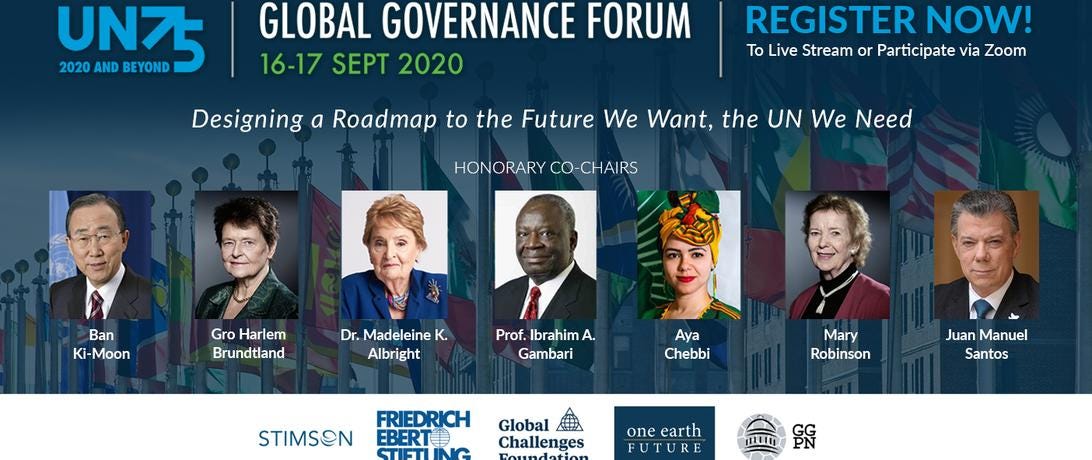



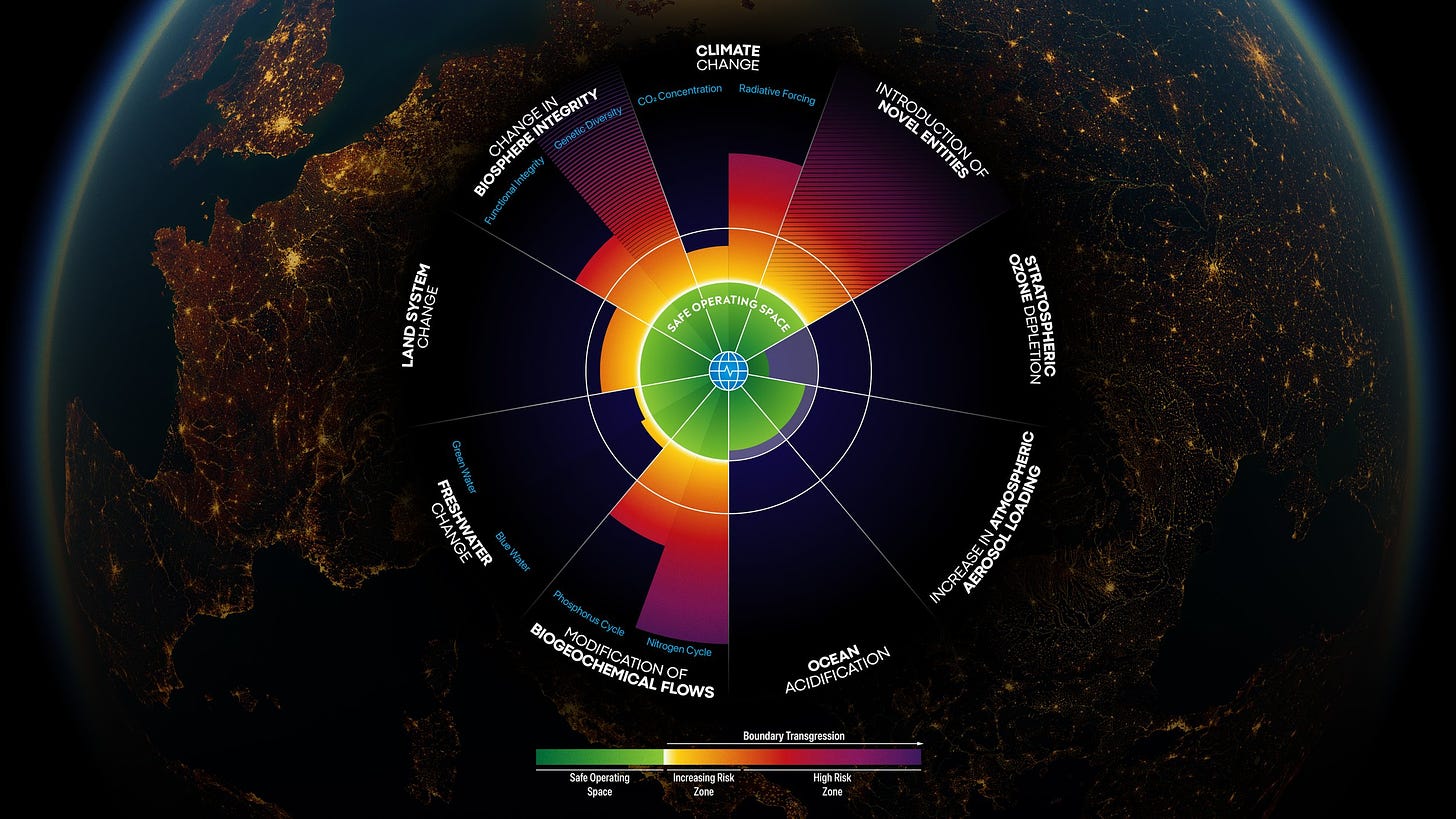

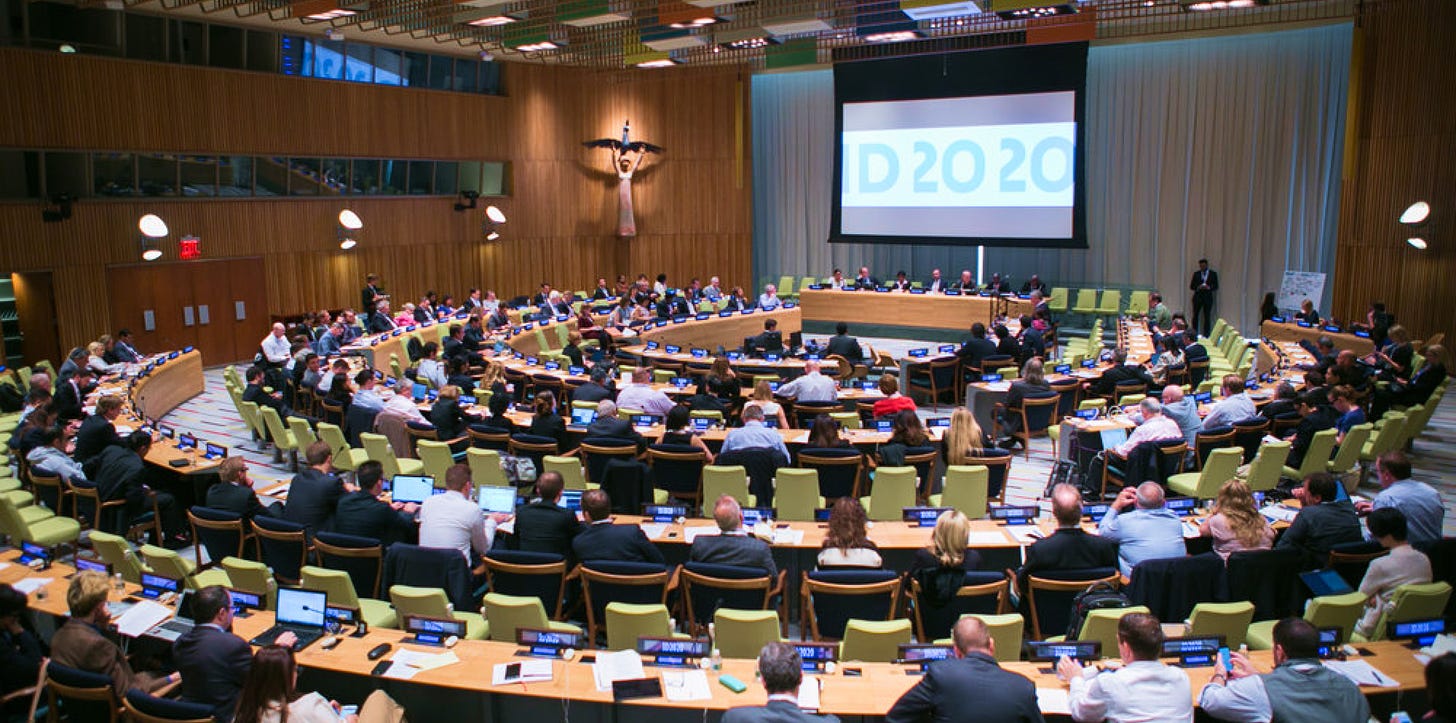


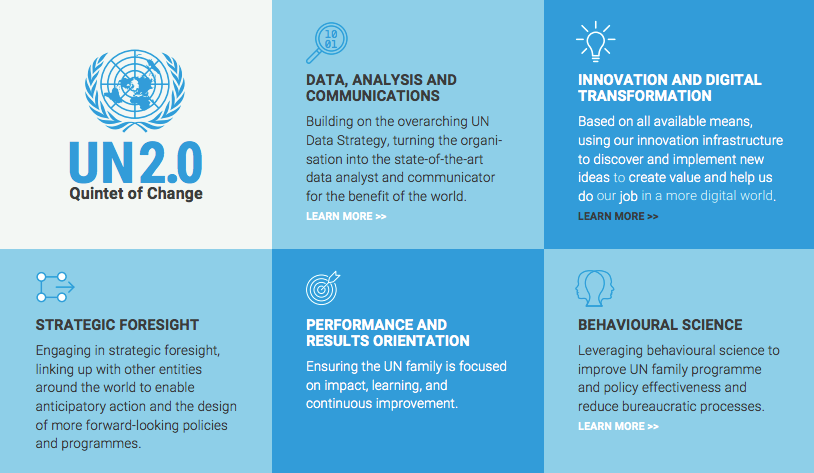

 Rethinking Srebrenica
Rethinking Srebrenica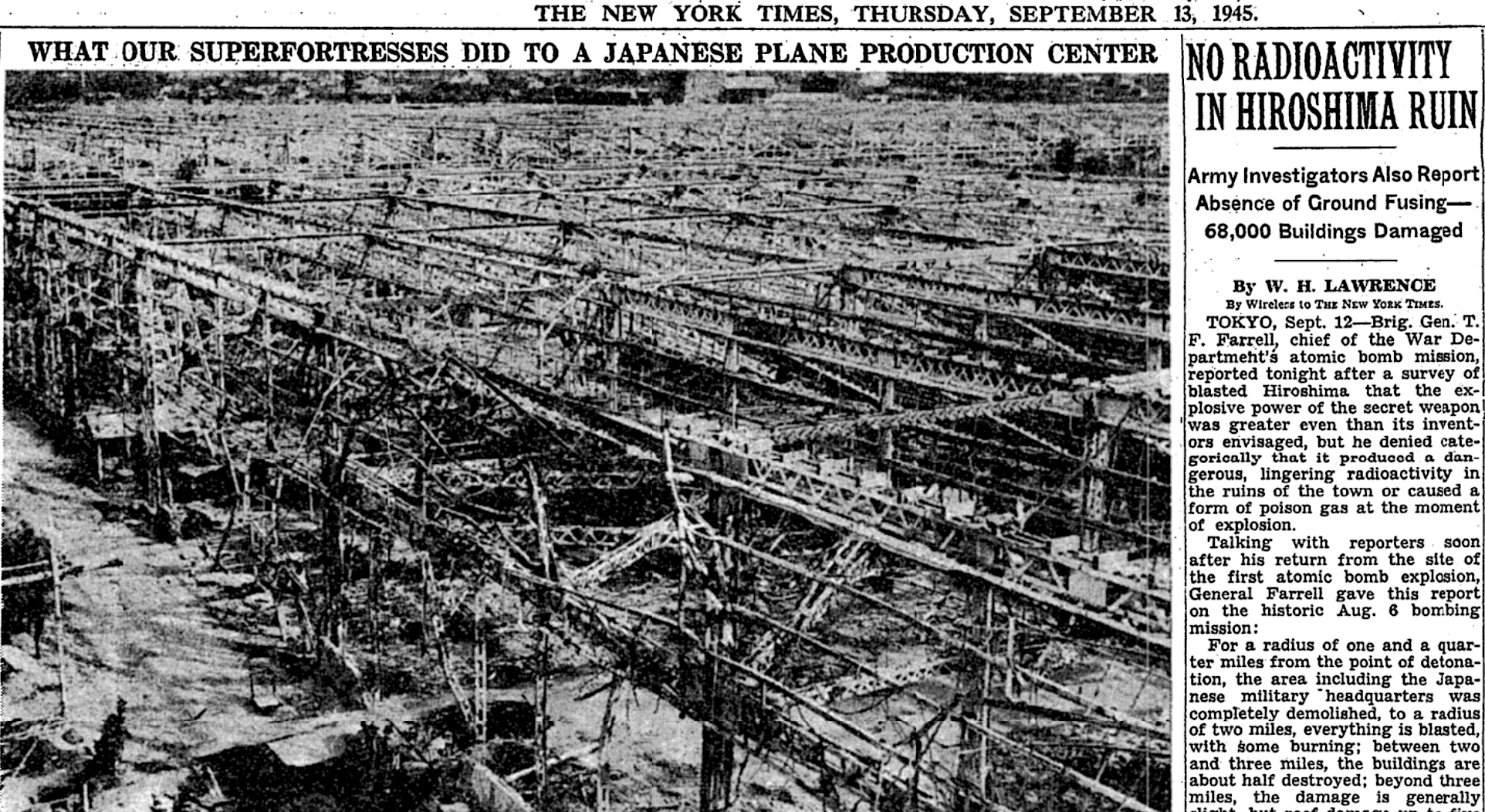

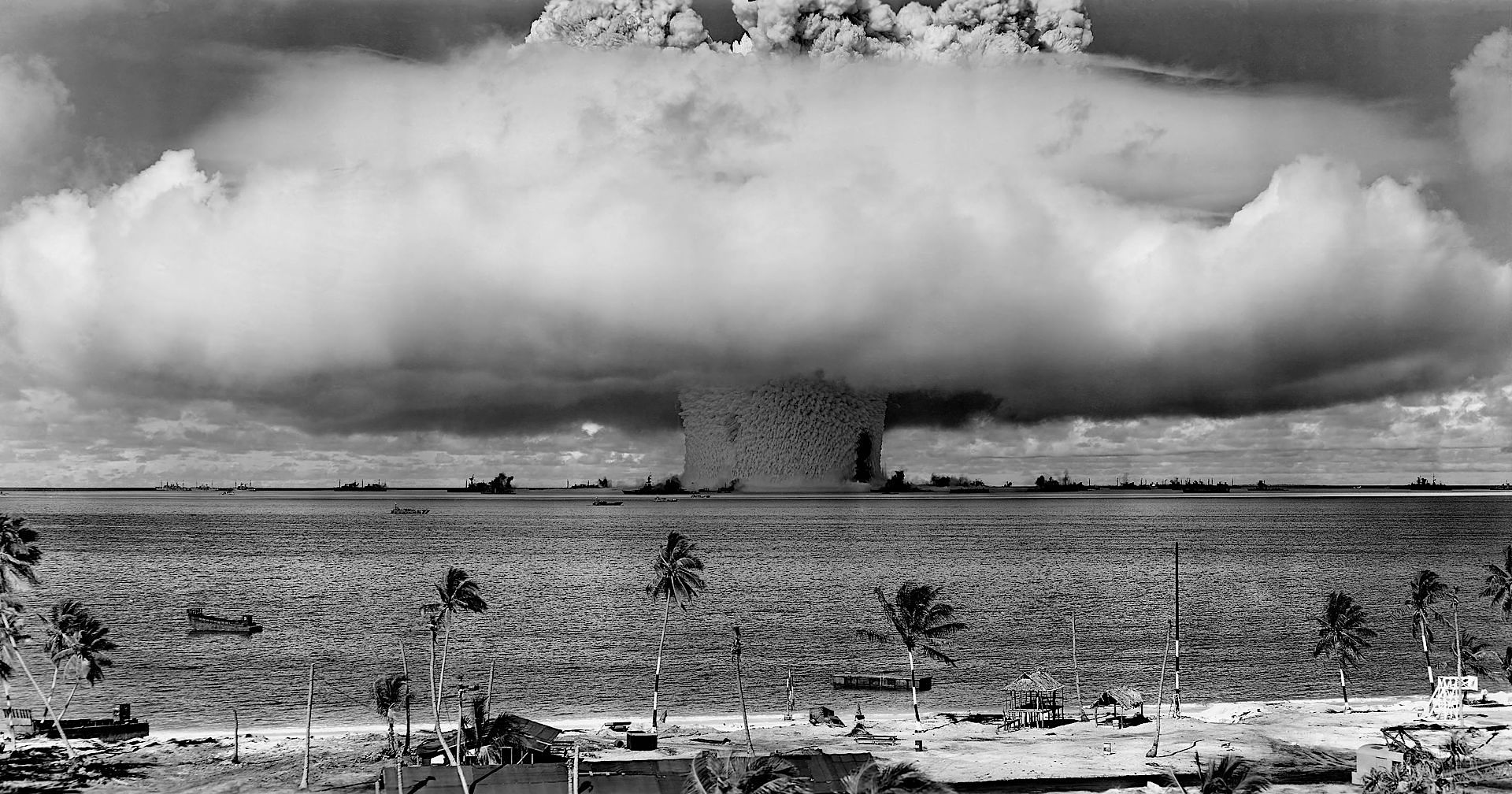

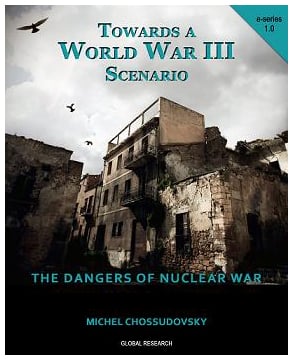

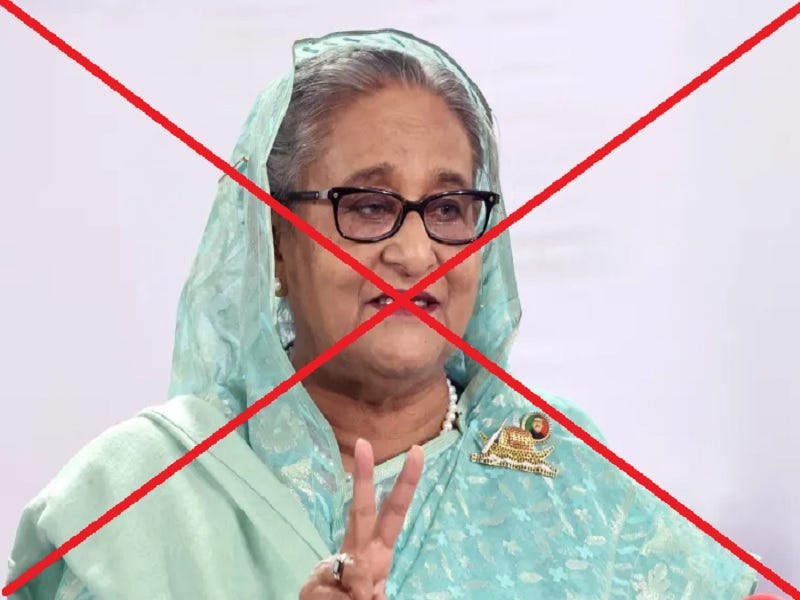

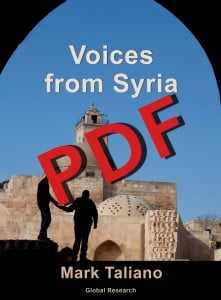

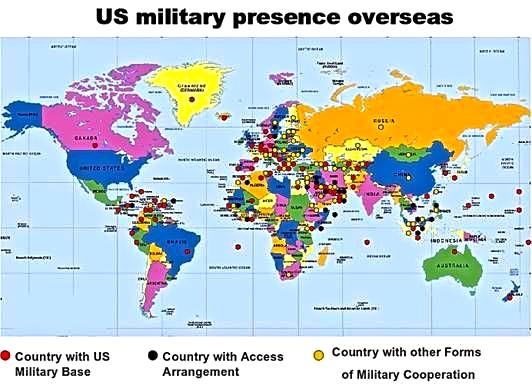



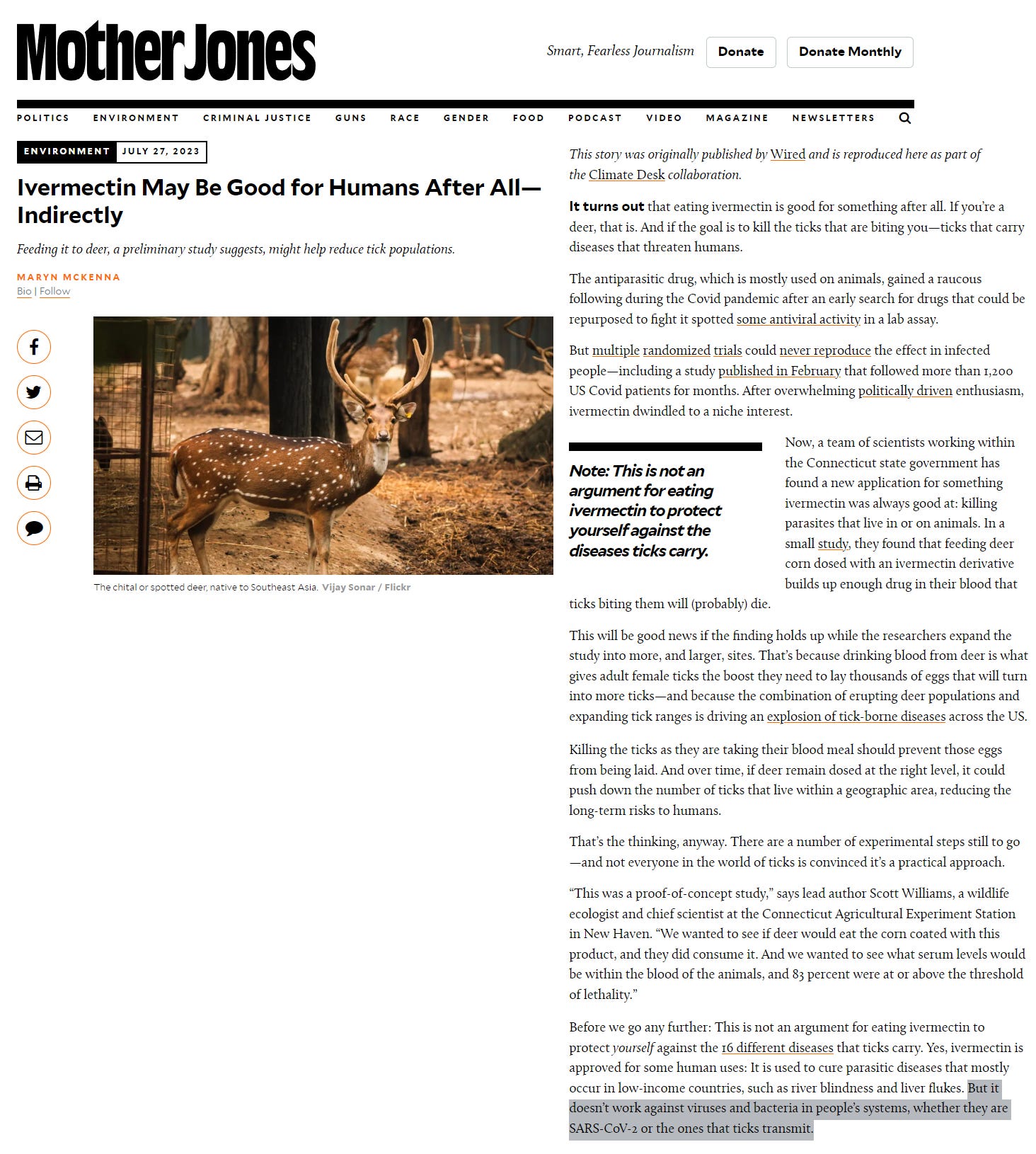








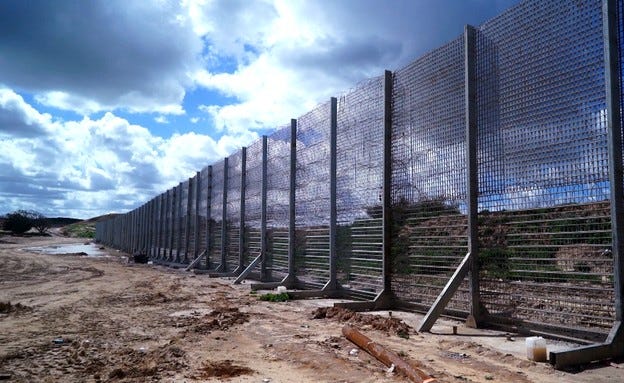
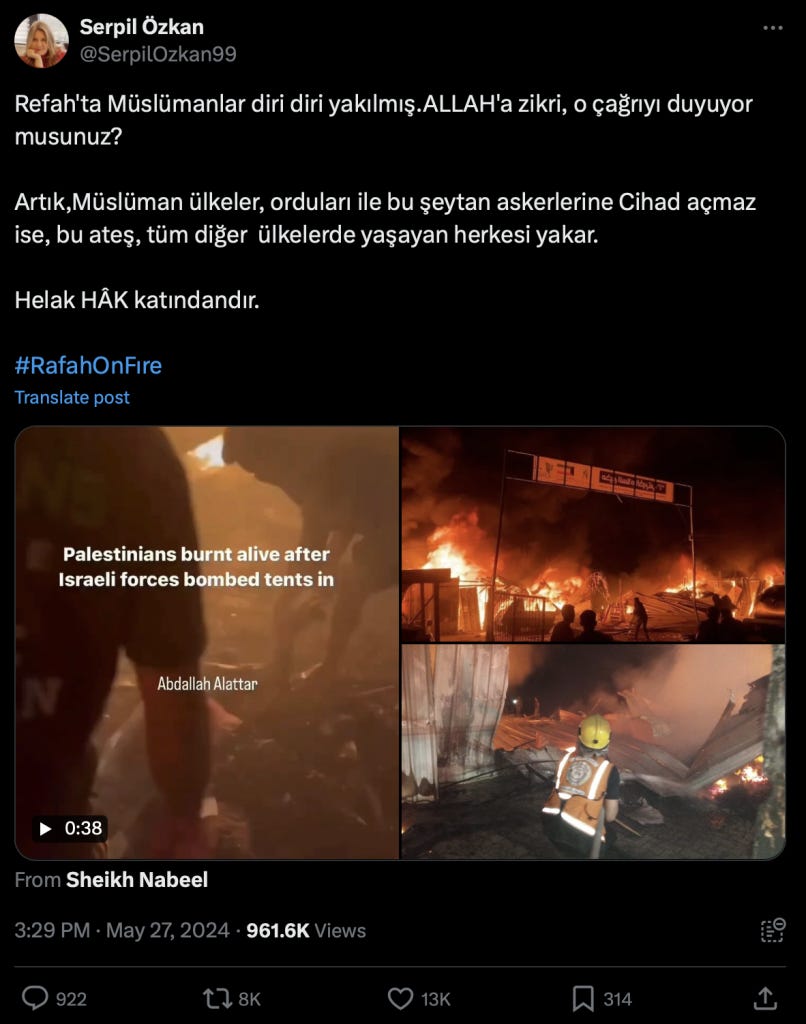
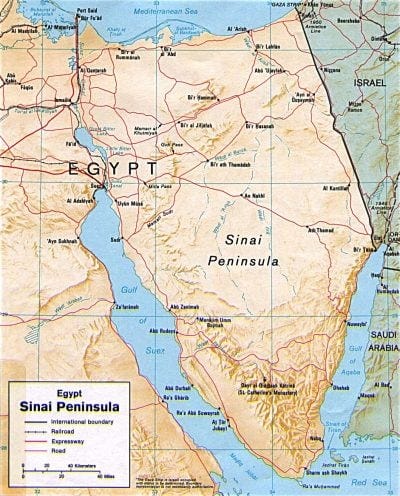
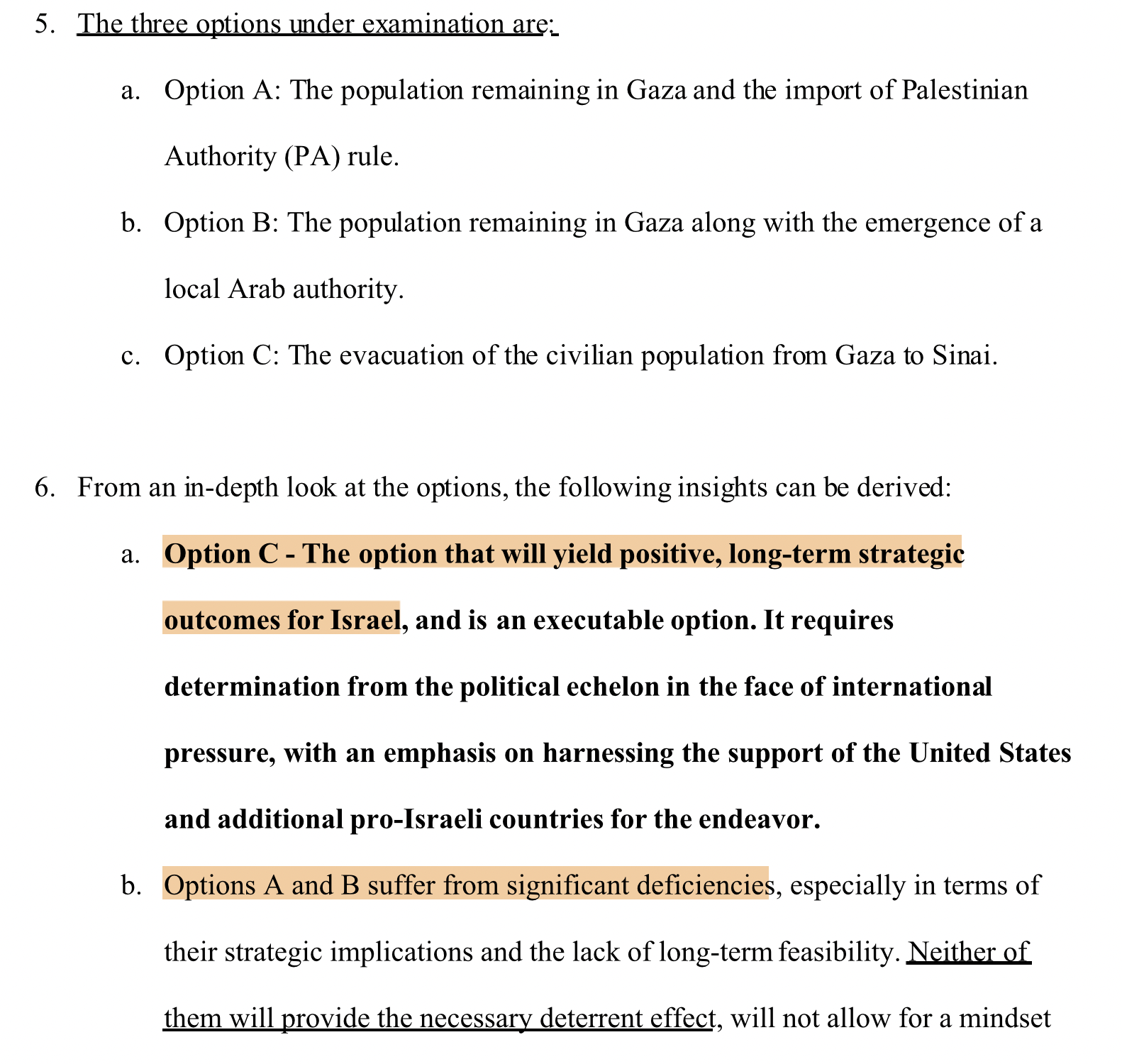
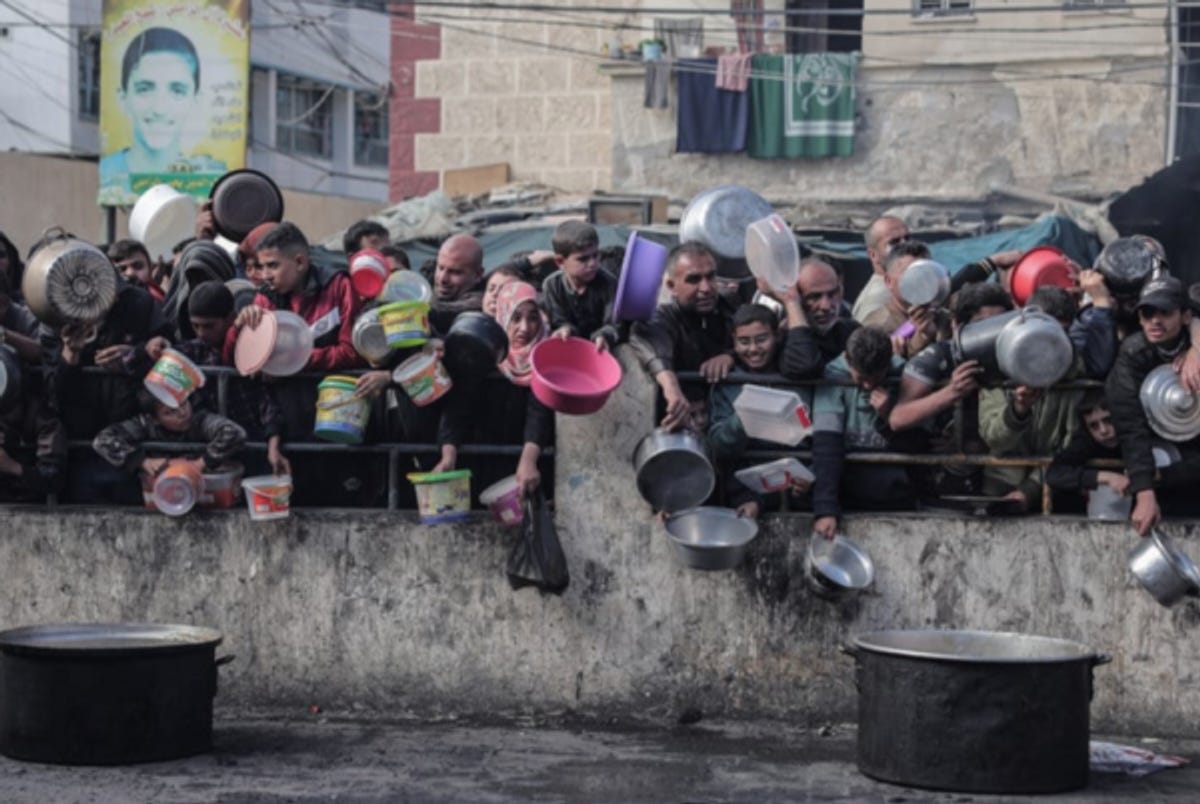

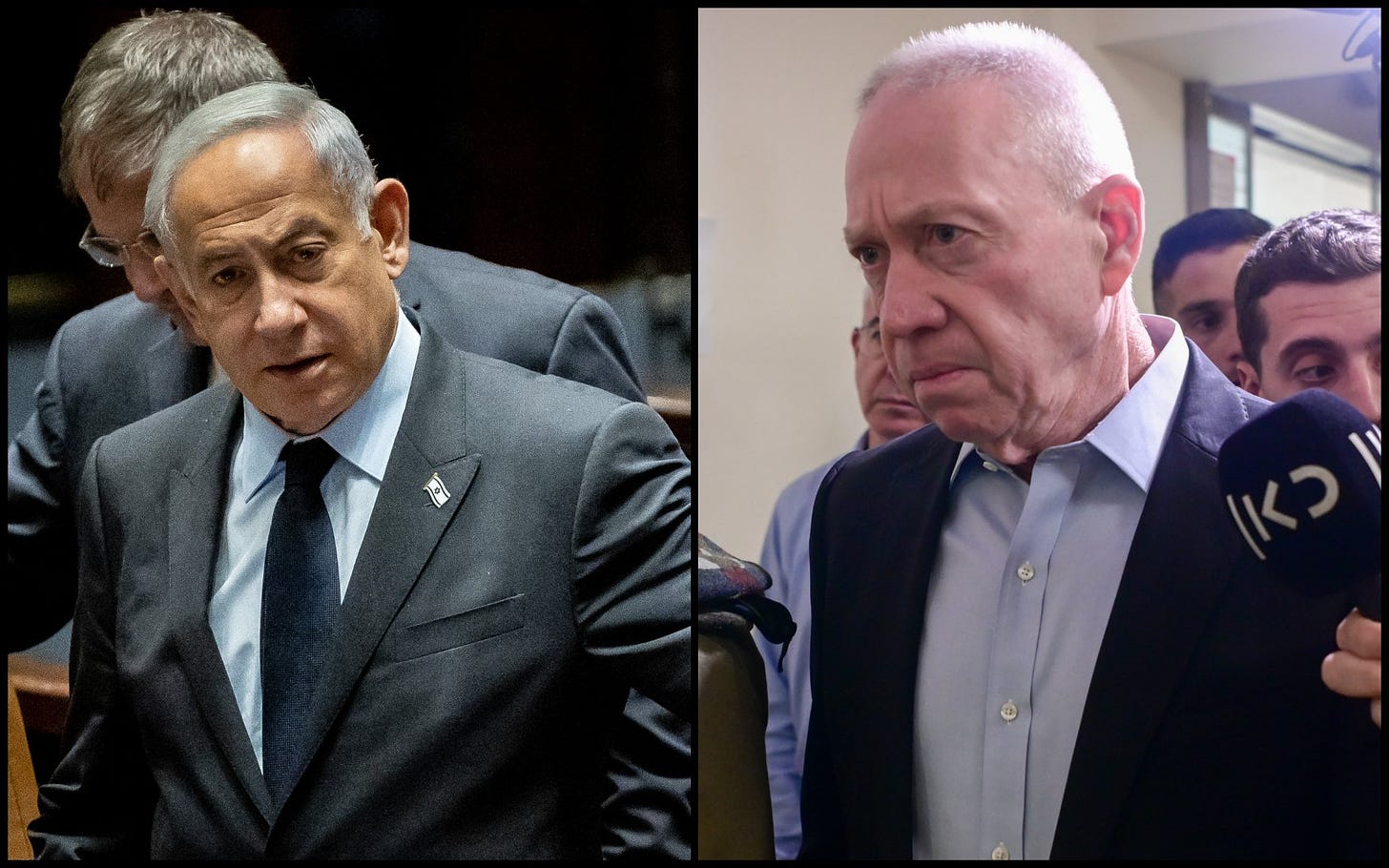
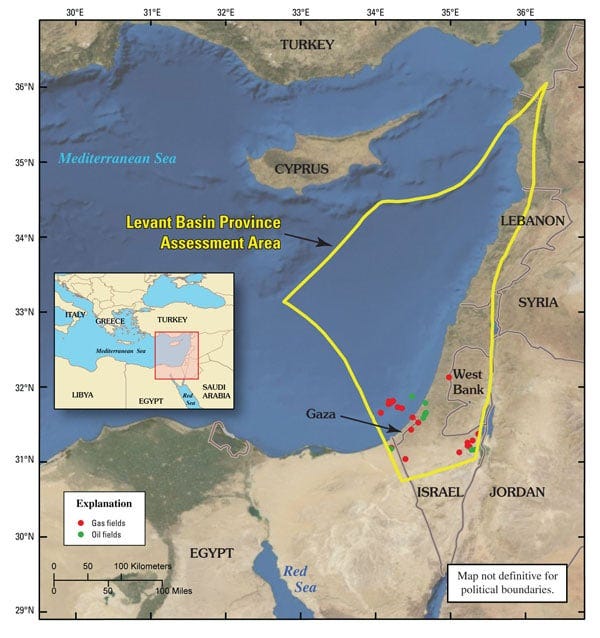
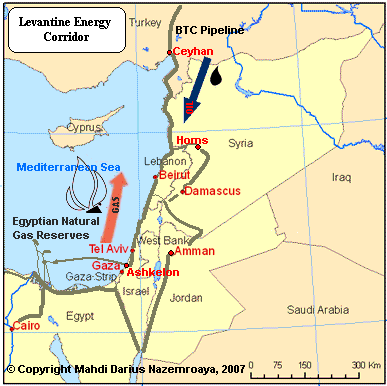









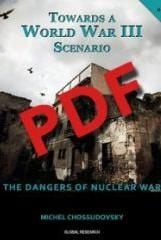

















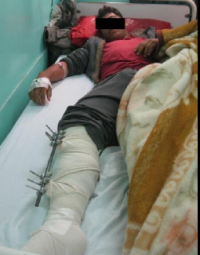




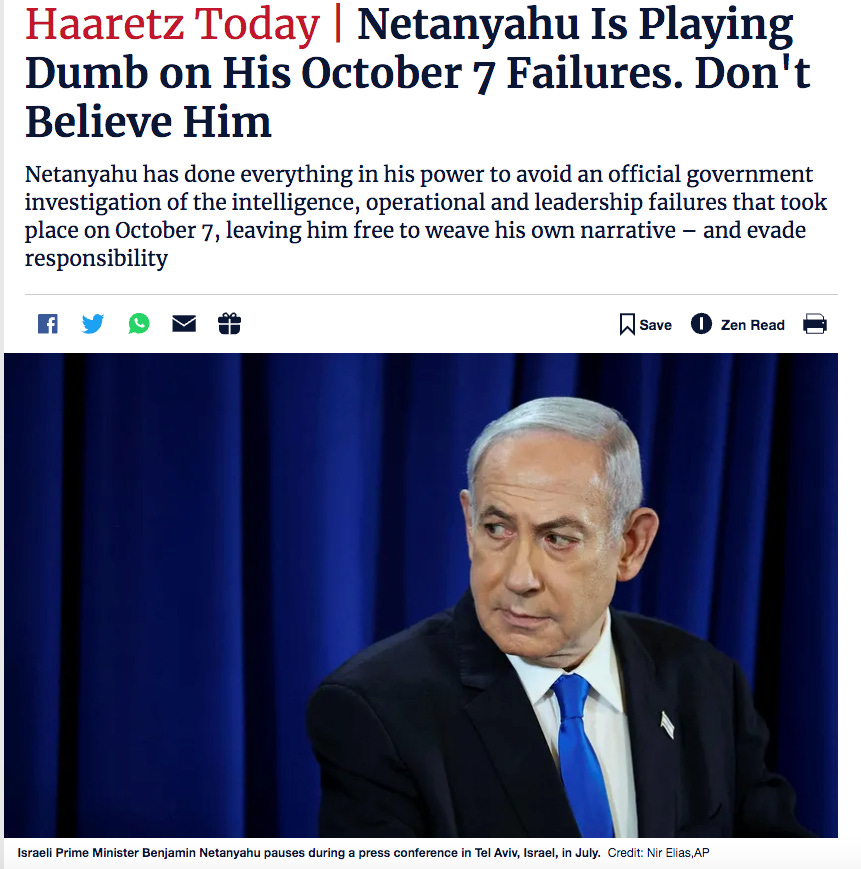
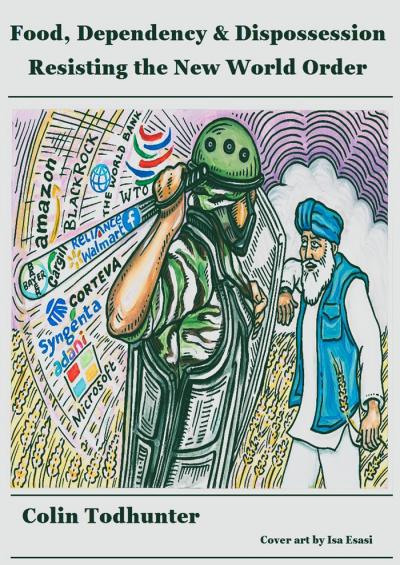 Read Colin Todhunter’s e-Book entitled
Read Colin Todhunter’s e-Book entitled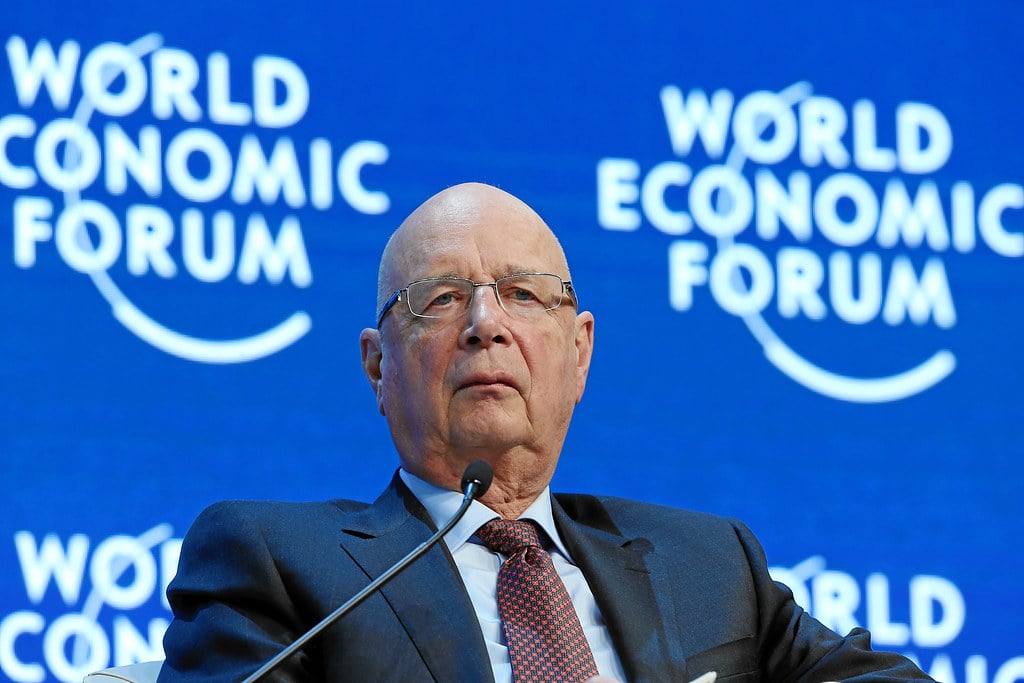


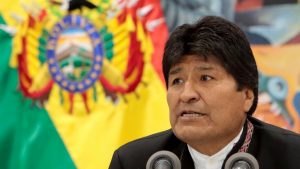


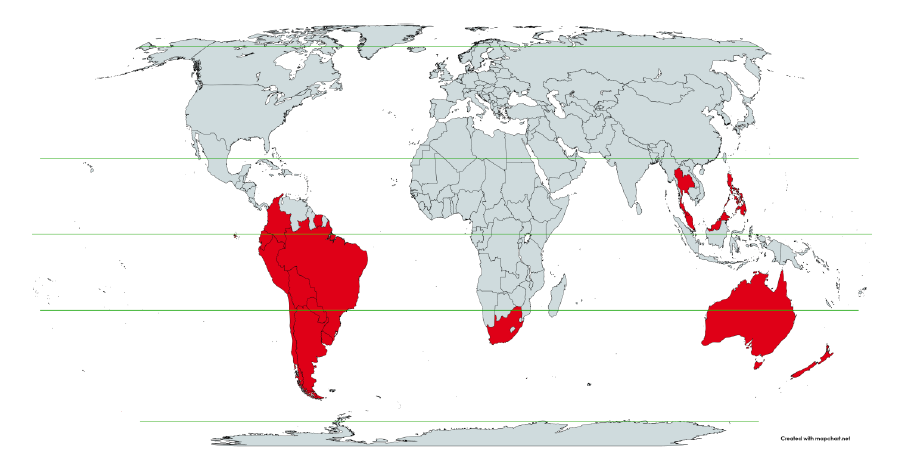
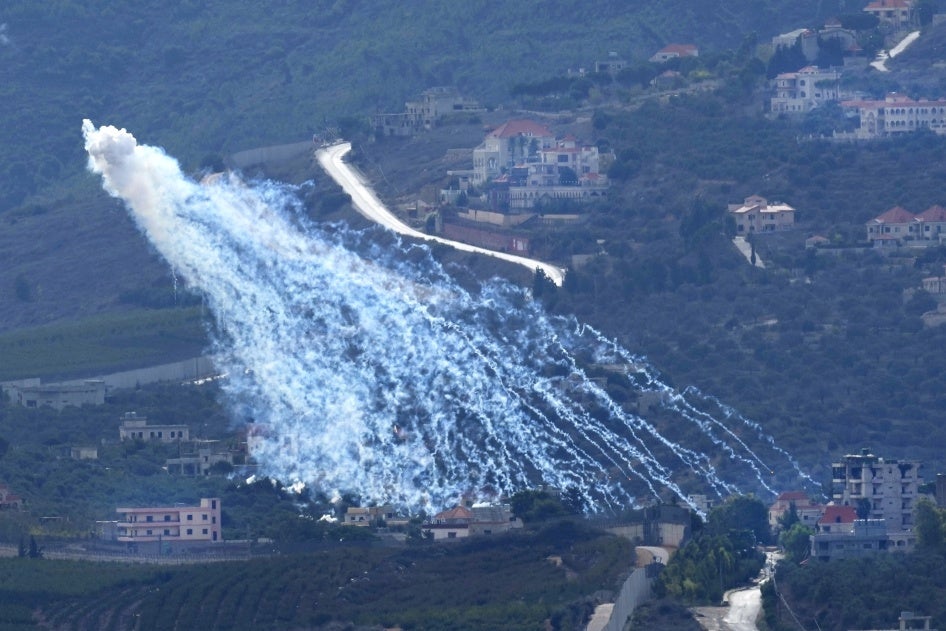




 The Worldwide Corona Crisis, Global Coup d’Etat Against Humanity
The Worldwide Corona Crisis, Global Coup d’Etat Against Humanity






 Largest Study of Its Kind Finds Excess Deaths During Pandemic Caused by Public Health Response, Not Virus
Largest Study of Its Kind Finds Excess Deaths During Pandemic Caused by Public Health Response, Not Virus 13 Nations Sign Agreement to Engineer Global Famine by Destroying Food Supply
13 Nations Sign Agreement to Engineer Global Famine by Destroying Food Supply Video: Detailed Analysis of Trump Assassination Attempt
Video: Detailed Analysis of Trump Assassination Attempt The French Fraudulent Disaster Elections. Peter Koenig
The French Fraudulent Disaster Elections. Peter Koenig Dr. Charles Hoffe Denounces the Covid Vaccine: “Biggest Disaster in Medical History”. Confronts College of Physicians and Surgeons of BC
Dr. Charles Hoffe Denounces the Covid Vaccine: “Biggest Disaster in Medical History”. Confronts College of Physicians and Surgeons of BC Finally, the Search Engine Better Than Google
Finally, the Search Engine Better Than Google France – The Satanic Olympics. The Macron Government Belongs to a Diabolical Cult
France – The Satanic Olympics. The Macron Government Belongs to a Diabolical Cult Why Is the West Preparing for War? Paul C. Roberts
Why Is the West Preparing for War? Paul C. Roberts German Government Admits There Was No Pandemic
German Government Admits There Was No Pandemic RussiaGate 2.0: Donald Trump Has Opted for “Real Peace” Negotiations with a “Foreign Adversary”
RussiaGate 2.0: Donald Trump Has Opted for “Real Peace” Negotiations with a “Foreign Adversary” Ophthalmologists Now Ethically Obligated to Denounce COVID-19 Vaccines, as 20,000 New Eye Disorders Are Reported
Ophthalmologists Now Ethically Obligated to Denounce COVID-19 Vaccines, as 20,000 New Eye Disorders Are Reported Attempted Assassination of Donald Trump. Secret Service Has Some ‘Splainin to Do
Attempted Assassination of Donald Trump. Secret Service Has Some ‘Splainin to Do False Flag Operation, The Lie becomes the Truth: “Israel is the Victim of Palestinian Aggression”. According to the ICC, “There Never Was A Genocide”.
False Flag Operation, The Lie becomes the Truth: “Israel is the Victim of Palestinian Aggression”. According to the ICC, “There Never Was A Genocide”. “Alarming 3000% Increase in Unexplained Child Deaths in Alberta”: Medical Doctors and Scientists’ Press Conference
“Alarming 3000% Increase in Unexplained Child Deaths in Alberta”: Medical Doctors and Scientists’ Press Conference Guess Who Are the Real Protagonists of Anti-Semitism
Guess Who Are the Real Protagonists of Anti-Semitism Kamala, Heir to the Neoliberal Throne, Promotes Depopulation for Climate Change™
Kamala, Heir to the Neoliberal Throne, Promotes Depopulation for Climate Change™ Pfizer’s “Secret” Report on the Covid “Vaccine”. Beyond Manslaughter. The Evidence is Overwhelming. The Vaccine Should Be Immediately Withdrawn Worldwide
Pfizer’s “Secret” Report on the Covid “Vaccine”. Beyond Manslaughter. The Evidence is Overwhelming. The Vaccine Should Be Immediately Withdrawn Worldwide The Brave New World of 2030: ‘You’ll Own Nothing. And You’ll be Happy.’
The Brave New World of 2030: ‘You’ll Own Nothing. And You’ll be Happy.’ How Crooks Was Recruited as the Patsy?
How Crooks Was Recruited as the Patsy? Biden Refuses to Resign, “A Dangerous President” if He Remains in Office Until January 20, 2025. Plenty of Time to Create Chaos and Disaster?
Biden Refuses to Resign, “A Dangerous President” if He Remains in Office Until January 20, 2025. Plenty of Time to Create Chaos and Disaster?





























